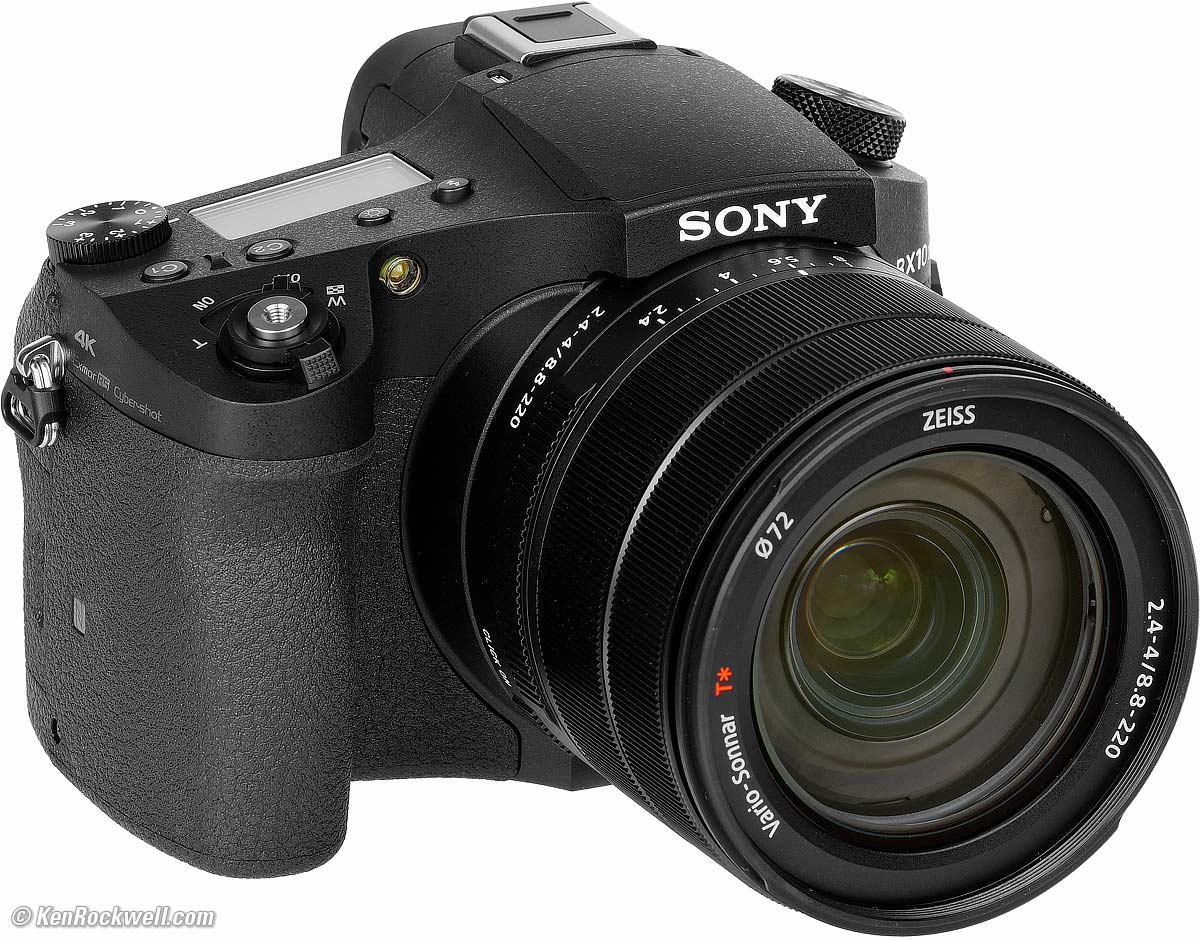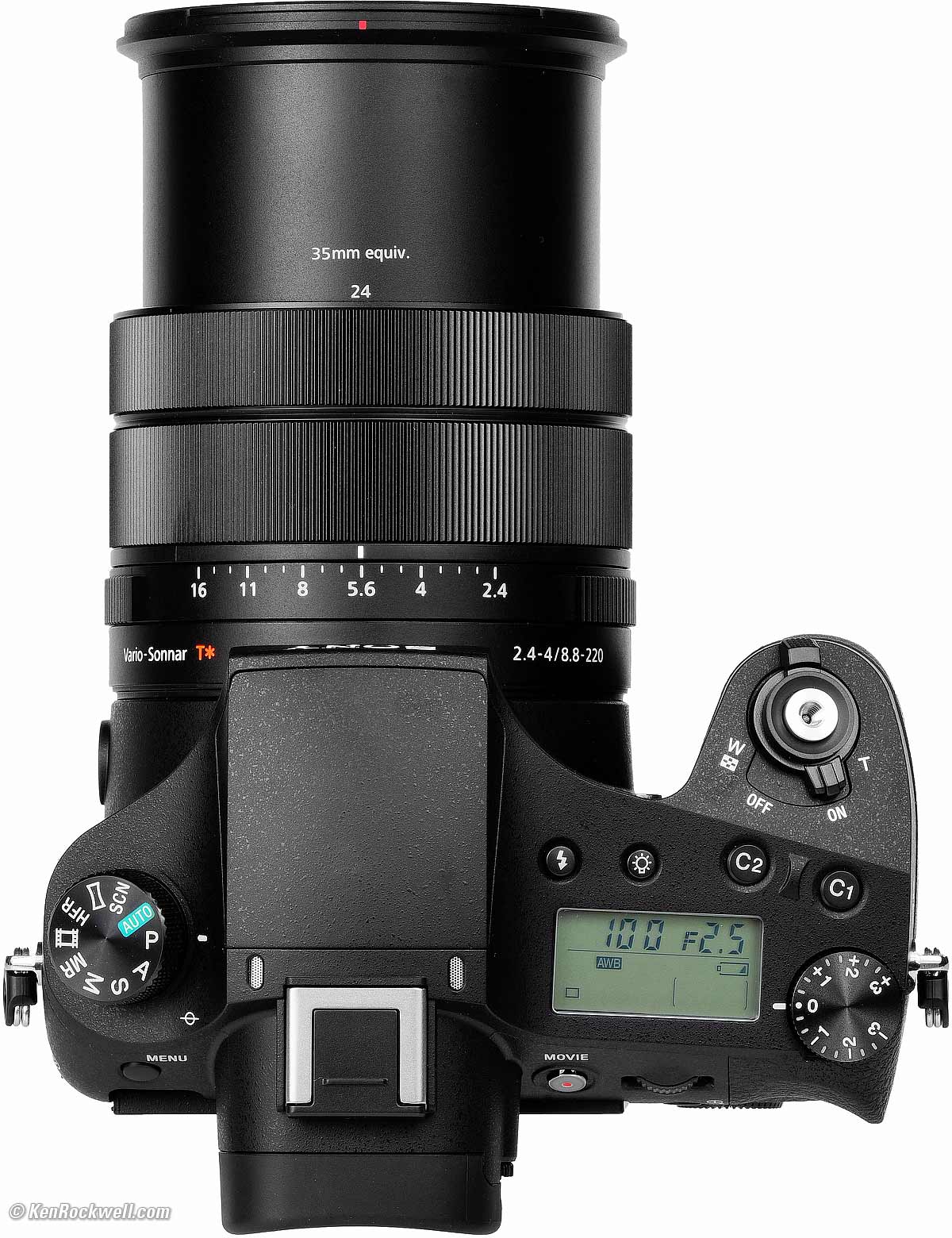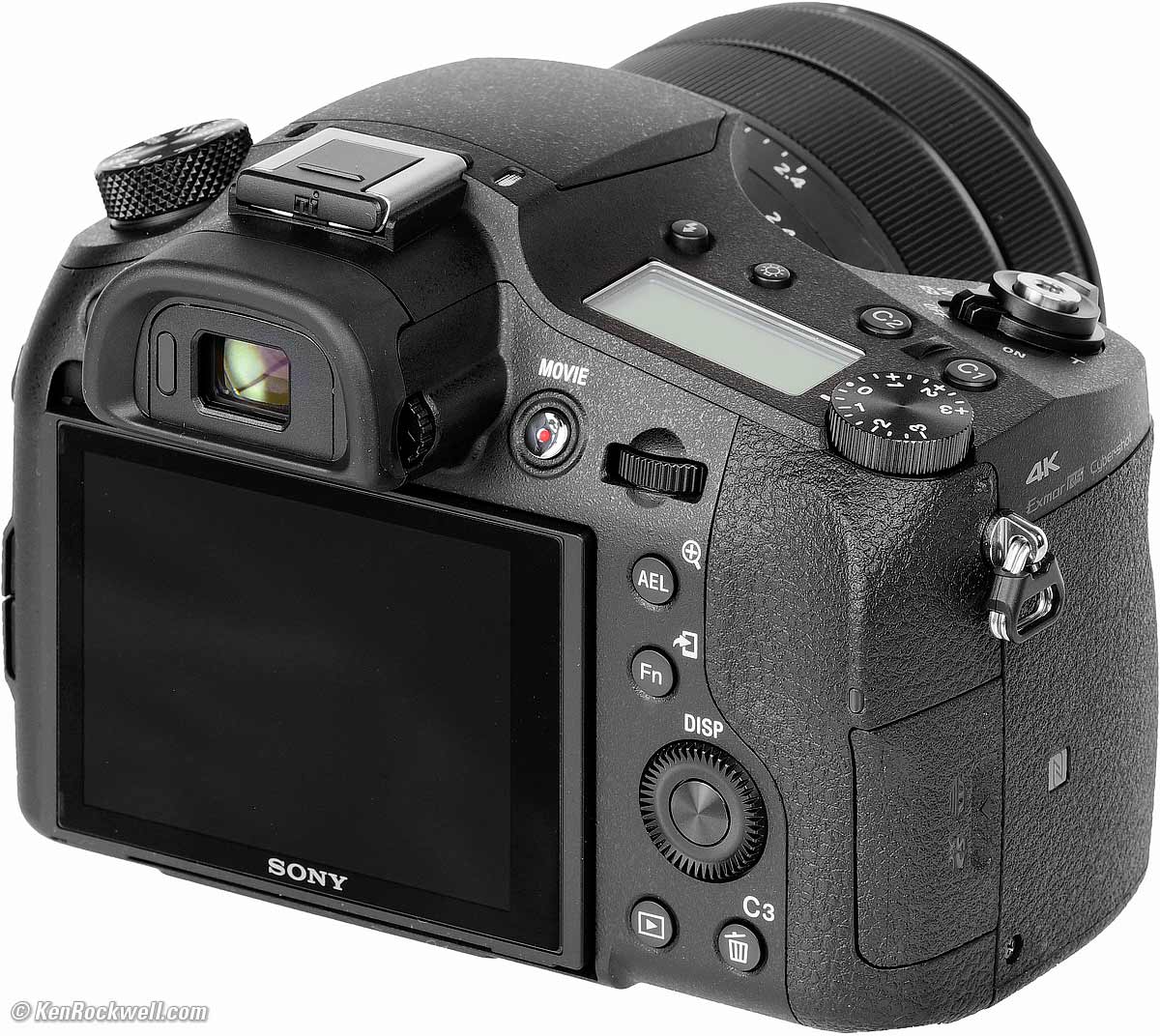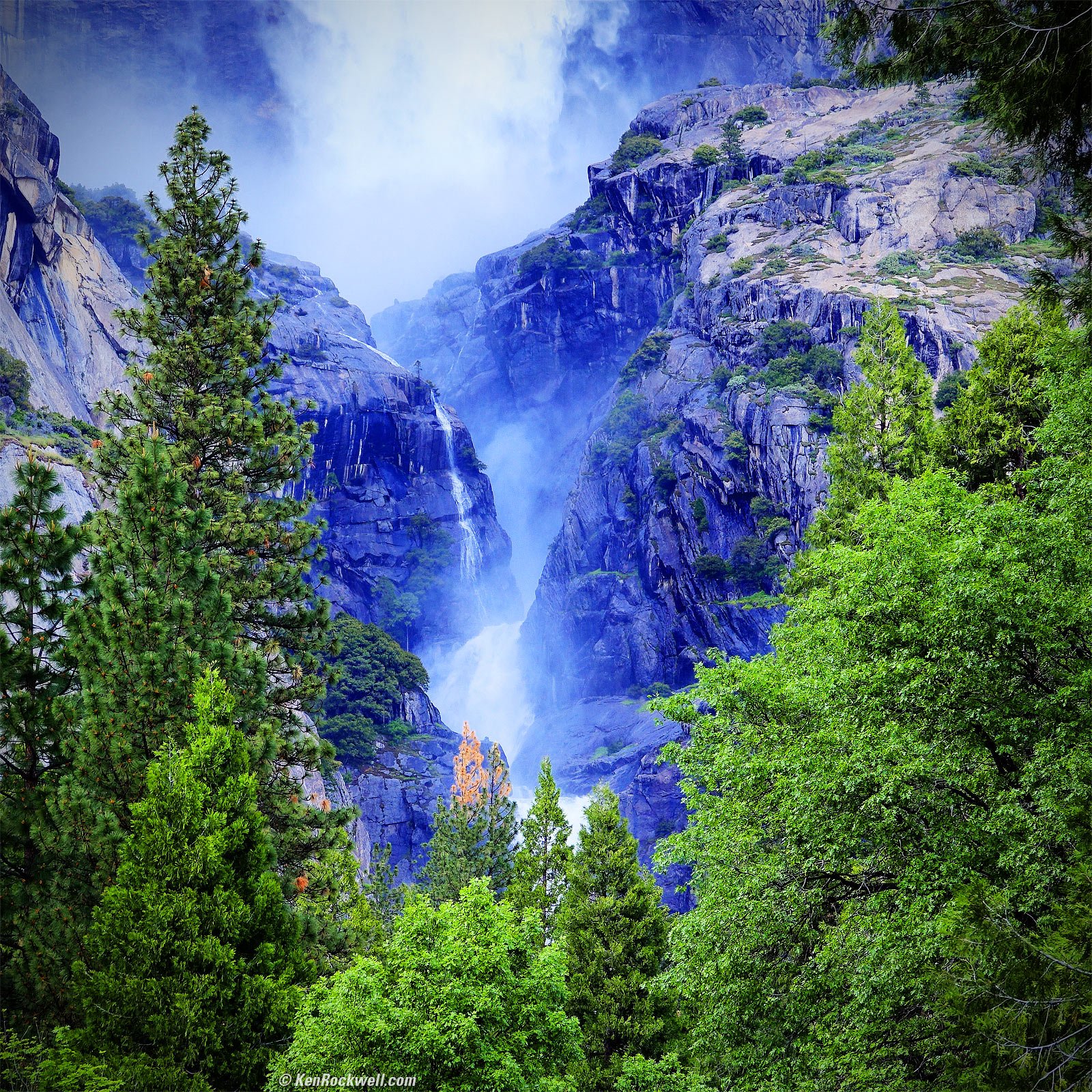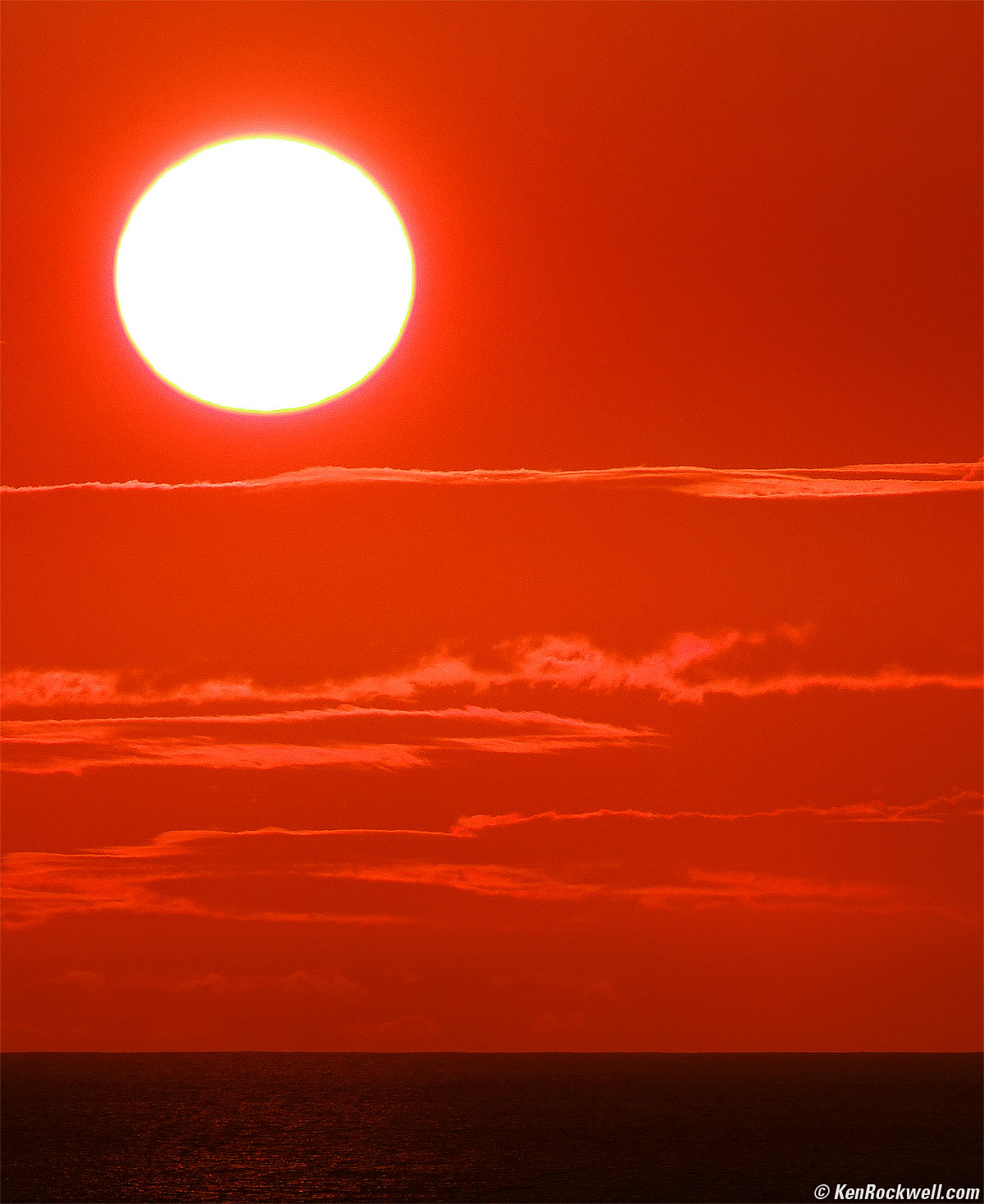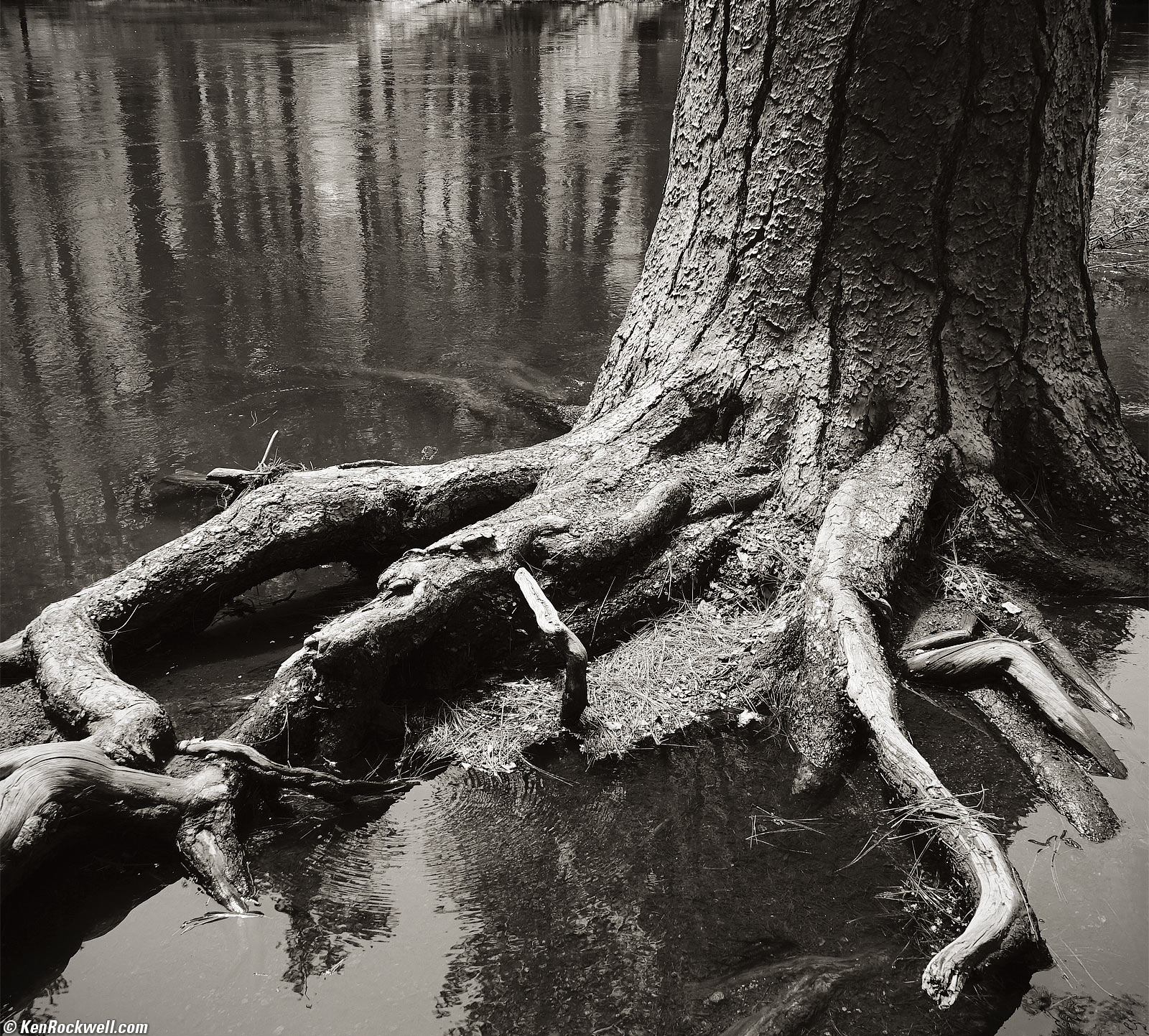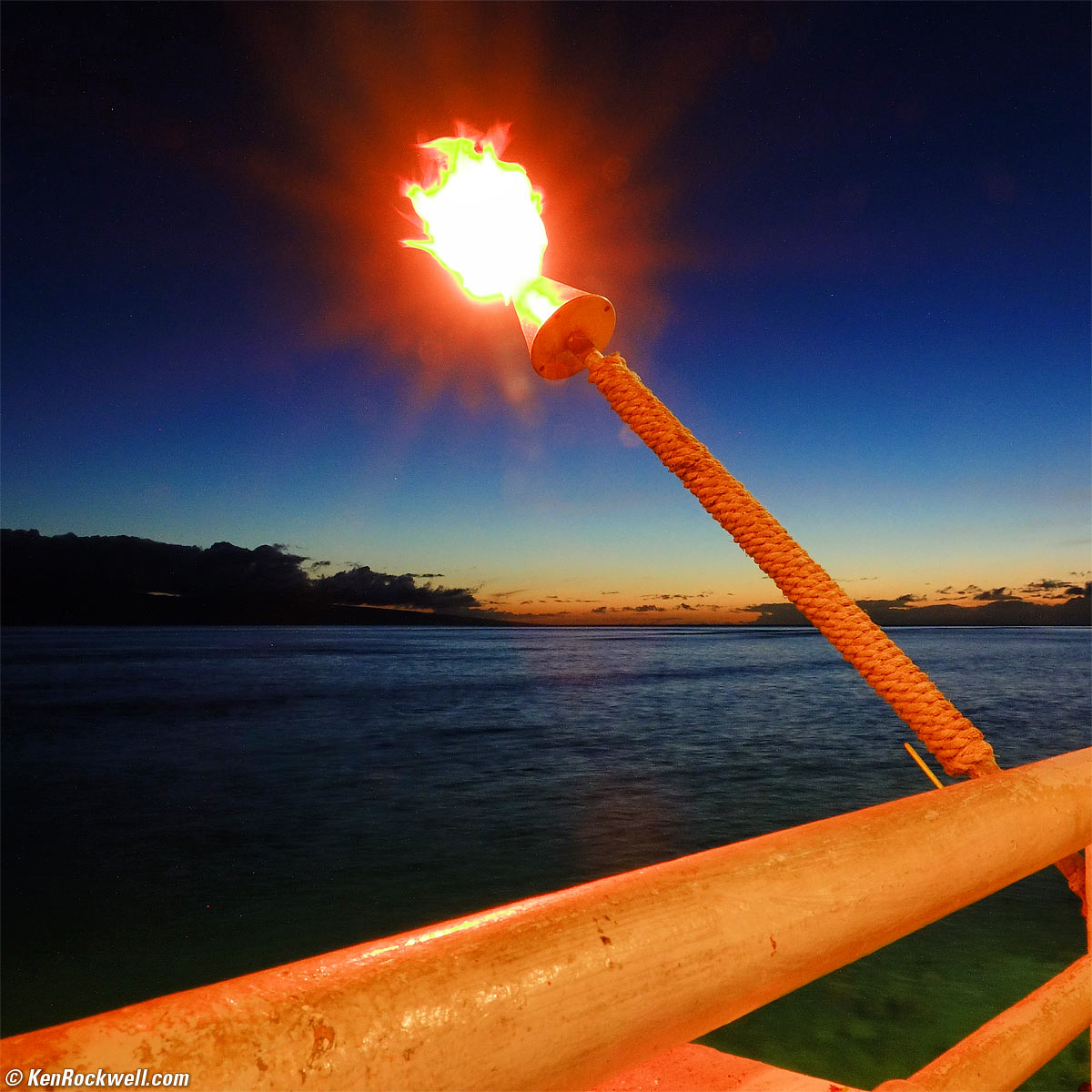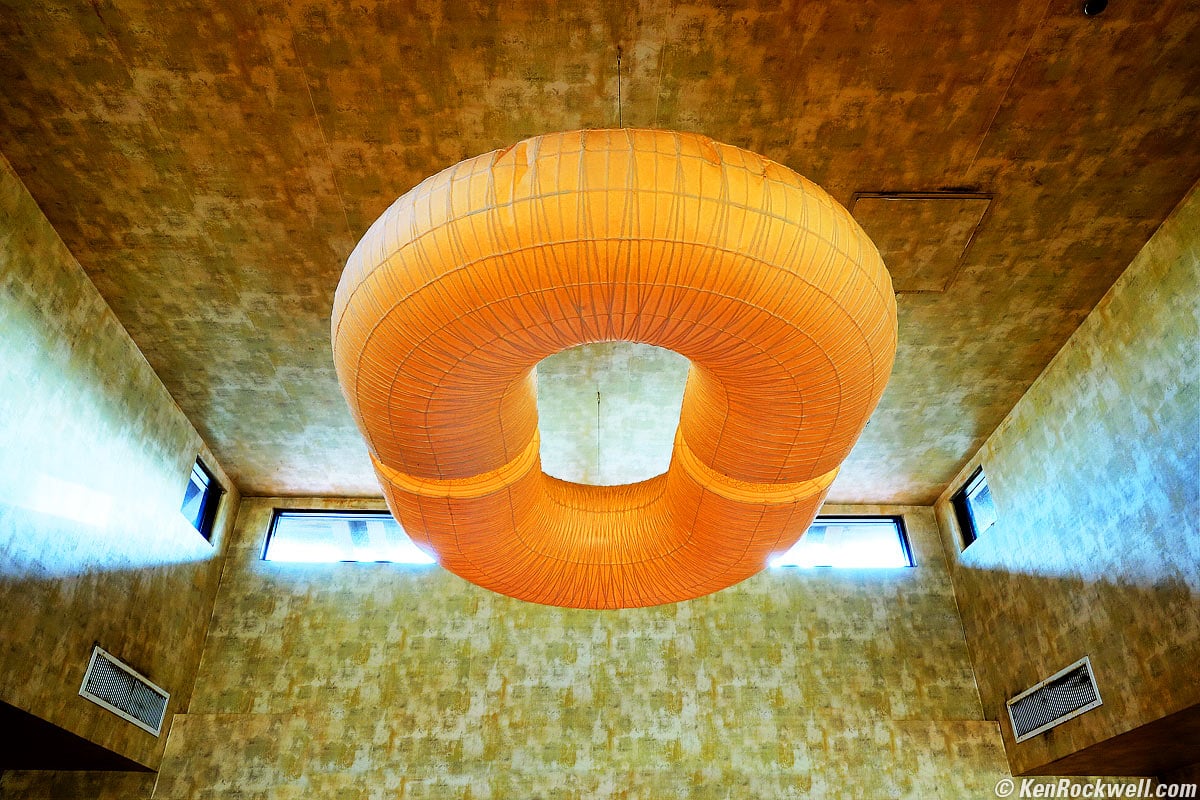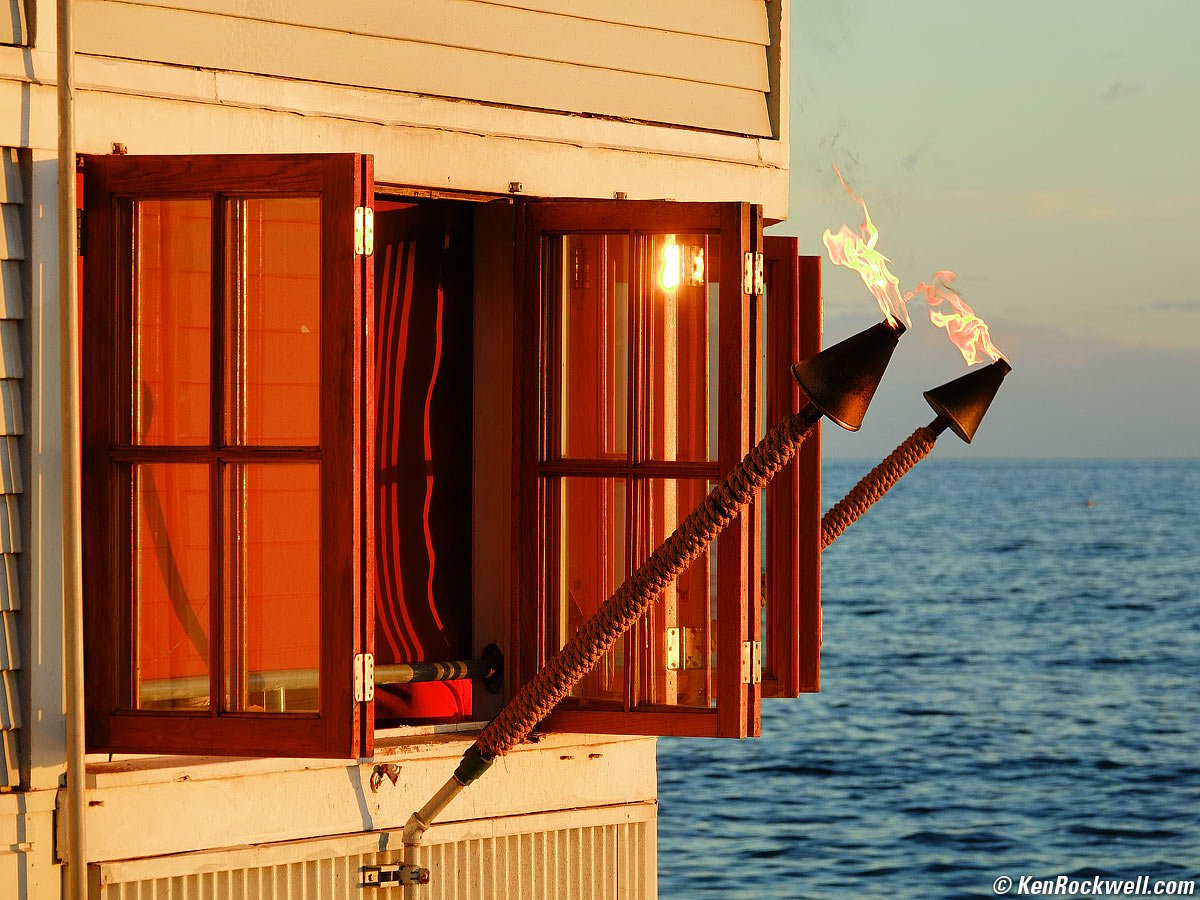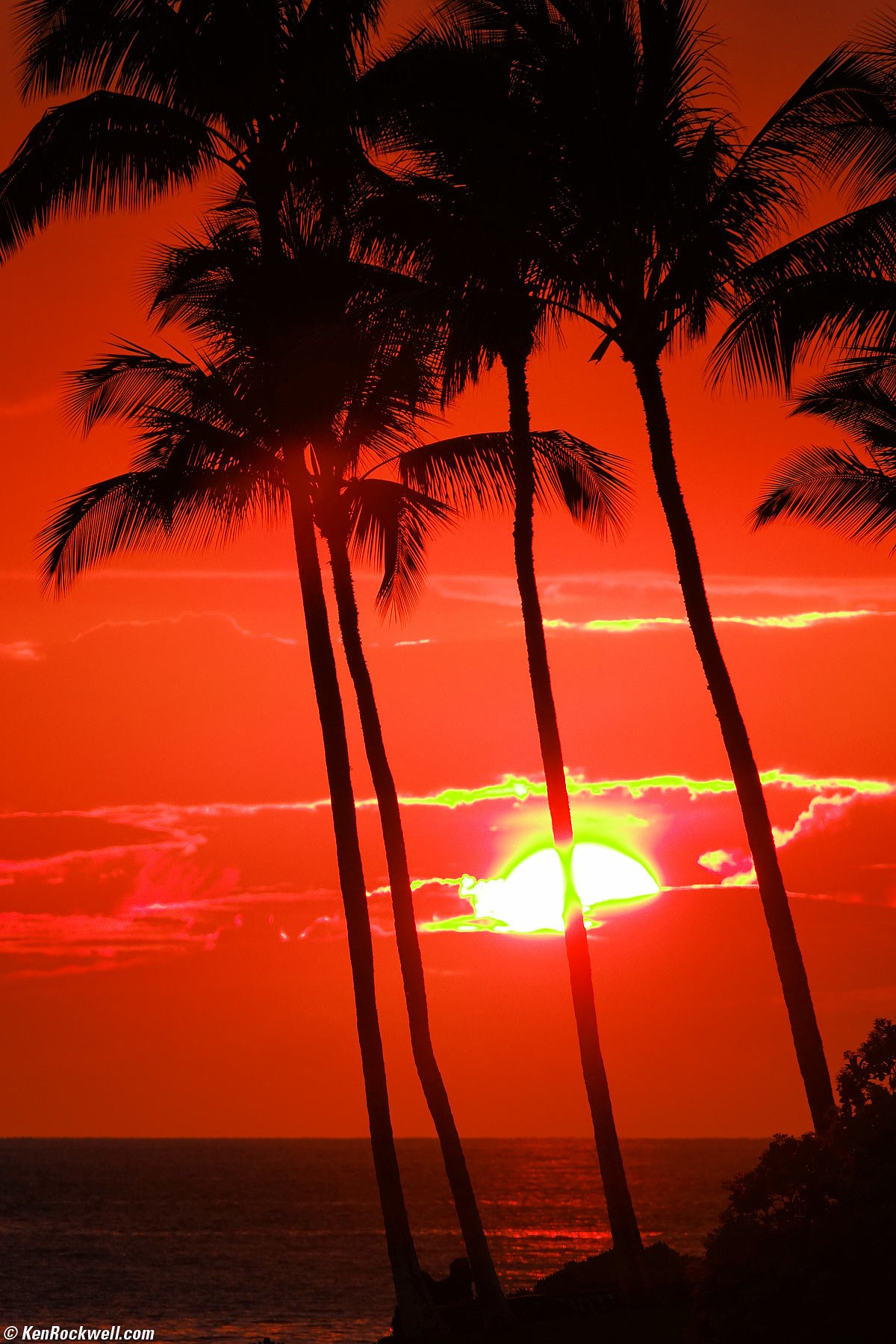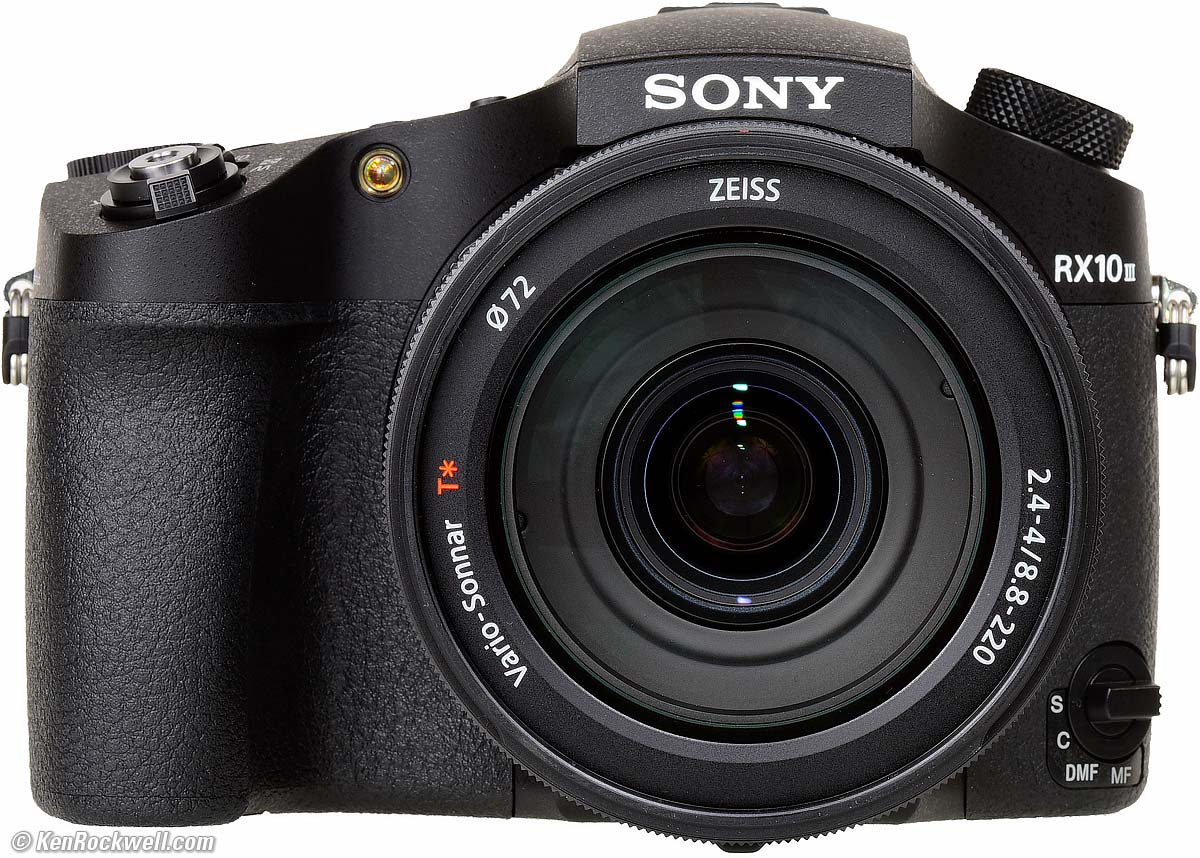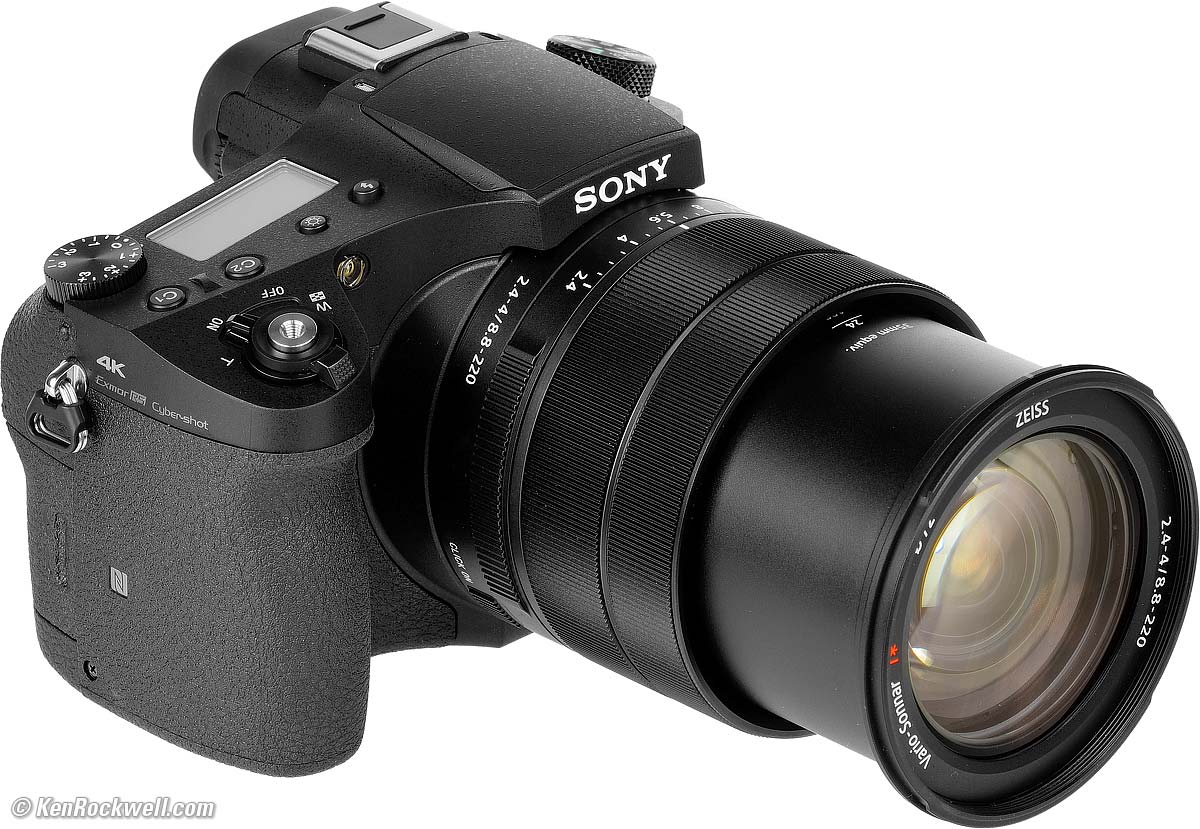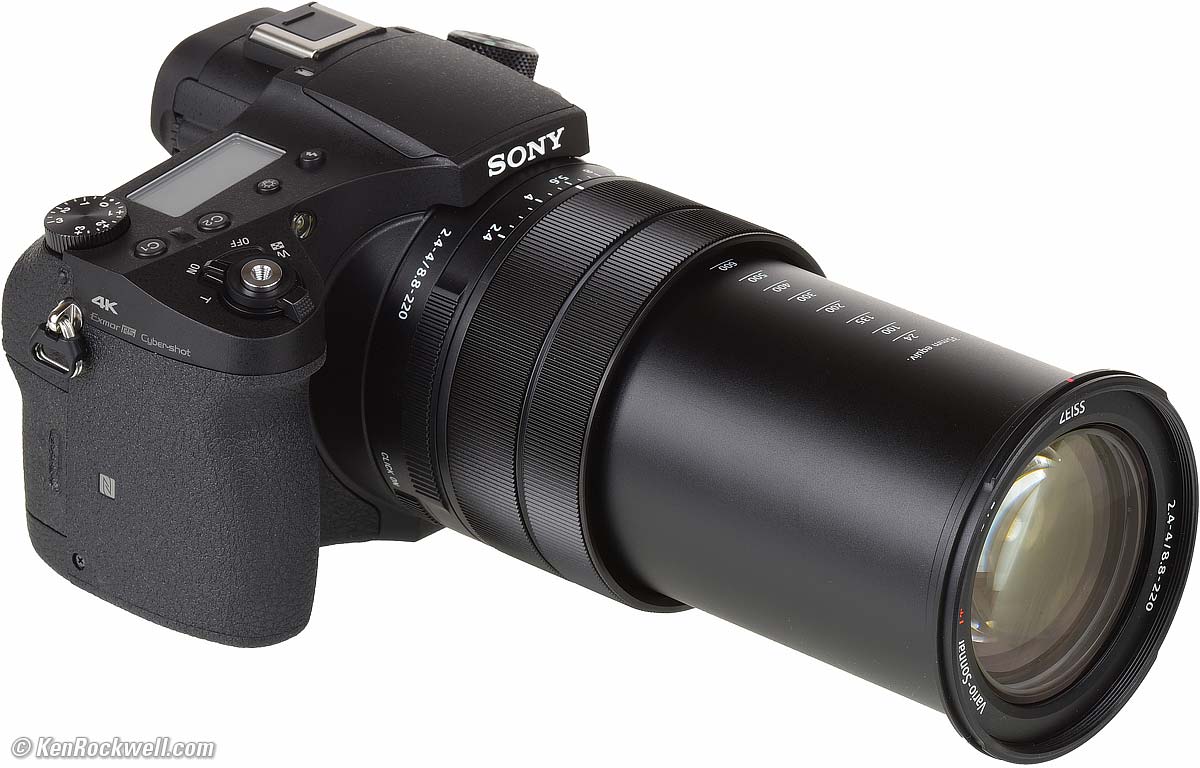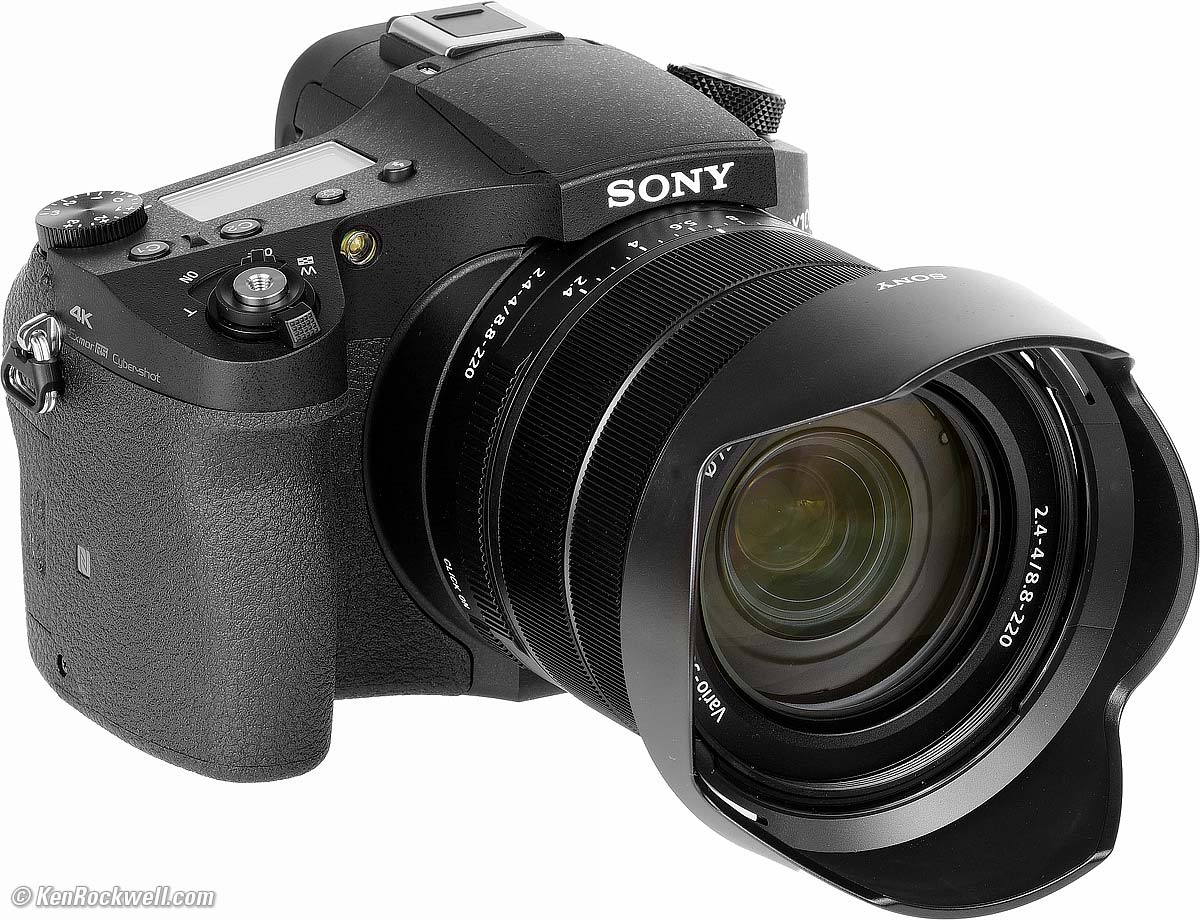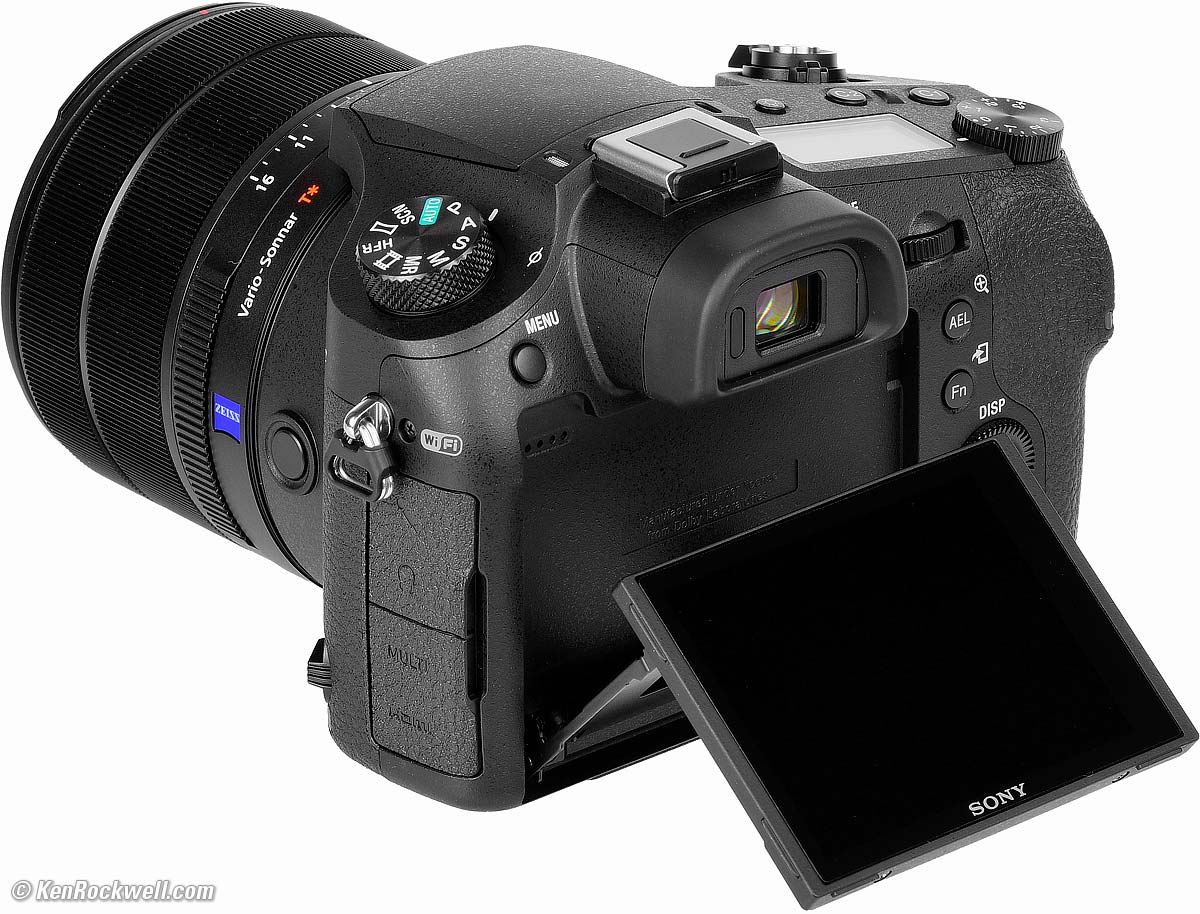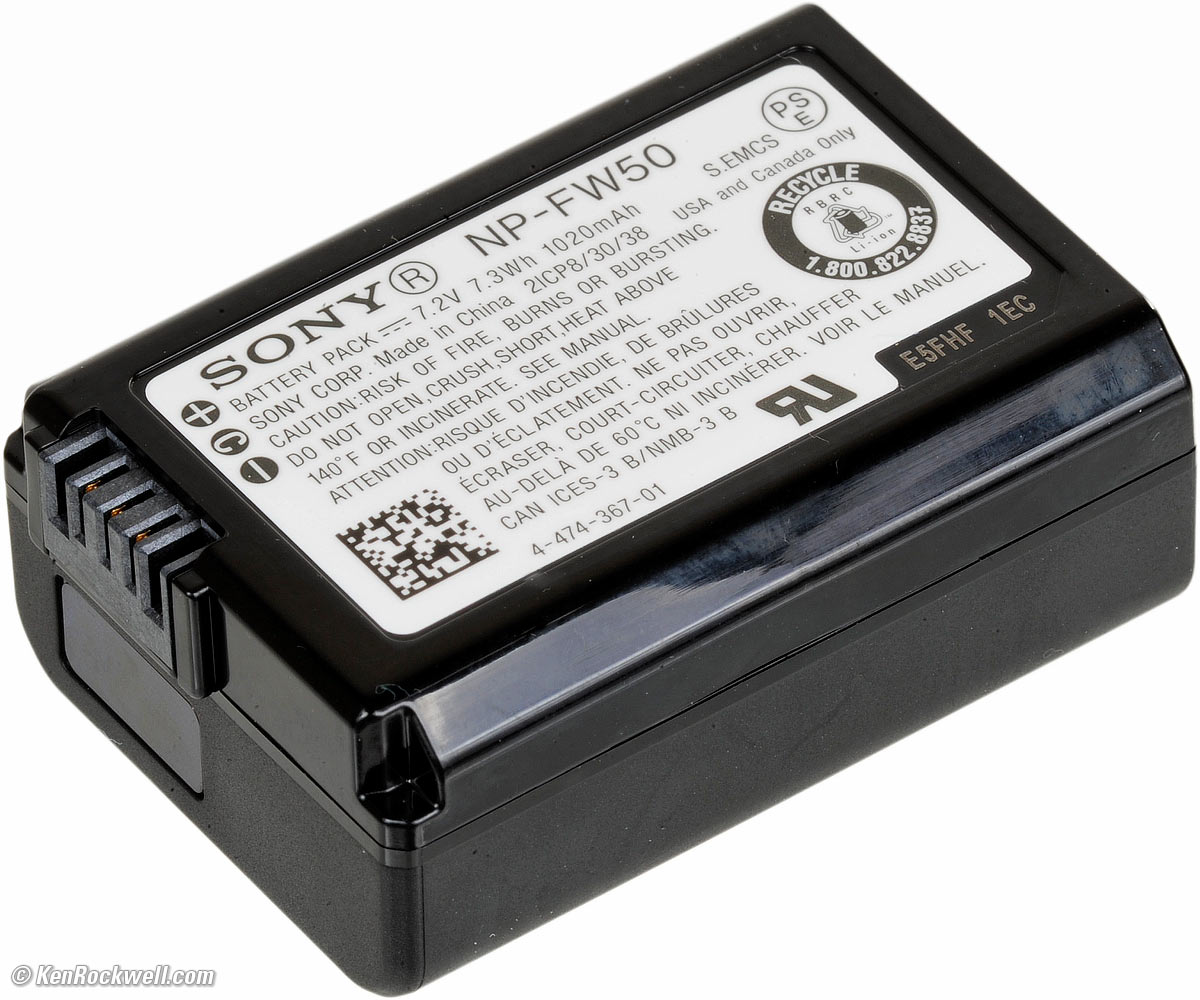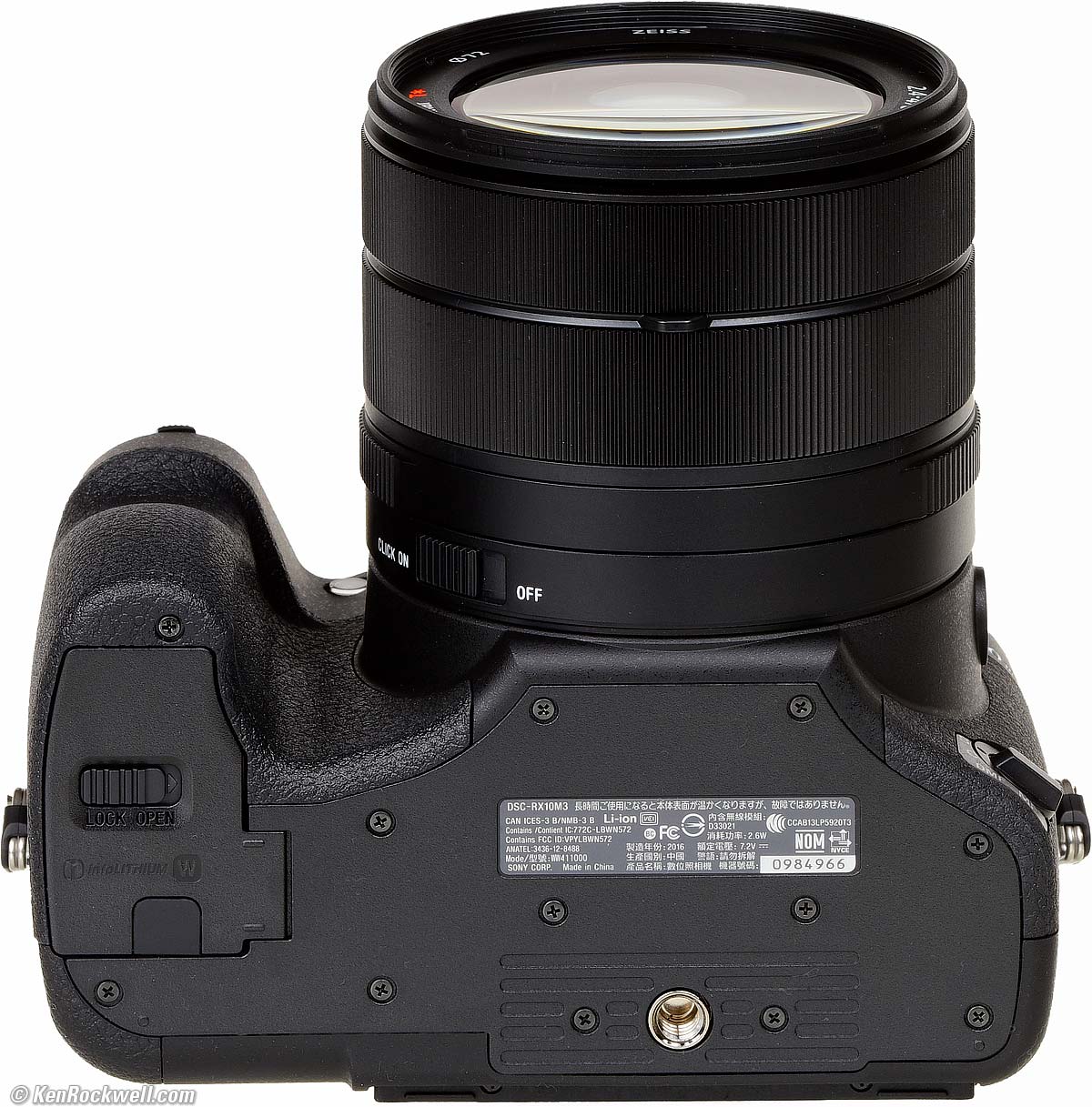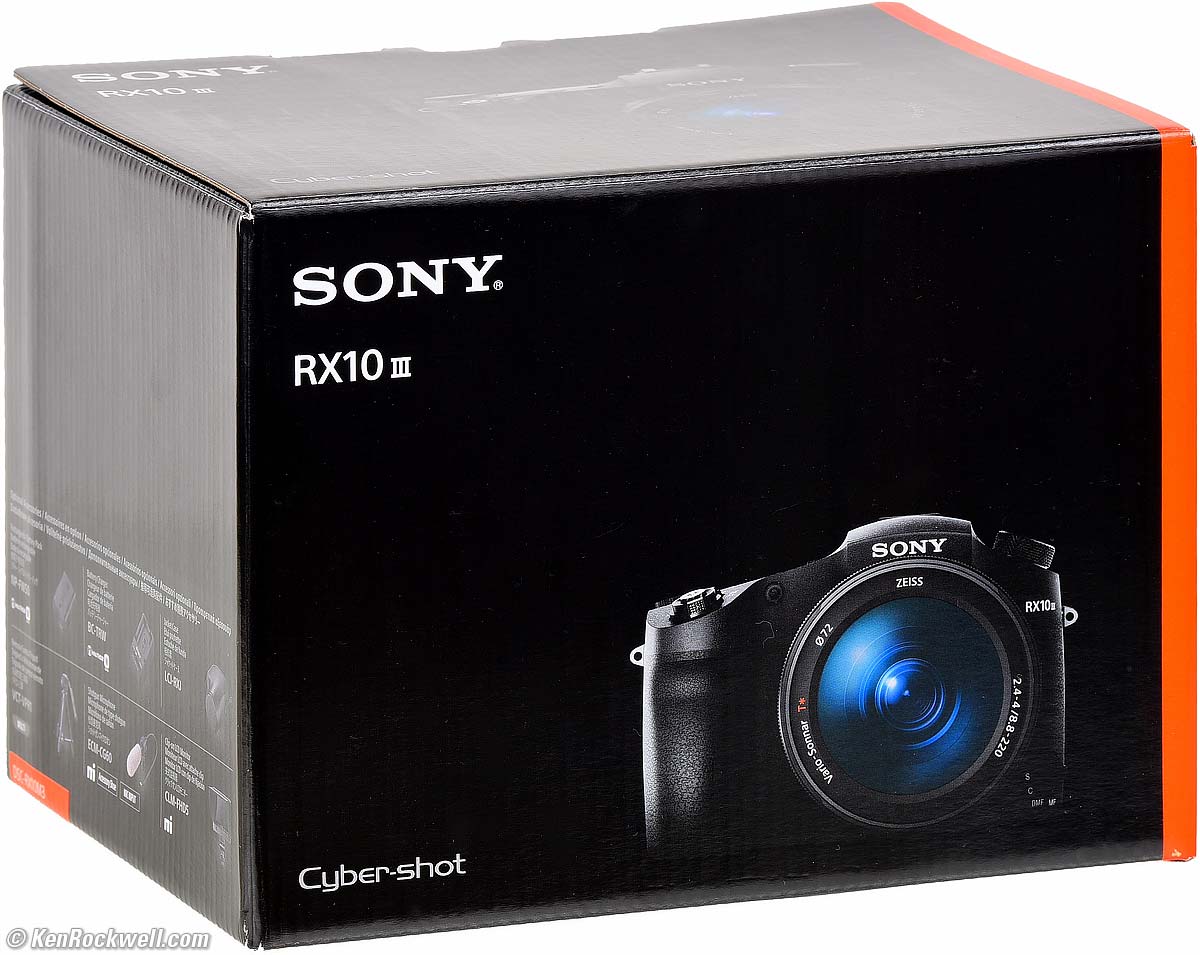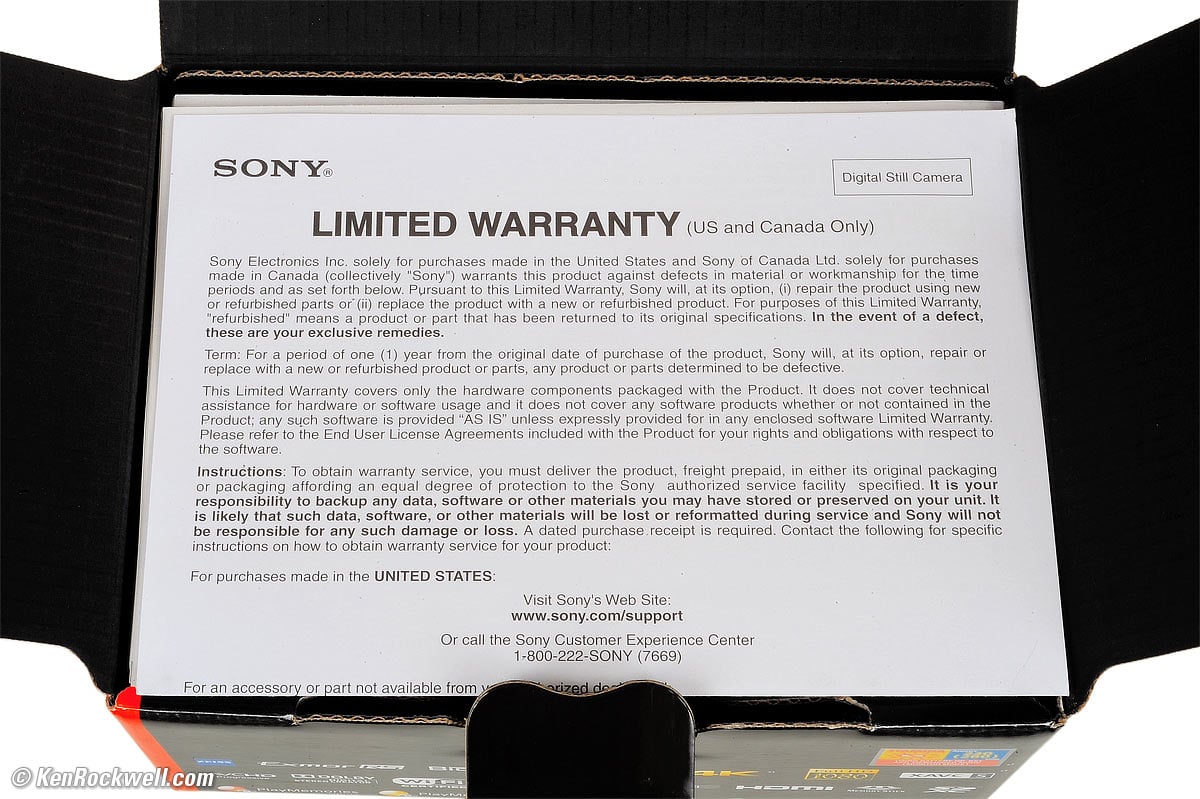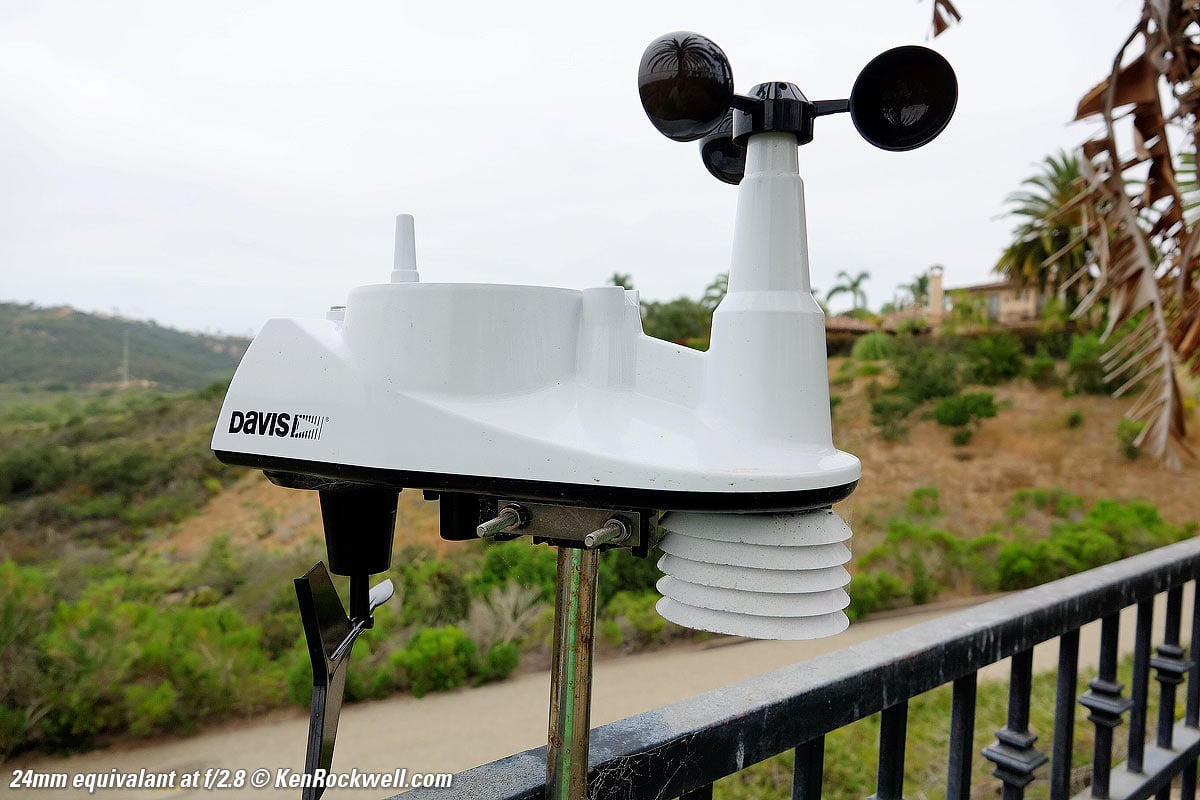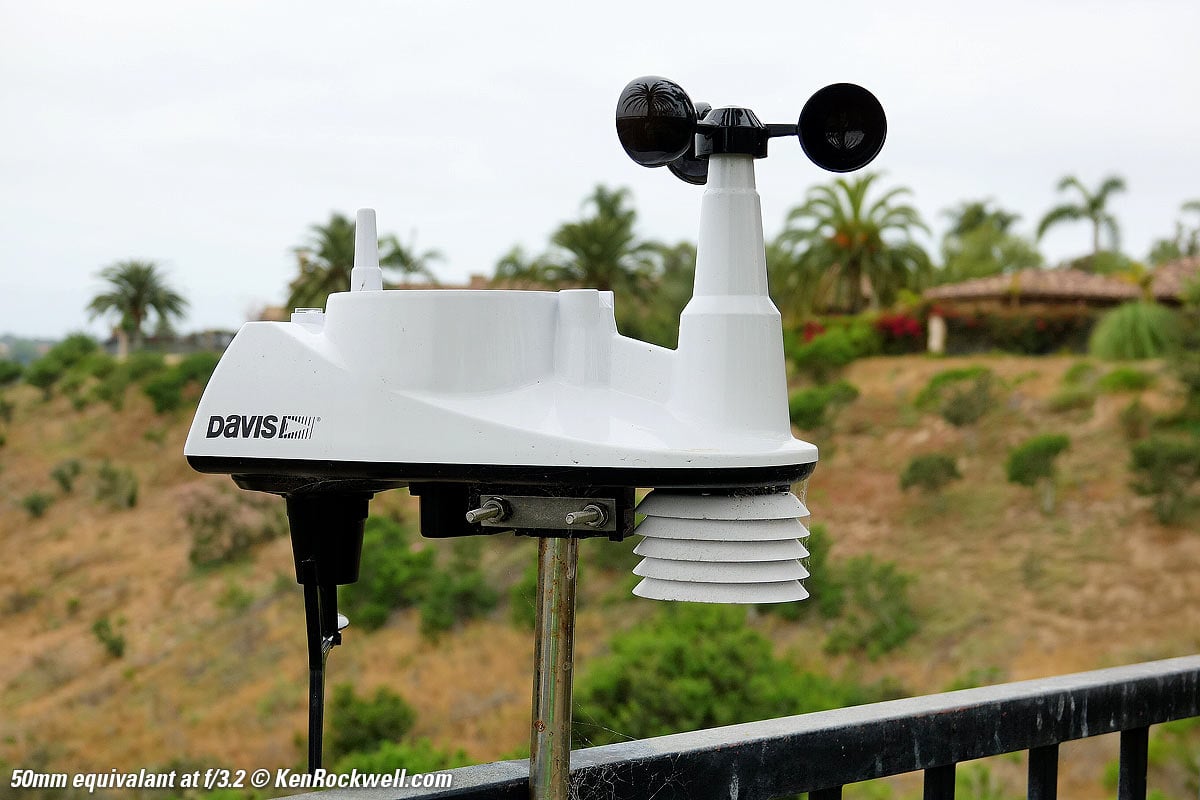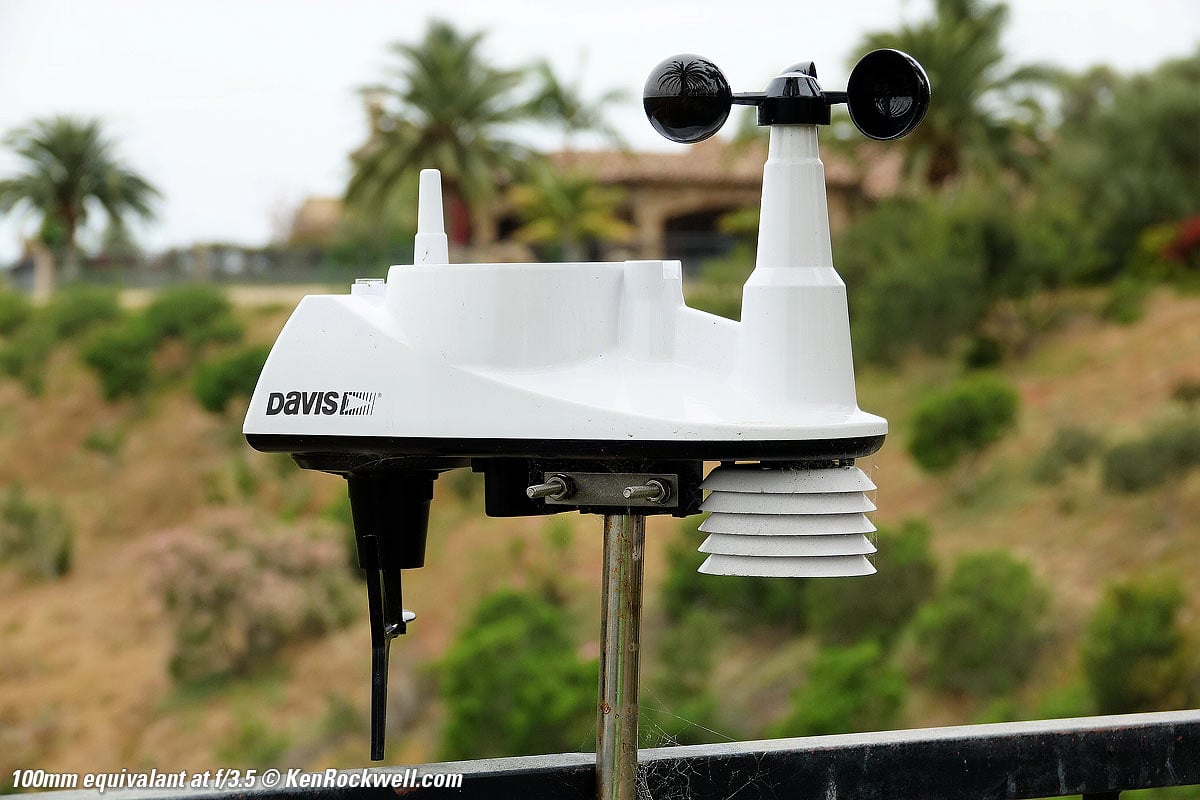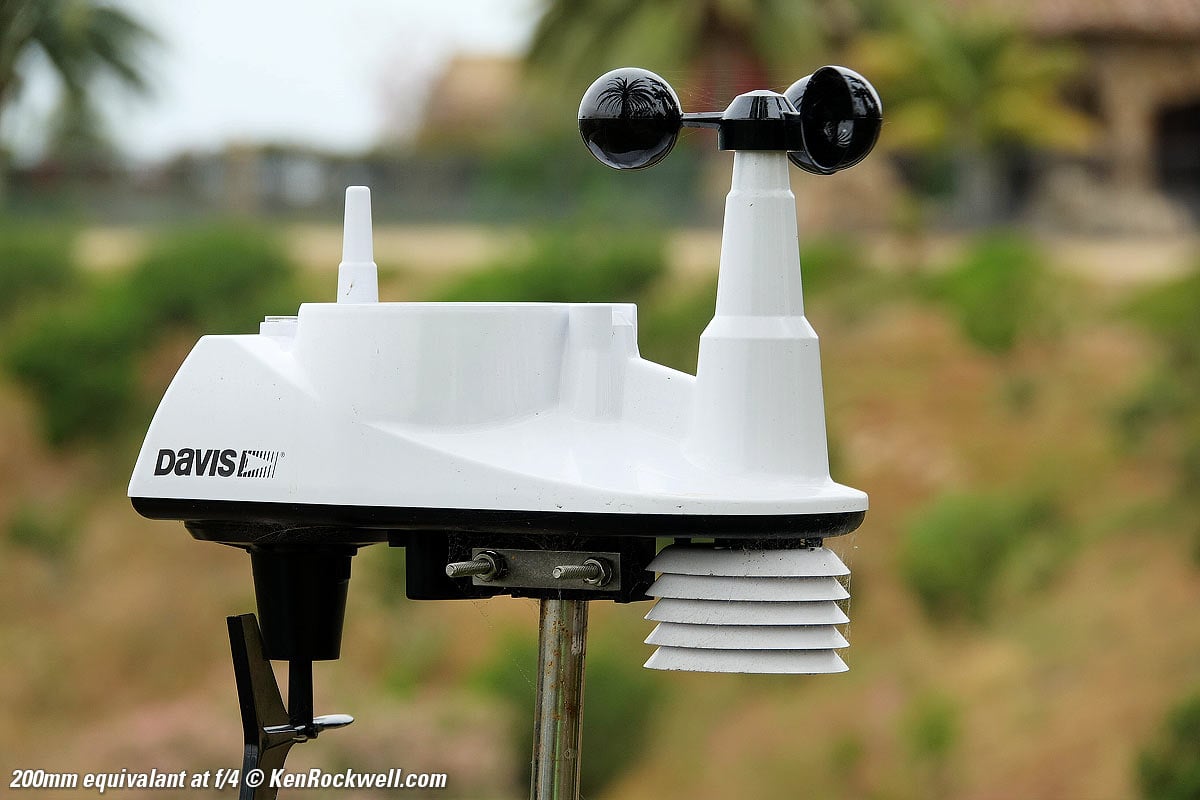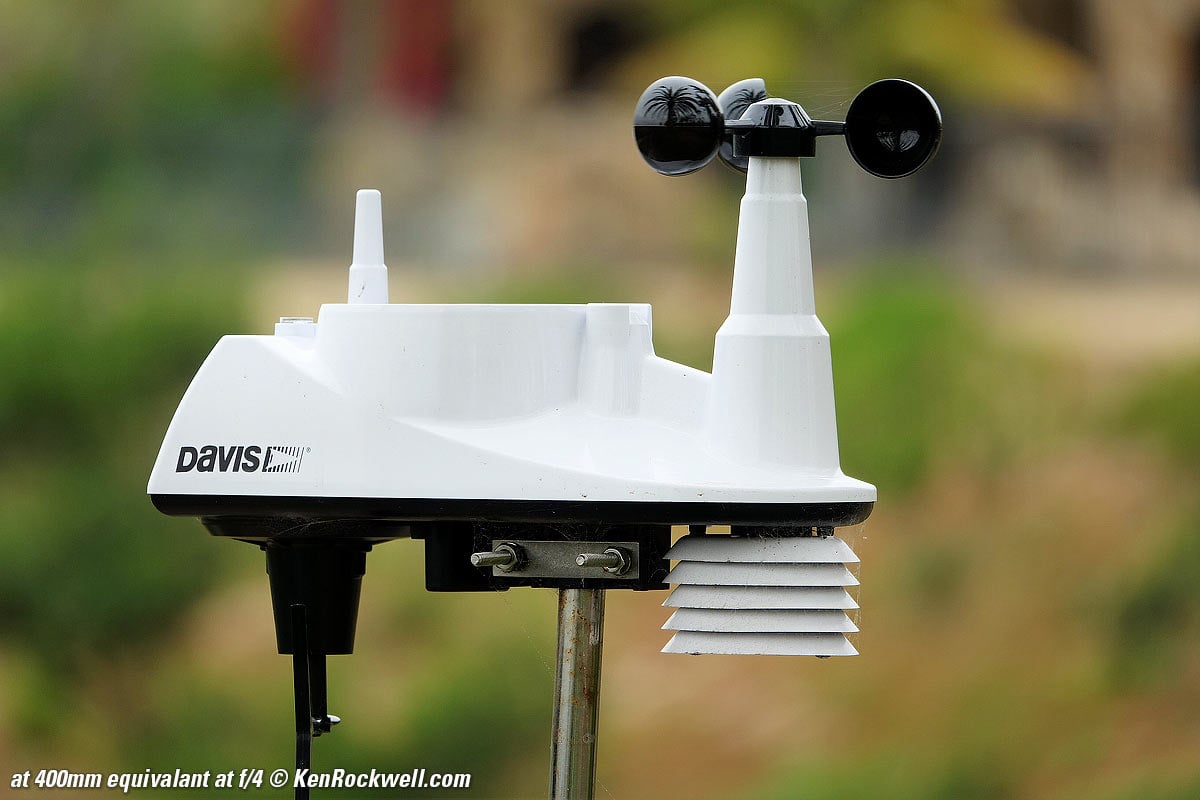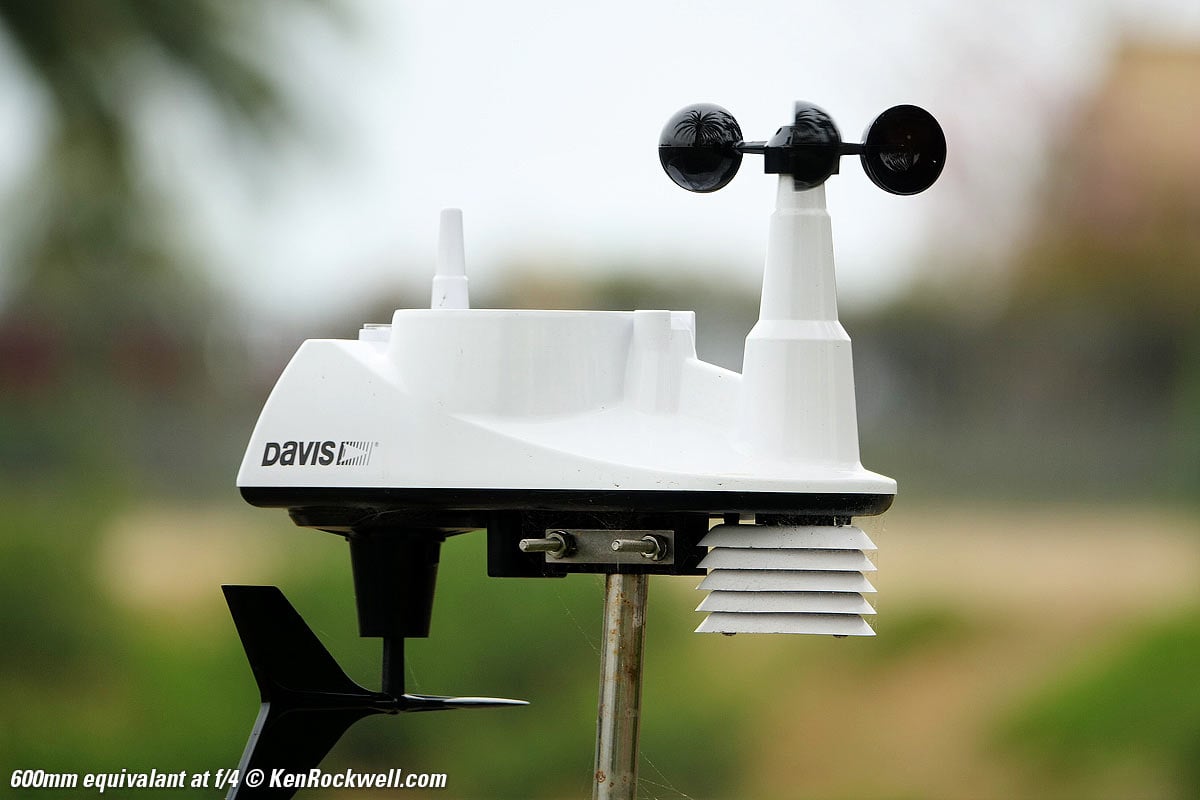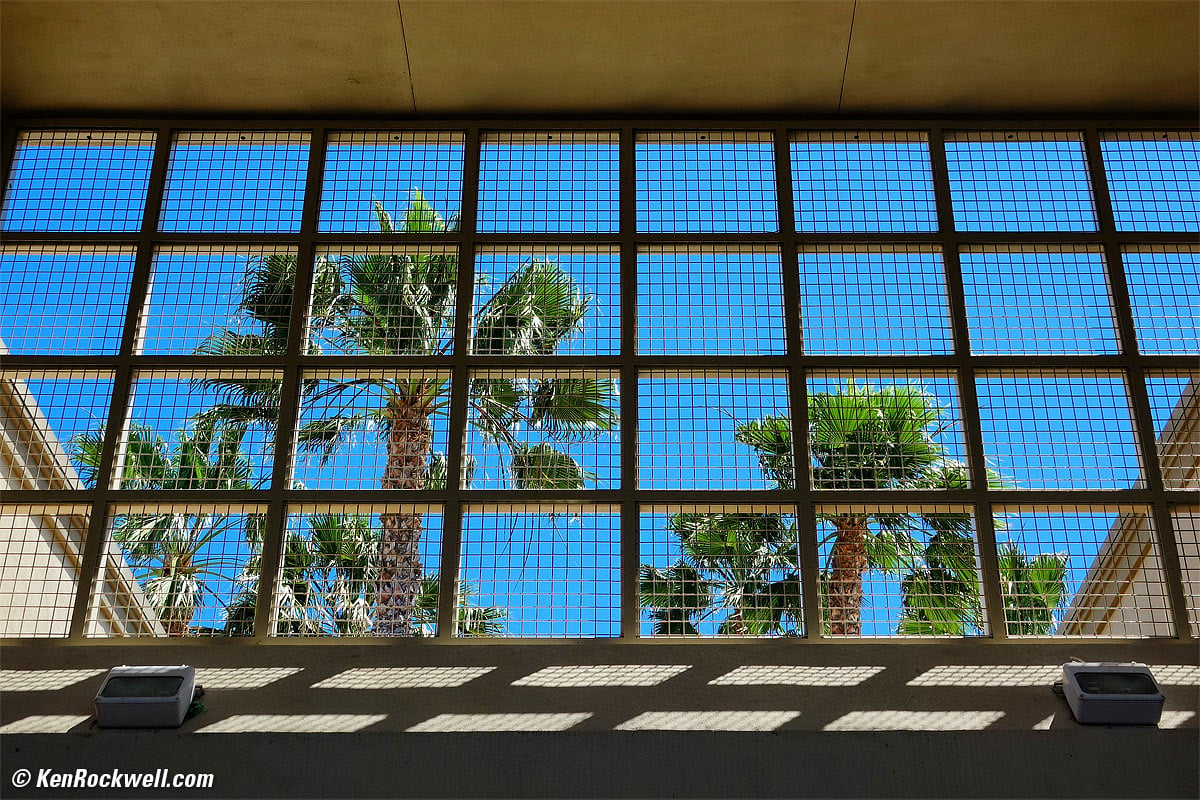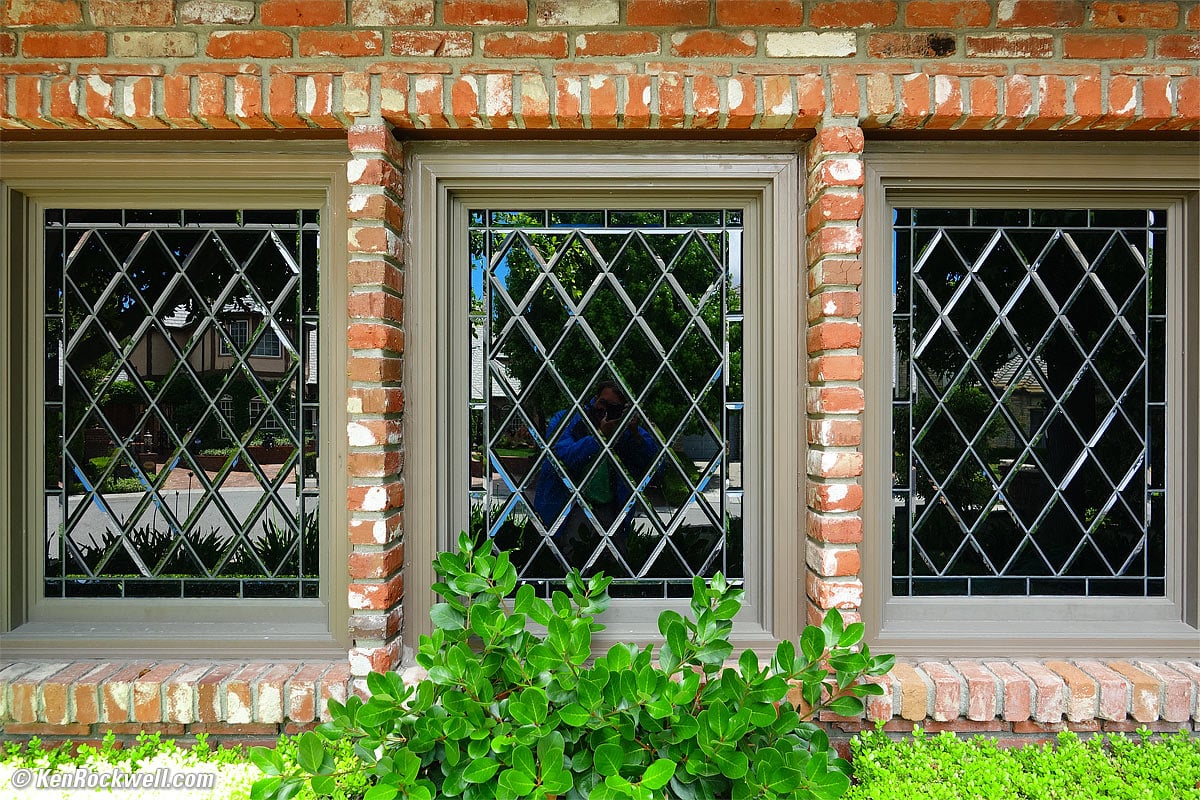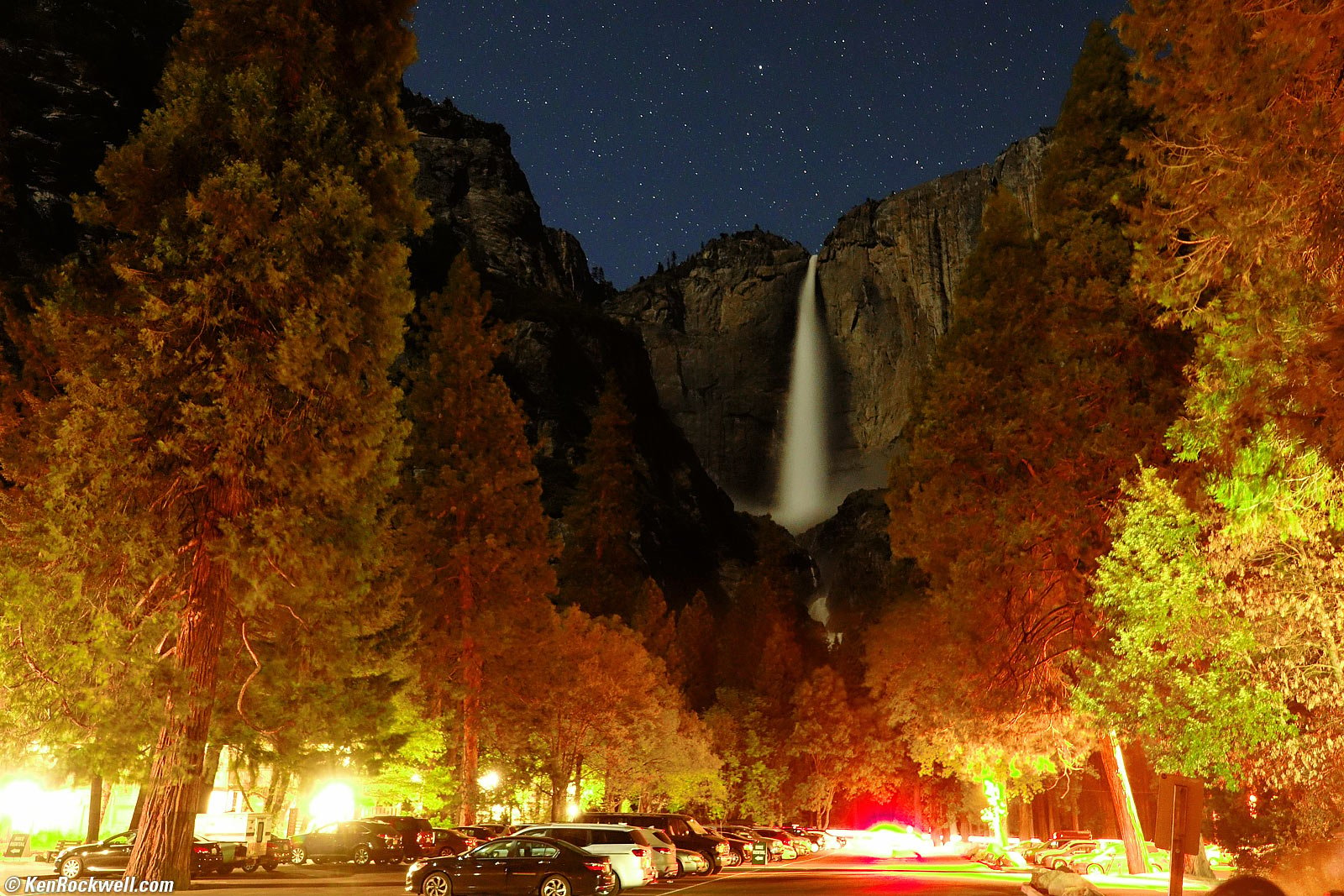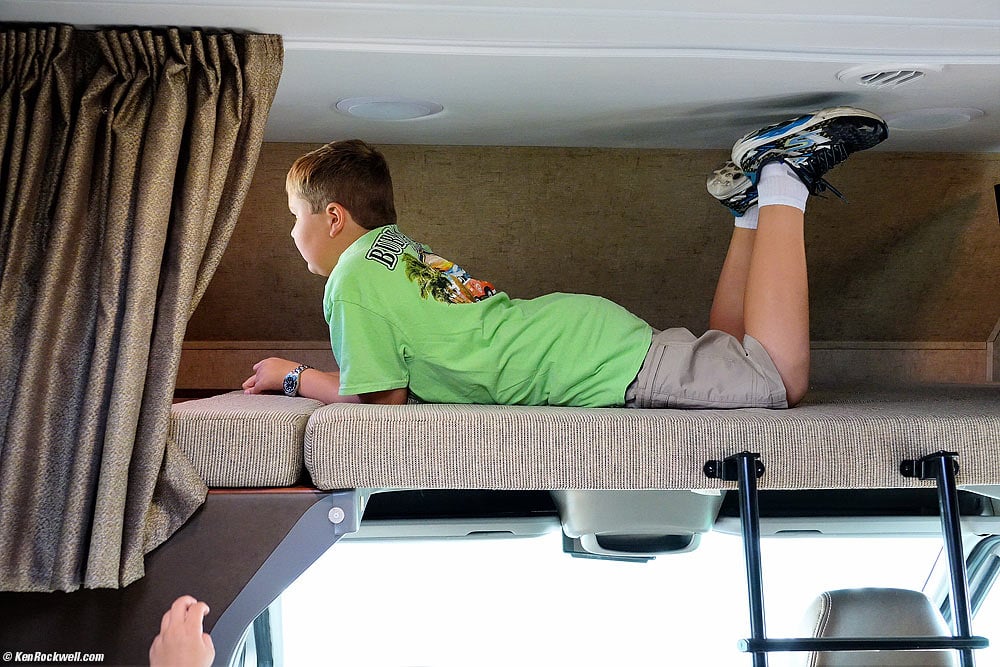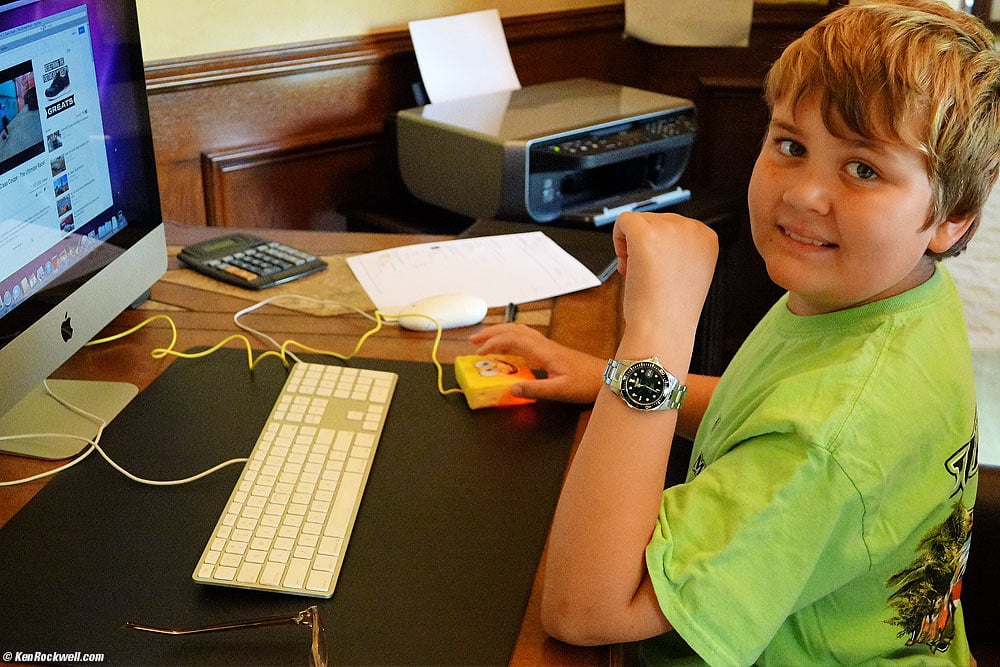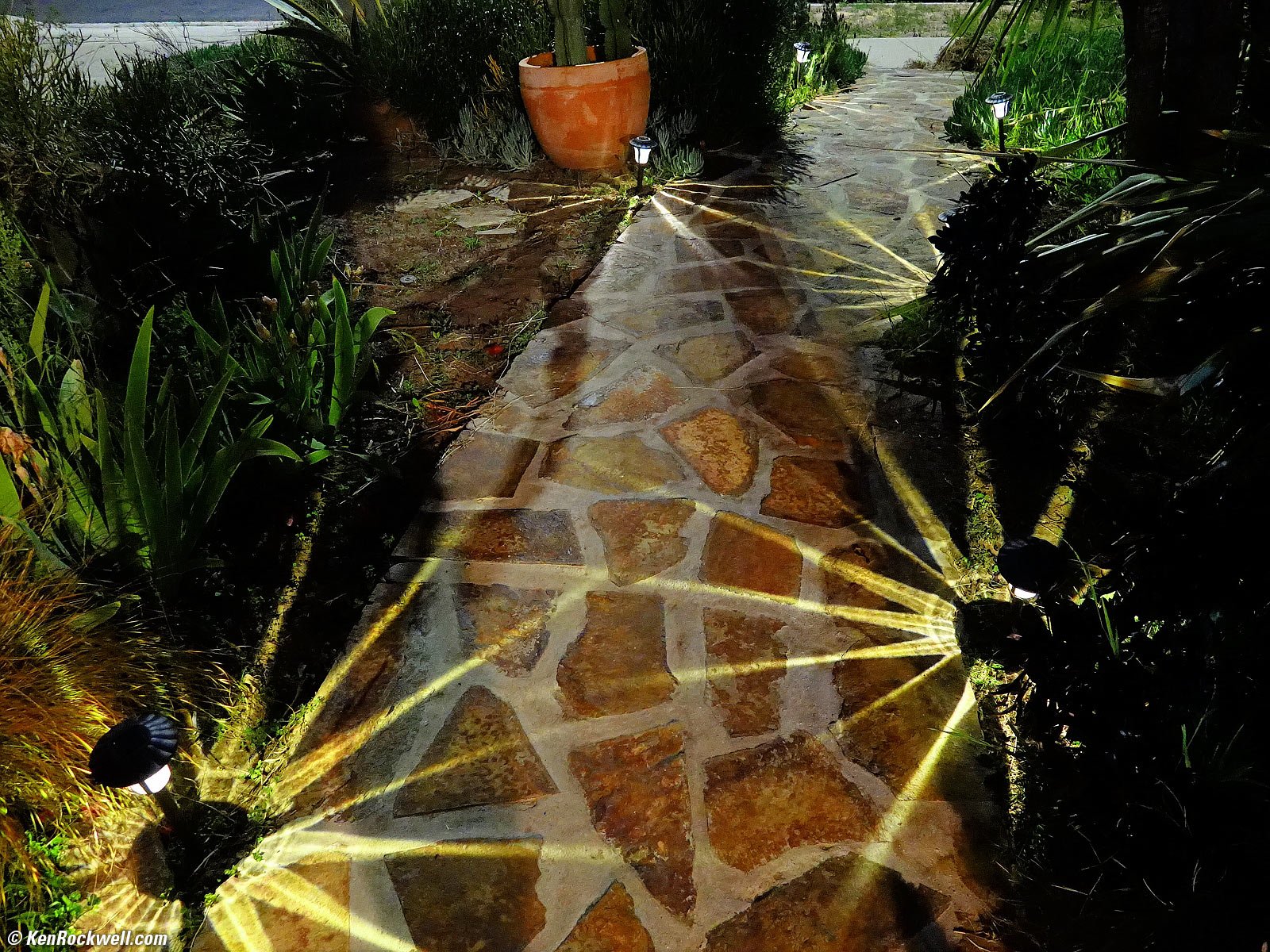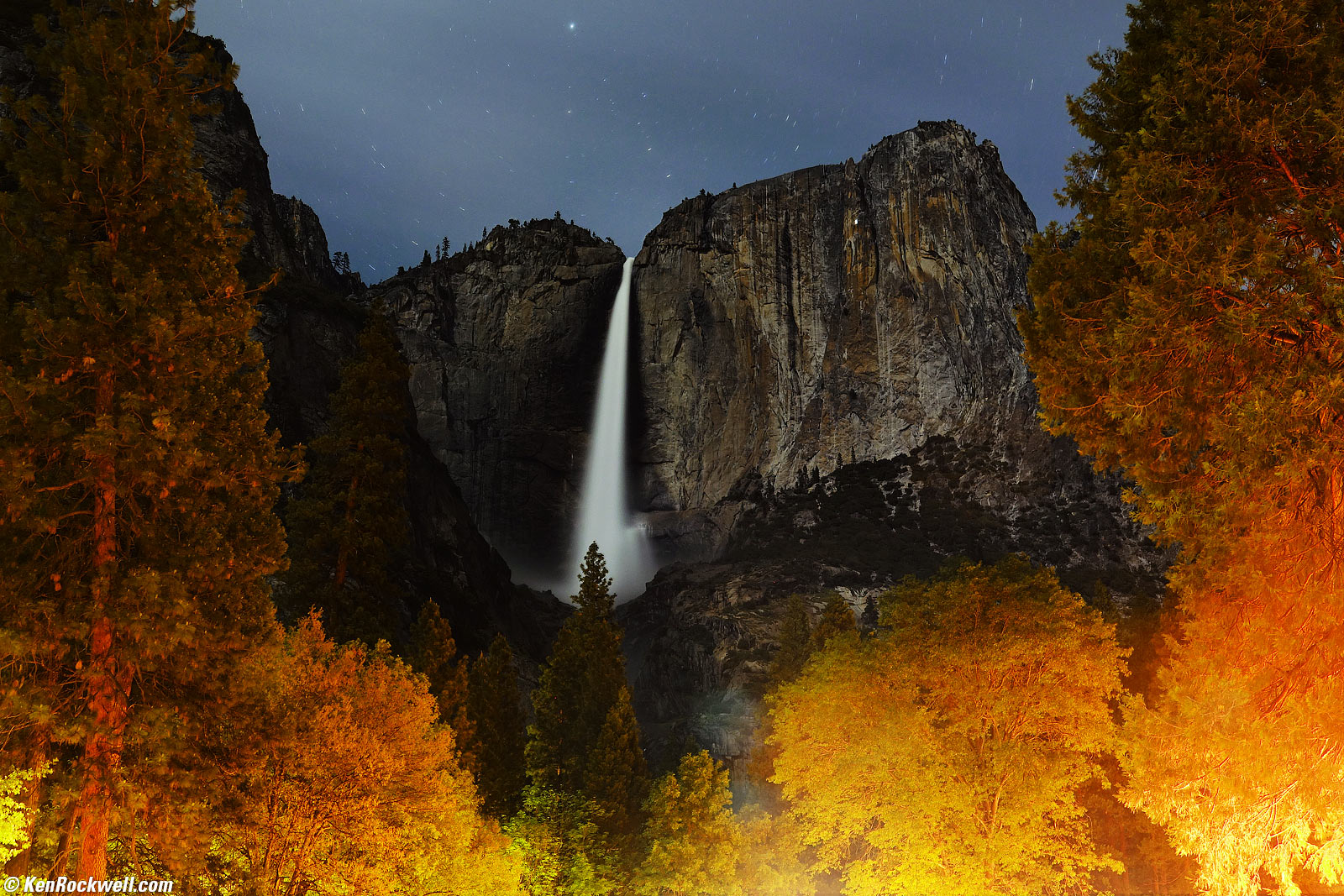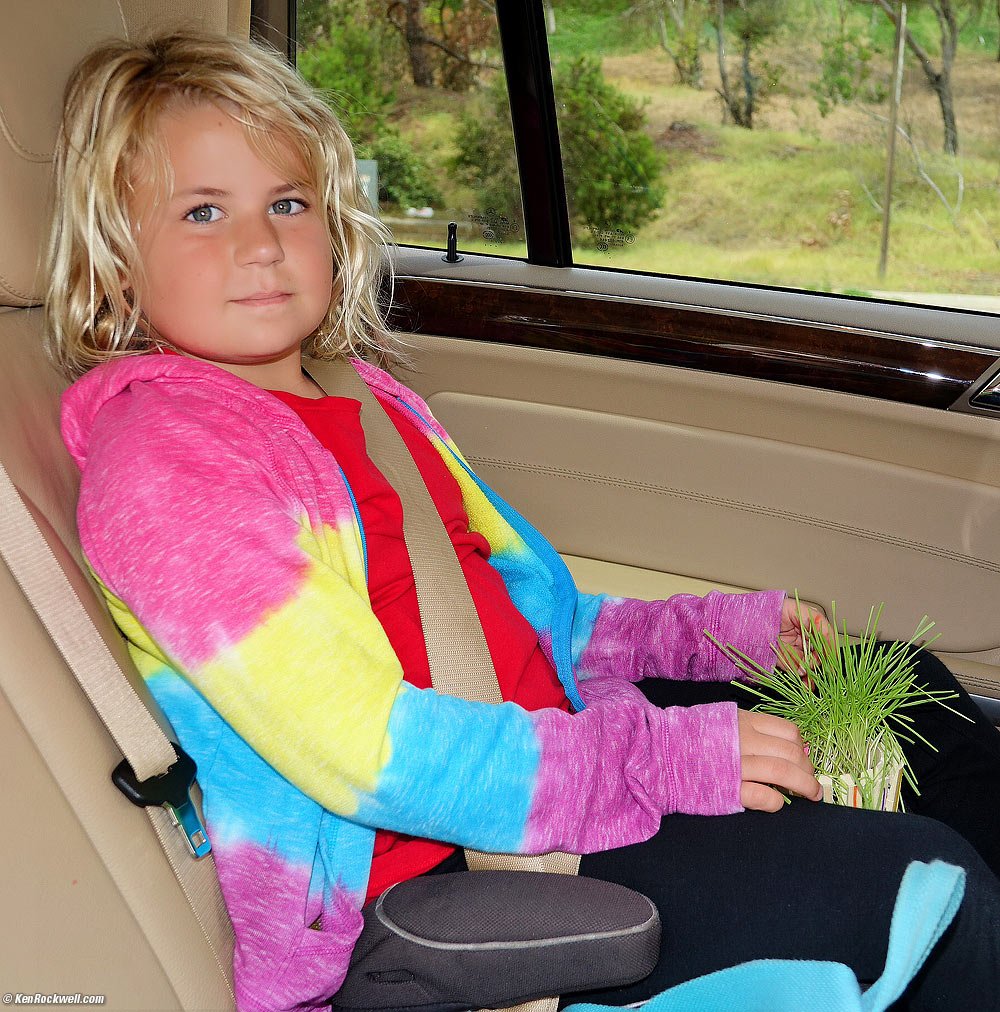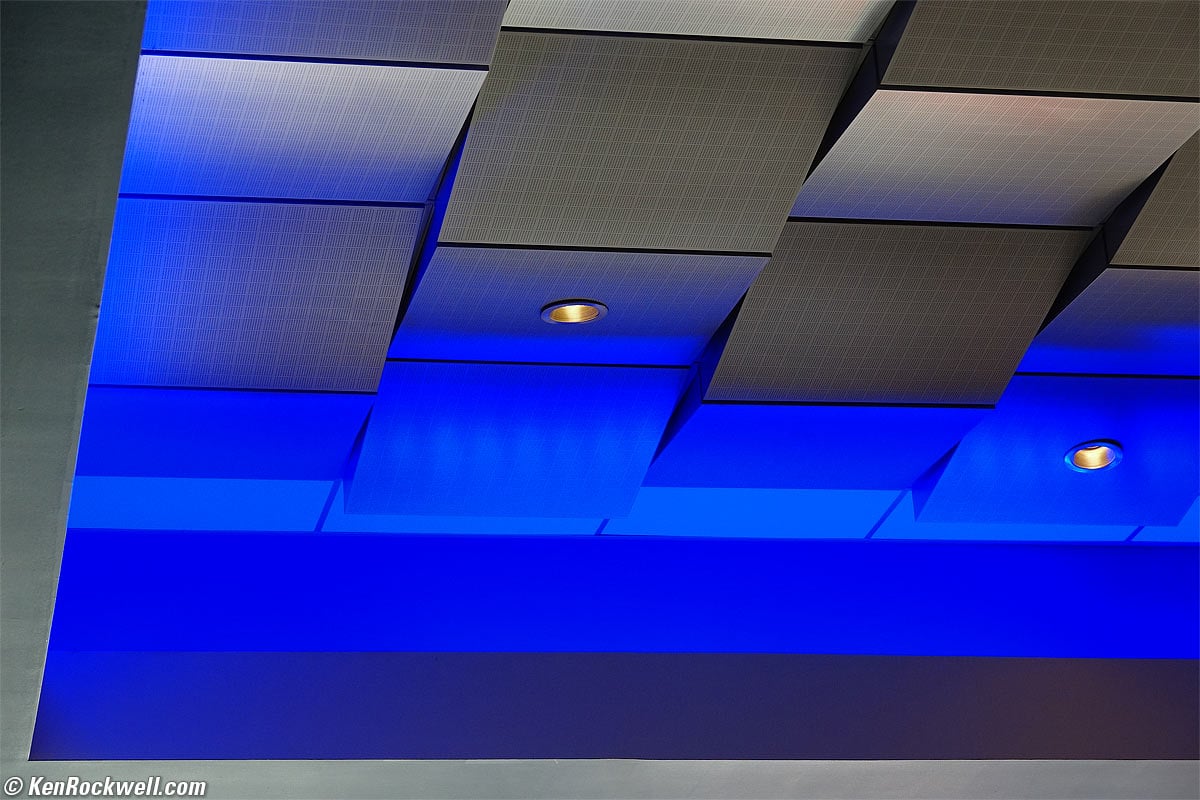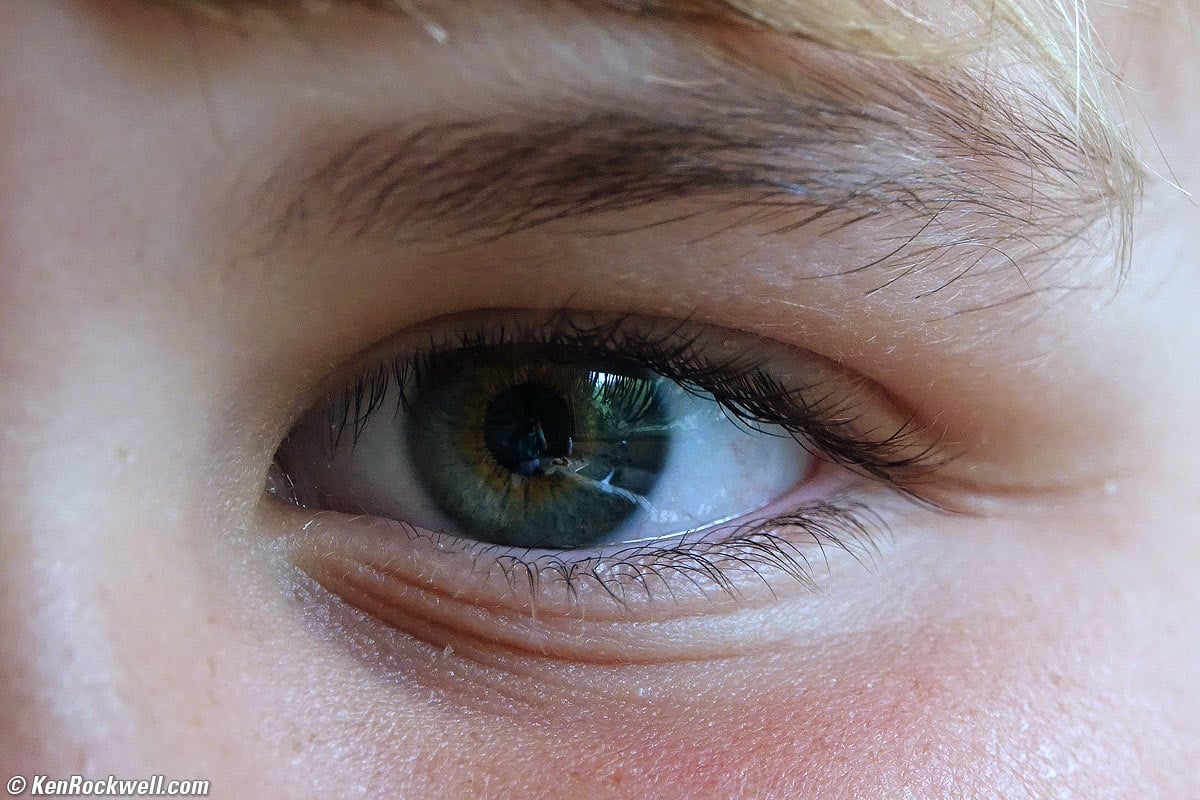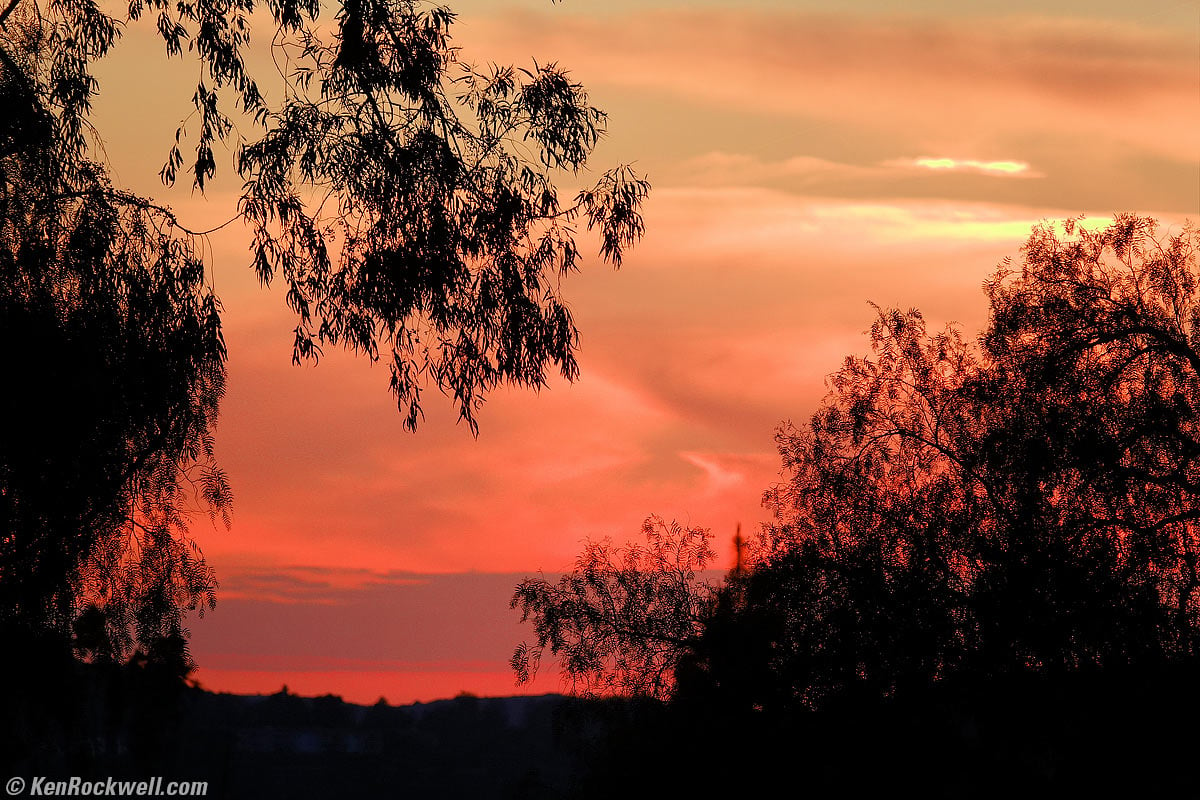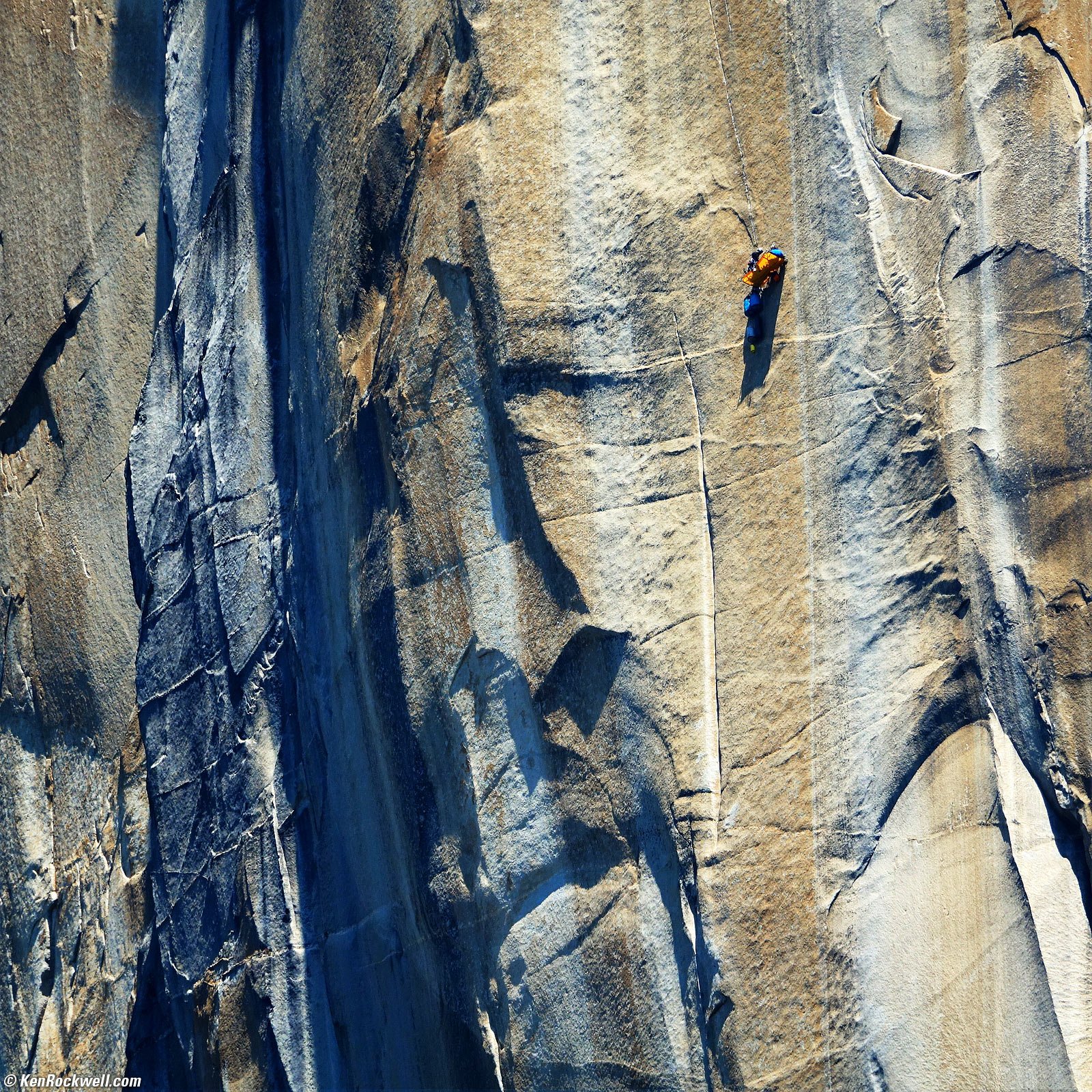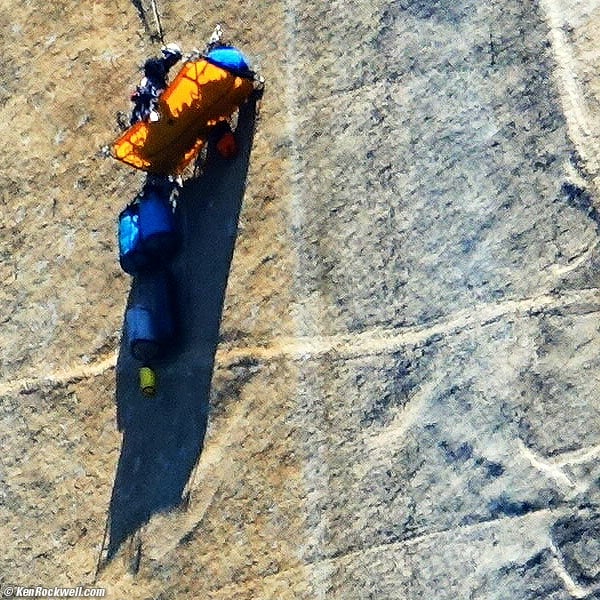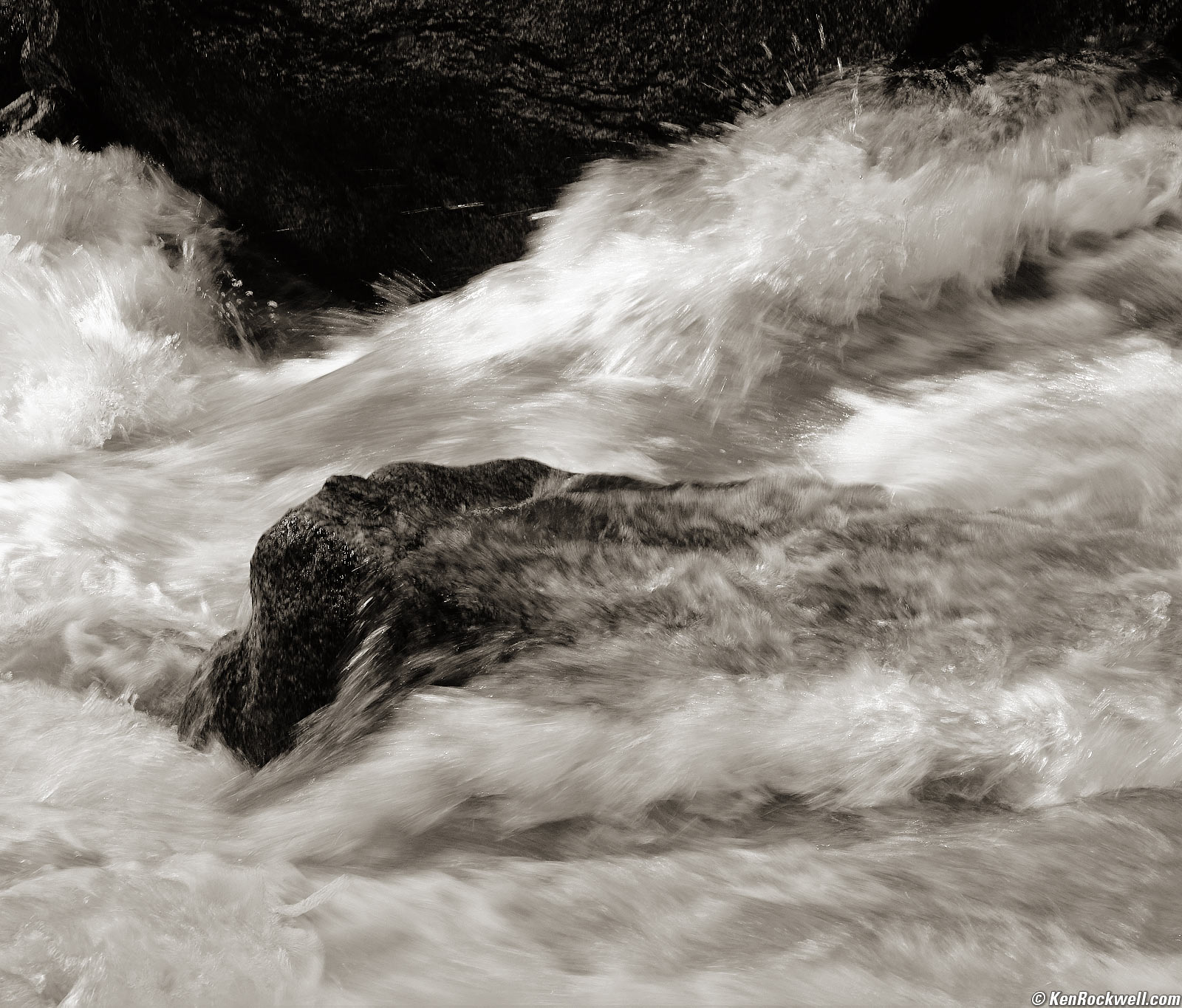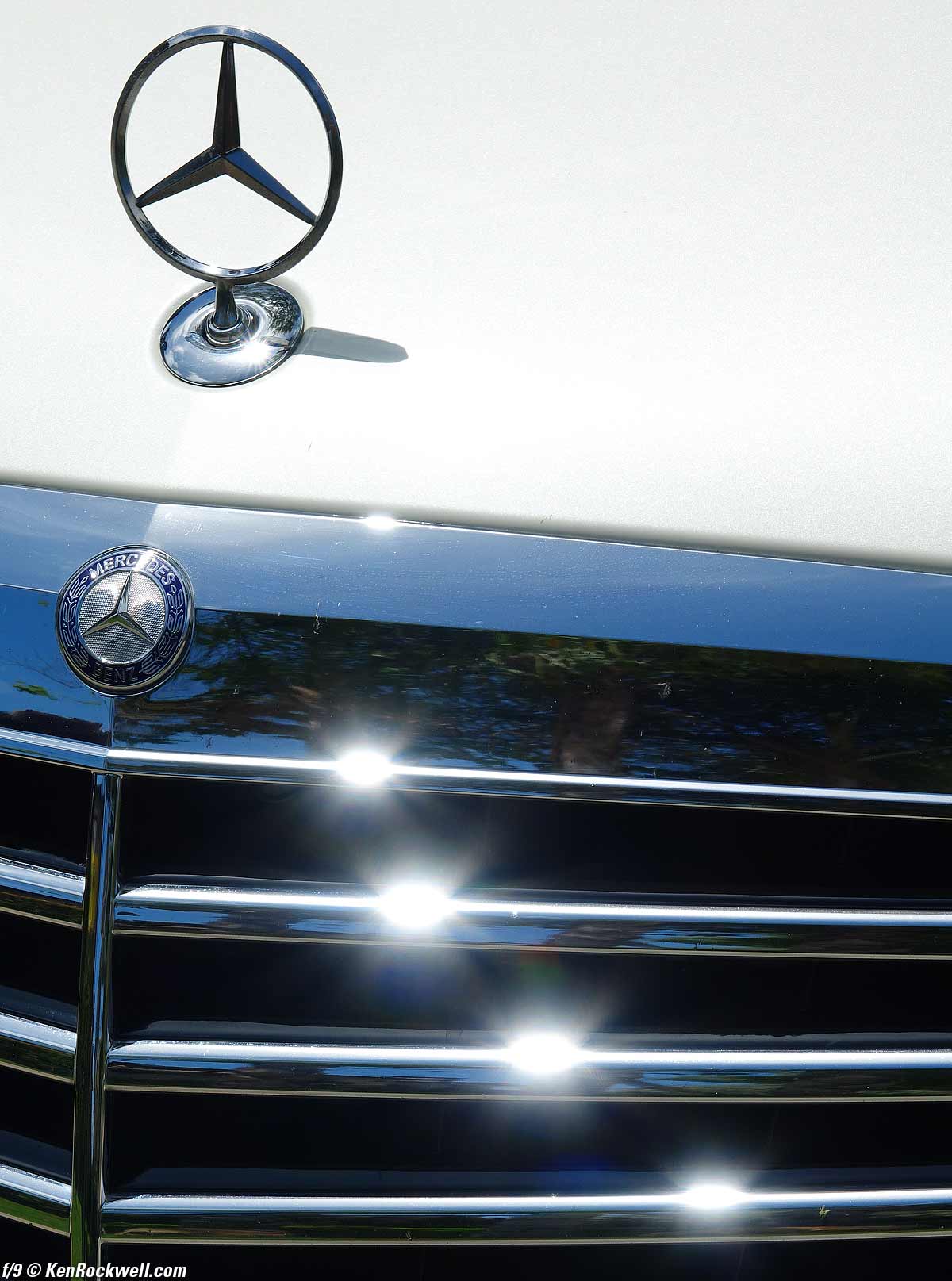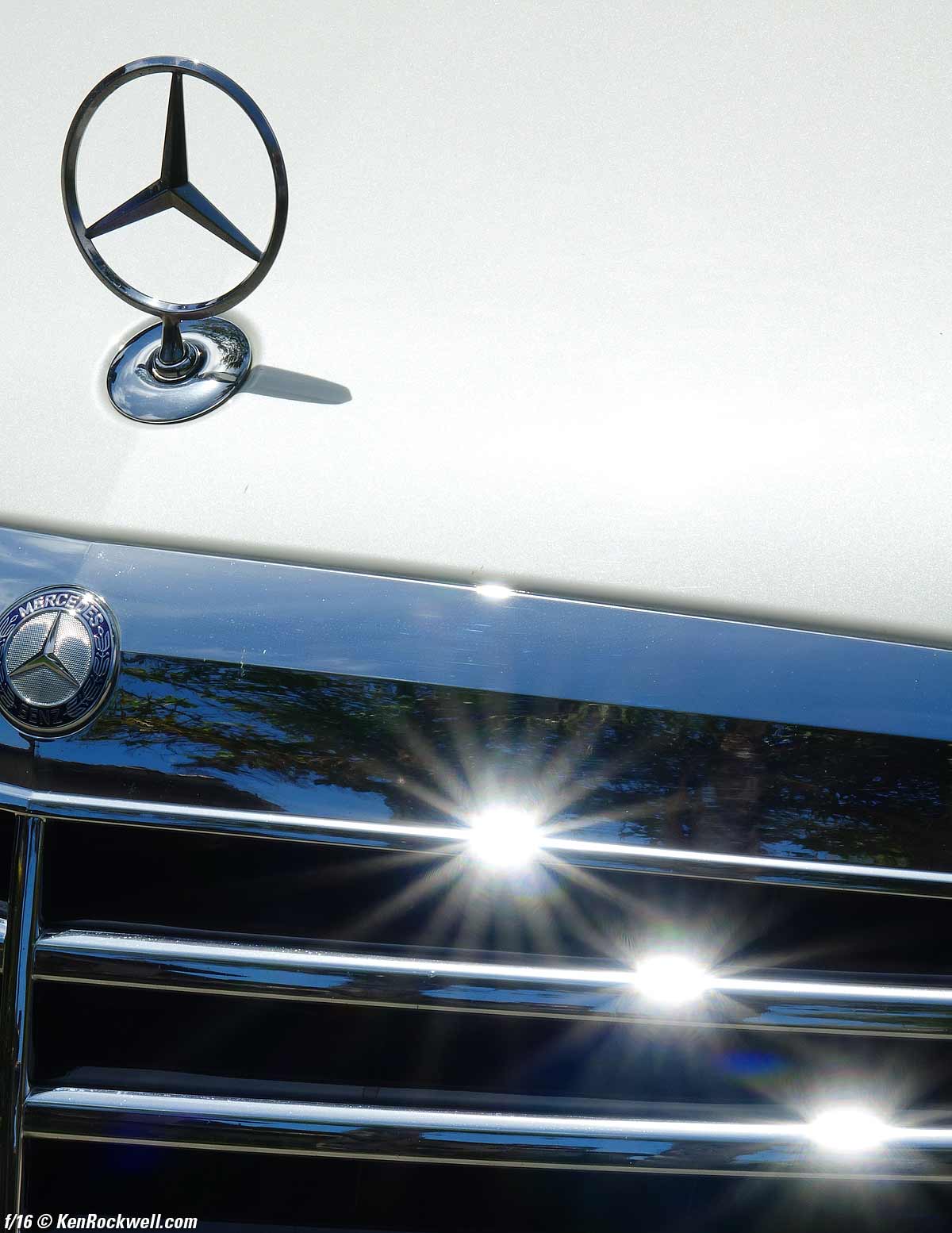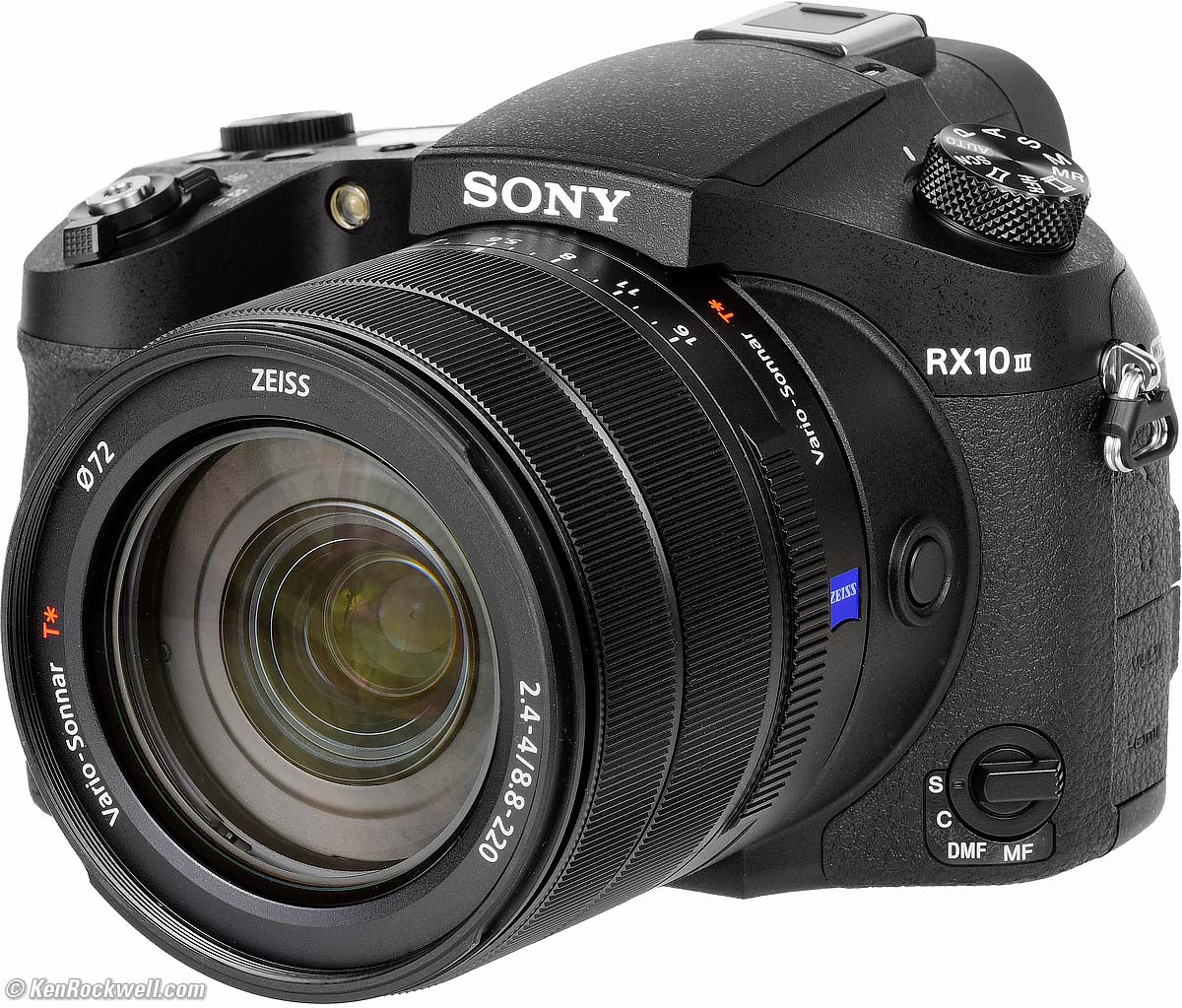Sony RX10 Mk III
24-600mm eq. lens, 14 FPS 20 MP
Stereo 4K video (2016-)
Sample Image Files Intro Specifications
Accessories USA Version Performance
Compared Usage Recommendations More
Sony: A9 III A1 A9 II A9 A7R V A7R IV A7R III A7 IV A7 III A7R II A7S III A7c A7 II A6600 A6400 A6100 A6000 ZV-E10 RX10/4 RX100/7 RX100/6 Flash Lenses
Sony RX10 Mk III (72mm filters, 38.5 oz./1,091g with battery and card, about $550 used if you know How to Win at eBay.) bigger. I'd also get mine at Amazon.
This all-content, junk-free website's biggest source of support is when you use those or any of these links to my personally-approved sources when you get anything, regardless of the country in which you live. Sony does not seal its boxes in any way, so never buy at retail or any other source not on my personally approved list since you'll have no way of knowing if you're missing accessories, getting a defective, damaged, returned, store demo or used camera. Buy only from the approved sources I use myself for the best prices, service, return policies and selection. Thanks for helping me help you! Ken.
NEW: Sony RX10 Mk IV
April 2017 Sony Zeiss Nikon Canon Fuji LEICA All Reviews
Sony RX10 Mk III at 24mm setting. bigger. Yes, the shutter button is threaded to take a real cable release!
Pictures not fitting your screen? Just drag the lower right corner of your browser window to the left and everything will magically resize to fit the narrower window.
Sony RX10 Mk III. bigger.
Sample Images
Top Sample Image Files Intro Specifications
Accessories USA Version Performance
Compared Usage Recommendations More
All these shots are from Normal JPGs, not raw files and not Fine JPGs:
Green Falls, Yosemite, 6:21 P.M, 12 May 2016. 2016 Sony RX10 Mk III at 125mm equiv. (44.9mm actual), f/4 at 1/50 at Auto ISO 100. bigger.
Anole, 15 June 2016. 2016 Sony RX10 Mk III at 600mm equiv. (220mm actual), f/4 at 1/250 at Auto ISO 320. bigger or full-resolution © file to explore on your computer (mobile devices rarely display the full resolution properly).
Sunset, 12 June 2016. 2016 Sony RX10 Mk III at 600mm equiv. (220mm actual), f/5.6 at 1/1,000 at Auto ISO 100. bigger.
Roots, Merced River, Yosemite, 11:02 A.M, 13 May 2016. 2016 Sony RX10 Mk III at 28mm equiv. (9.8mm actual), f/2.5 at 1/160 at Auto ISO 100, split toned print. bigger.
Hawaiian Torch at Sunset over Lahaina, 19 June 2016. 2016 Sony RX10 Mk III at 24mm equiv. (8.8mm actual), f/11 at 3 seconds hand-held at Auto ISO 500. bigger.
The Eerie Torus, May 2016. Sony RX10 Mk III, lens at 24mm equivalent (8.8mm actual), no flash, f/2.4 at 1/40 at Auto ISO 100, Perfectly Clear. bigger or full resolution to explore on your computer (mobile devices rarely display the full resolution data properly).
Torches at Sunset, Lahaina, 19 June 2016. 2016 Sony RX10 Mk III at 185mm equiv. (67.5mm actual), f/4 at1/200 at Auto ISO 125. bigger or camera-oringal © file to explore on your computer (mobile devices rarely display the full resolution properly).
Full Moon over Lahaina, 19 June 2016. 2016 Sony RX10 Mk III at 41mm equiv. (14.7mm actual), f/3.2 at 1/10 hand-held at Auto ISO 6,400. bigger.
Introduction
Top Sample Image Files Intro Specifications
Accessories USA Version Performance
Compared Usage Recommendations More
|
I buy only from these approved sources. I can't vouch for ads below. |
The Sony RX-10 Mk III is so good, so competent and so much fun to use that it's addicting. Once I picked it up, I couldn't stop shooting with it for months; there isn't anything it doesn't seem to do well, all without ever having to change a lens.
It's an excellent camera with an extraordinary 24~600mm equivalent zoom lens. It's sharp and focuses super-fast at all focal lengths. I never run out of range; its zoom goes and goes and goes and never seems to stop. It's about a stop faster than other long telephoto zooms, with a fast f/4 at the long end.
The RX10 III has a fantastic viewfinder, built-in stabilization and great high-ISO performance so it's easy to shoot hand-held under any light.
It's superb for sports; it really does lock-on to faces and track them as they run down the field, and its non-rolling electronic shutter lets it run silently at 5 real frames per second as it tracks everything.
It's fantastic in that not only can I get head shots out on the field at 600mm, and that I don't have to change lenses to cover the close-in shots before and after the game. Want a camera for shooting surfing from shore? Here you go!
It's also great for paparazzi, surveillance, girl watchers and bird and nature shooters, giving great, tight shots in any light silently from any distance, all without looking like a big scary camera to frighten your game. I can fill the frame with a person down at the pool from the tenth floor of a resort. I can look 3 miles down the coastline and see which tables are occupied at a restaurant three miles away!
The RX10 Mk III's silent shutter lets newsmen, corporate and industrial photographers cover anything without intruding. Concert, medical and drama photographers and private investigators will love it, too. It really does do everything well: ultra-wide, ultra tele, macro, low light, sports, action and you name it.
Sony's cameras have come a long, long way in the past few years, and the RX10 III is astonishing in how much it does so well. For most things for most casual photographers, this RX10 Mk III will make more and better photos faster than a DSLR. This Sony will save you the trouble of having to change lenses and settings all the time; once set, it just goes faster than most people can juggle a DSLR system to do the same thing — and it has a much better shutter and flash system than any DSLR.
Its built-in flash works great for daylight fill-flash even at long distances because its ultrafast leaf-shutter allows for blazing 1/1,000 flash sync. This is better than the built-in flash performance of DSLRs whose very different focal-plane shutters won't synchronize with flash above about 1/200 of a second — making the RX10 Mk III's flash about five times more effective!
Katie at Tide Pools, 12 June 2016. Sony RX10 Mk III at 80mm equiv. (29.7mm actual), built-in flash ON, f/4 at 1/800 at Auto ISO 100. bigger.
Not only do I not need to carry a slew of lenses, I don't need to bring a separate flash to get enough power for daylight fill. Here in this telephoto shot the built-in flash balanced perfectly with harsh daylight - something that would have required a shoe-mount flash with four times more flash power for the same results on a camera with only 1/200 sync like a DSLR.
The RX 10 III shoots super-fast (up to 14 FPS with locked focus and 5 FPS with tracking autofocus), handles very well and makes-great looking photos. My RX10 Ⅲ pictures are always sharp, clear and well-exposed, better than I get from many other cameras that require more fiddling from shot to shot. This camera just gets out of the way by setting itself instantly and delivering fantastic pictures.
Video is superb, and even has Slo-Mo options that allow you to wait to trigger your recording until after your action (think bubble popping) happens! See Usage.
This RX10 Mk III is essentially the excellent RX100 Mk IV with a much bigger and longer lens. If a 24-70mm equivalent lens is what you need, then get the jewel-like RX100 Mk IV, but if you need essentially unlimited zoom range and don't mind the size and weight, get this RX10 Mk III. The only real difference is in how long the lens zooms, and that the RX100 Mk IV is mostly metal and tiny, and this RX10 Mk III mostly plastic and much bigger.
It's made in China and charges via USB.
Auto ISO works great; it's easy to set the minimum and maximum ISOs as well as the minimum shutter speeds. Better, it's just as easy to program the slowest speed to vary with focal length, and we have several options to shift it (all automatically) from there. Auto ISO also saves and recalls with the Memory Recall modes.
If its real 600mm equivalent lens isn't enough, digital zoom works great when you shoot at the lower resolution settings I use since it simply crops accordingly without having to resample, keeping the images just as sharp as optical zoom!
The electronic viewfinder (EVF) is always at the perfect brightness from night to direct sunlight. It's always sharp, colorful, and seems as if it's live with no apparent delay. EVFs have come a long way in the past few years, and Sony's are the best.
When set to Continuous shutter mode, it shoots completely silently. No one even knows I took any pictures.
My RX10 Mk III shoots instantly, fast enough even for drive-by-shooting, and my pictures look fantastic as-shot with no tweaking needed. This is what a camera is supposed to be; I can't help but love this Sony to death!
That's 99% of my review; the DSC-RX10 Mark III is a superb camera. It's easy to poke fun of super-zoom cameras because earlier ones were so fuzzy, slow and had to held at arm's length, but once you shoot with the RX10 Mk III, you'll find it hard not to love. It's quite an advance in the state-of-the-art in ultrazoom cameras.
I'd get mine used at this link to it at eBay (How to Win at eBay), or I'd get mine at Amazon.
Good
● Fantastic lens with huge zoom range works well without reservations; images as good as from a DSLR.
● Fantastic macro ability.
● No distortion, fast focus, perfect exposure and pretty good color rendition.
● Quiet leaf shutter and/or silent electronic shutter.
● Built-in flash works great with the leaf shutter's 1/1,000 sync speed!
● 14 FPS with locked focus; 5 FPS with tracking focus.
● Superb live finder looks perfect in any light.
● WiFi and NFC.
Why I Love 600mm
Here's a sunset snap at 35mm equivalent; about what you get with an iPhone:
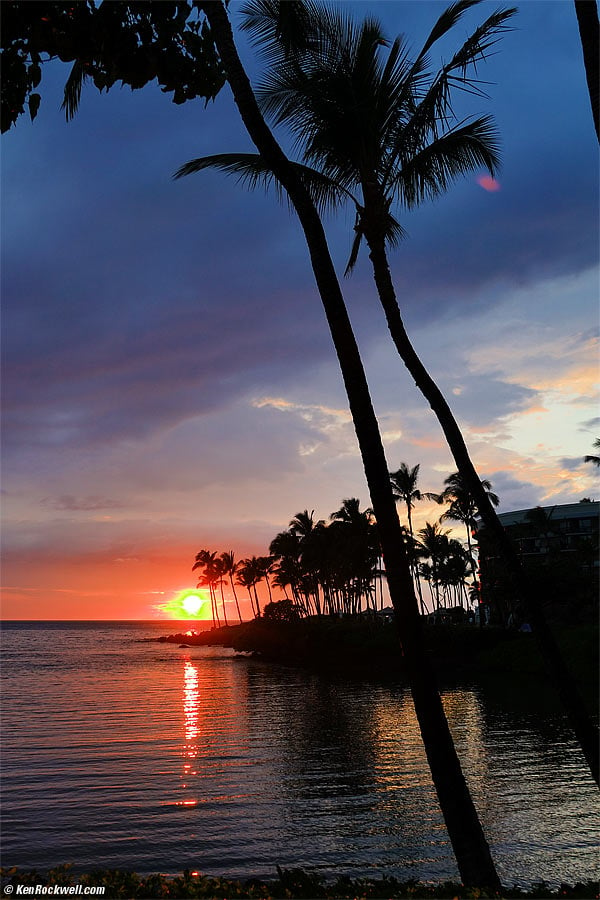
Sunset in Palm Trees, 14 June 2016. 2016 Sony RX10 Mk III at 35mm equivalent (13.3mm actual), f/3.2 at 1/160 at Auto ISO 100.
And here's what you get zoomed-in:
Sunset in Palm Trees, Waikoloa, Big Island, 14 June 2016. 2016 Sony RX10 Mk III at 500mm equivalent (187mm actual), f/4 at 1/200 at Auto ISO 100. bigger.
The whole point of ultra-tele lenses is that you can turn every ordinary little sunset like this one into an epic sunset by zooming in. By filing the frame with whatever little red there is, BAM!, the whole frame explodes with color. These are JPGs essentially as they came from the RX10 MK III without any color fiddling.
Another advantage of an ultra-tele is that you make the disc of the sun huge. In this case I didn't move between these two snaps; I just zoomed-in. The palms you see in the better image are a very long way away. The very long lens enlarges everything to make a strong shot out of a dull one.
You have to consider depth of field; long lenses have very little. In this shot the trees are in focus, and the water beyond is not.
Missing
● No second card slot.
● No touch screen.
● No GPS.
● While autofocus tracks action wonderfully, you can't change the zoom setting while shooting a sequence.
● No M1 M2 memory recall modes on the top mode dial as we have on the A6300, just one "MR" mode from which you can recall your presets. This means you have to use several clicks to do what the A6300 does in just one.
Specifications
Top Sample Image Files Intro Specifications
Accessories USA Version Performance
Compared Usage Recommendations More
I'd get mine used at this link to it at eBay (How to Win at eBay), or I'd get mine at Amazon.
Image Sensor
5,472 x 3,648 pixels native (19.96 MP).
8.8 x 13.2mm, also marketed as "one inch," which it is not. This "one inch sensor" is much smaller than a DSLR sensor, but bigger than a cell phone camera's sensor. Therefore its technical image quality falls somewhere in between the two.
While its sensor is much smaller than a DSLR's, its sensor is larger than most other point & shoot cameras, so it usually performs better, especially in low light.
It gets fast autofocus through the ability to read the sensor for contrast detection at very high frame rates; it does not use phase detection and doesn't need it.
2.727x crop factor.
3:2 native aspect ratio, with 3:4, 16:9 and square (1:1) crops available. I program a button to allow fast selection of the different crops.
ISO
ISO 64 ~ 12,800; ISO 100 is optimum.
To ISO 25,600 with a multi image mode.
Auto ISO
Adjustable for high and low limits from ISO 100 to ISO 12,800 in full stops.
Auto ISO minimum shutter speeds adjustable either to track the zoom setting (and adjustable ± 2 stops from there), or settable in full stops from 30 seconds to 1/32,000.
Lens
Sony RX10 Mk III. bigger.
Actual Focal Lengths
8.8 ~ 220mm.
35mm Equivalent Focal Lengths
This 8.8 ~ 220mm lens sees the same angles-of-view on the RX10 Mk III's sensor as a 24 ~ 600mm lens sees on a 35mm or full-frame camera.
Temple of Ramses III at Bumfuq, Egypt, 09 May 2016. Sony RX10 Mk III, lens at 24mm equivalent (8.8mm actual), no flash, wide open at f/2.5 at 1/13 hand-held at ISO 100, Perfectly Clear. bigger or full resolution to explore on your computer (mobile devices rarely display the full resolution data properly).
Optical Construction
18 elements in 13 groups.
7 ED and one Super ED glass element.
6 aspherical elements, two of which are ED.
Voice coil focus.
Close Focus
1.2" (3 cm) at wide and 29" (72 cm) at tele.
It's much better than rated, see Macro.
Diaphragm
9 blades.
Round to f/11.
f/16 minimum aperture at all focal lengths.
Defeatable aperture clicks with a slide switch on the lens barrel.
Maximum Apertures
Actual focal length (shown in EXIF) |
35mm equivalent (shown as zoomed) |
Maximum aperture |
8.8mm |
24mm |
f/2.4 |
9.2 ~ 9.5mm |
25 ~ 26mm |
f/2.5 |
9.9 ~ 12.5mm |
27 ~ 34mm |
f/2.8 |
12.8 ~ 20.2mm |
35 ~ 55mm |
f/3.2 |
20.5 ~ 36.3mm |
56 ~ 99mm |
f/3.5 |
36.7 ~ 220mm |
100 ~ 600mm |
f/4 |
Zooming
It zooms either via the electronic zoom ring or the little lever around the shutter.
It's a pumper zoom, getting longer as zoomed.
It retracts when off, as shown at the top. It extended this far at 24mm:
Sony RX10 Mk III, zoom set to 24mm equivalent. bigger.
It retracts just a little as zoomed from 24mm to 75mm equivalent, and at 75mm equivalent is back at the 24mm mark on the barrel. From 75mm to 600mm equivalent it gets longer and longer and longer. Here is is at 600mm equivalent:
Sony RX10 Mk III, zoom set to 600mm equivalent. bigger.
Stabilization
Optical.
Rated "4½ stops improvement."
Hood
The plastic bayonet hood is included:
Sony RX10 Mk III. bigger.
Shutter
Remote Releases
The shutter button is threaded to take a real cable release!
You can also use the RM-VPR1 wired Remote Commander.
There's a Remote Camera Control program to control just about everything from your computer via USB.
Mechanical Shutter
1/2,000 to 30 seconds in all modes except AUTO, whose maximum time is 4 seconds.
The leaf shutter only runs to 1/2,000 at f/8 and smaller. At f/2.8 it only goes to 1/1,000. If you need faster than 1/1,000 at f/2.4, no worries; use the electronic shutter:
Silent Electronic Shutter
1/32,000 to 30 seconds in all modes except AUTO, whose maximum time is 4 seconds.
This Sony's electronic shutter is designed not to have any distortion when photographing moving subjects, a problem which plagues most electronic shutters.
Flash
Built-in.
1/1,000 sync speed.
The hot shoe has 20 pins with power for use with all sorts of microphones and other accessories.
Still Formats
JPG and/or raw.
20MP, 10MP and 5MP JPG image sizes.
Adobe and sRGB.
Video
4K, HD and Slo-mo to 1,000 FPS
S-Gamut/S-Log2
Clean HDMI output
Time Code / user bit
Gamma display assist
Slo-Mo as explained under Usage.
File Formats: XAVC S 4K, XAVC S HD, AVC HD and MP4.
It runs at 1,000 progressively-scanned frames per second at some resolutions; these aren't misprints.
3,840 x 2,160: 29.94p, 25p, 23.97p.
1,920 x 1,080: 1,000p, 960p, 500p, 480p, 250p, 240p, 59.94p, 50p, 29.97ps, 25p, 23.97p, 59.94i, 50i.
1,824 x 1,026p: 1,000p, 500p, 250p, 240p, 480p, 960p.
1,676 x 566p: 1,000p, 960p, 500p, 480p, 250p, 240p.
1,280 x 720: 29.97p, 25p.
Audio
Recorded only along with video.
AAC LC, AC3, Dolby Digital 2 channel, Linear Stereo PCM.
Stereo microphones built in.
Mic-in jack with plug-in power overrides built-in mic.
Headphone jack.
Finder
0.39" XGA OLED.
4:3 aspect ratio.
2,359,296 dots.
0.7x magnification at 50mm equivalent setting, rated.
1.0x magnification at 70mm equivalent setting, measured.
Auto brightness control.
-4 to +3 diopters.
21.5mm eyepoint.
LCD
Flipping LCD Screen, Sony RX10 Mk III. bigger.
3" (7.5cm) diagonal.
4:3 aspect ratio.
Swivels up 107º and down 42º, but not left or right.
Anti-reflection coated.
1,288,800 dots.
Connectors
Mic-in jack with plug-in power overrides built-in mic.
Headphone jack.
Multi/Micro USB 2.0.
Micro D HDMI.
WiFi
802.11b/g/n.
2.4 Gigacycles.
NFC.
Storage
SD, SDHC and SDXC.
Various Sony Memory Stick formats.
Body
Mostly plastic, with weather seals.
Power
It's rated to consume 2.3W using the rear screen, and 2.6W with the finder.
Battery
NP-FW50 lithium ion battery.
Rated 420 shots or 210 minutes with rear LCD; 370 shots or 185 minutes with finder for stills.
Sony NP-FW50 battery. enlarge.
Charging
Charges via USB, and the camera can run from USB power.
If you have no USB source, Sony includes an AC -> USB adapter which both can charge the battery and power the camera indefinitely.
Quality
Sony RX10 Mk III. bigger.
Made in China.
Size
5¼″ x 3¾″ x 5⅛″ WHD.
132.5 x 94.0 x 127.4 millimeters WHD.
Weight
38.470 oz./1,090.65 g with battery and card, actual measured.
Rated 38.7 oz. (1,095g) with battery and card, 37.1 oz. (1,051g) stripped.
Environment
Operating: 0 ~ 40º C (32 ~ 104º F).
Included
Camera
Lens Hood
NP-FW50 battery
AC-UUD12 / UUE12 AC -> USB adapter
Micro USB cable
Shoulder strap
Lens cap
Hot Shoe Cap
Eyepiece cup
Printed basic manual and warranty card
Price
February 2023: About $550 used if you know How to Win at eBay.
$1,298, April 2018. It ws so popular that iwas impossible to find in stock.
$1,398, April 2017.
$1,598, December 2016 ~ January 2017. This is one of the very few examples where a camera was so popular because it was just so good that Sony actually raised the price $100 a few months after it was introduced! They couldn't make enough to meet the demand at $1,498.
$1,498, May-July 2016. I got mine through B&H.
Sony RX10 Mk III. bigger.
Optional Accessories
Top Sample Image Files Intro Specifications
Accessories USA Version Performance
Compared Usage Recommendations More
I'd get mine used at this link to it at eBay (How to Win at eBay), or I'd get mine at Amazon.
Custom case
Microphones
The 20-pin hot shoe has power for all sorts of things, especially Sony's microphones.
With these, there's no need for any other power or audio connections; just slide them in and you're done!
ECM-XYST1M pivoting stereo mic
This mic is a huge improvement over the built-in microphone because it's isolated from the camera to avoid mechanical noise, has more and adjustable stereo separation and has much larger microphone capsules for better low-frequency response as well as much lower electronic noise.
Use this for music, as well as any general use where you're close enough.
ECM-GZ1M mono zoom shotgun microphone
This one-piece mic just slips into the hot shoe and you're done. It's a directional mic that varies its pickup angle as you zoom the lens. It's designed to pick up audio from longer distances where you can't place a wireless mic closer.
Use this for things where you're using your 600mm lens, like bird songs and sports.
This professional system includes a mic, transmitter and receiver.
Attach this receiver to the SMAD-P3 adapter which provides power from the camera and direct-connects the audio via the hot shoe!
Use this if you want to put a mic on your talent and hide the transmitter behind them, as we do on TV.
We use these both in studio, as well as for interviews in the field.
Of course you can use a Sennheiser wireless system, but you'll have to change batteries in the receiver and plug audio into the RX10's mic input, while this dedicated Sony system powers the receiver from the camera and needs no audio cables.
Getting a Legal USA Version (for USA only)
Top Sample Image Files Intro Specifications
Accessories USA Version Performance
Compared Usage Recommendations More
I'd get mine used at this link to it at eBay (How to Win at eBay), or I'd get mine at Amazon.
In the USA, be sure your box has a "UC2" on the sticker near the bar codes.
If the letters are different, you got ripped off with a gray market version from another country. This is why I never buy anyplace other than from my personally approved sources. You just can't take the chance of buying elsewhere, especially at any retail store, because non-USA versions have no warranty in the USA, and you won't even be able to get firmware or service for it — even if you're willing to pay out-of-pocket for it when you need it!
Always be sure to check your box while you can still return it, or just don't buy from unapproved sources, so you'll be able to have your camera serviced and get free updated firmware as needed.
The legal USA version also has a warranty card from Sony USA:
USA Sony warranty card. bigger.
If there's a question, you can call the number on the card to confirm your serial number, or just get yours from the same places I do so you don't need to worry.
Performance
Top Sample Image Files Intro Specifications
Accessories USA Version Performance
Compared Usage Recommendations More
Overall Autofocus Bokeh Distortion Falloff Exposure
Ergonomics Finder High ISOs Long Exposures
Auto ISO Flash Image Quality Macro Mechanics
Noise & Vibration Sharpness Stabilizer Sunstars
Zooming Movies Top LCD Rear LCD Playback
Data Clock Accuracy Power & Battery
I'd get mine used at this link to it at eBay (How to Win at eBay), or I'd get mine at Amazon.
Overall
The RX10 Mk III is a real eye-opener. Sony has pulled out all the stops to give us a camera that honestly gives us a one-piece alternative to a DSLR and several zoom lenses in a much smaller package.
This camera is as fast and just as good optically as my bigger cameras, and I don't have to change lenses. No, its sensor isn't as big as a DSLR's, but sensors are so good today that it doesn't matter anymore. By using a somewhat smaller sensor Sony has been able to design a lens around it that does things that no larger lens can do. Sony has decades and decades of experience making video cameras with long-range zooms, and many decades of sensor experience (I was an application engineer for Sony's CCDs 25 years ago!), and they've put all this together into one fantastic camera.
If you need a camera with a great ultrawide to ultra-tele lens, this is the best there is. I can't get a lens with this broad a zoom range for any DSLR.
Autofocus
Autofocus is fantastic. It's fast and sure in any light, even with moving targets. It has a dedicated AF mode switch (good), but the switch isn't that convenient to use by feel.
Face recognition is fast and good, finding faces and tracking them all over the frame automatically.
Autofocus is also great in dim light, not needing the AF illuminator for great shots in the dark.
Katie runs with a sponge at her second-grade field day, 09 June 2016. Sony RX10 Mk III, lens at 435mm equivalent (160mm actual), wide-open at f/4 at 1/160 at Auto ISO 100, Perfectly Clear. bigger or full-resolution file to explore on your computer (mobile devices rarely display full resolution images at full resolution).
Autofocus is fast in any light, and facial recognition works great. See the sports shot above? The RX10 Mk III has no problem shooting continuously and tracking focus and faces, and does it all silently. It's honestly the easiest camera I've use for shooting sports; it just finds targets and stays locked on them as it motors away.
99% of the time, once I've turned on Face Recognition (hidden in the Camera 6 menu), it just figures out where to focus and does it instantly.
1% of the time I might need to assign a focus area, but I don't know of an instant way to do that.
Sadly there is not always an in-finder indication of the focus mode as you move the AF mode switch; you have to be sure to set the DISP mode to show enough details to see this.
The good news is that there's a dedicated (and unmarked) focus-lock button on the left side of the camera at the base of the lens. Focus on something else the same distance, hold the button as you recompose, and you're good.
For long sports sequences, about 50% of the shots are in perfect focus, 30% are in very good focus, 15% are a bit soft, and 5% are completely out of focus. This is better than I usually get with a DSLR, and the DSLR is a lot more trouble to set up.
Bokeh is wonderful.
Flowers, 06 May 2016. Sony RX10 Mk III, lens at 240mm equivalent (87mm actual), no flash, f/4 at 1/250 at Auto ISO 160. bigger or camera-original © JPG file to explore on your computer (mobile devices rarely display the full resolution data properly).
Not only is it always soft and undistracting, the RX10 3's Program exposure mode seems to be optimized to shoot at large apertures under most conditions.
As with all lenses, shoot at the longest focal length for the blurriest backgrounds.
Davis 6250 weather station, 04 May 2016. Bigger or Camera-original © file.
Davis 6250 weather station, 04 May 2016. Bigger or Camera-original © file.
Davis 6250 weather station, 04 May 2016. Bigger or Camera-original © file.
Davis 6250 weather station, 04 May 2016. Bigger or Camera-original © file.
Davis 6250 weather station, 04 May 2016. Bigger or Camera-original © file.
Davis 6250 weather station, 04 May 2016. Bigger or Camera-original © file.
Distortion
At shot as JPG, the RX10 Mk III has no visible distortion at any setting.
Palms in a Cage, 07 May 2016. Sony RX10 Mk III, lens at 48mm equivalent (17.6mm actual), no flash, wide open at f/4 at 1/640 at Auto ISO 100, Perfectly Clear. bigger or camera-original © file to explore on your computer (mobile devices rarely display the full resolution data properly).
The camera is smart enough to correct any lens distortion automatically, so you never see it either in the finder or in your photos.
I suspect if you shoot raw and use random software to open the file that the distortion may not be automatically corrected.
It's at least as free from distortion as construction is straight; buildings are never perfect, either.
Three Windows, Nellie Gail Ranch, 07 May 2016. Sony RX10 Mk III, lens at 24mm equivalent (8.8mm actual), no flash, wide open at f/2.4 at 1/125 at Auto ISO 100. Bigger.
Falloff
Just as with Distortion, falloff is automatically corrected, so there is no visible light falloff (darkening) in the corners.
Exposure
As I expect from mirrorless cameras, exposures are almost always perfect, regardless of how crazy the light.
The Program exposure mode is a little odd, almost always shooting at the lens' widest aperture to give the softest possible backgrounds. If you want smaller apertures; just turn the rear dial to shift the program.
Ergonomics
Sony has the worst menu system in the business along with Fuji, but the good news is that with programmable function buttons, once you get the camera set, it's pretty fast to use. See Usage for hints.
The RX10 Mk III is fiddly and confusing to set at first, but once set to your preferences, it roars with speed.
Once set, everything works very fast, although I miss having dedicated M1, M2 and M3 positions on the top dial. The MR setting still requires a few more clicks to select memory recall settings.
Most buttons can be programmed as you like them in MENU > Gear 5.
Most buttons are flush with the camera surface, making them difficult to find by feel.
The Playback-mode button-function markings aren't in blue; they're in the same silver gray as everything else, making it more confusing.
The Flash button is too long a reach across the top of the camera.
The aperture ring lacks an A setting, so we still have to select the A mode on the top dial to activate this. Fuji and Contax cameras do this much better.
The battery goes in four ways, but only clicks home and works in one of them.
There is a little plastic tip that pops out from between the zoom and focus rings, so the camera sits well on a table without banging the rings or the front of the lens.
It goes to sleep after a few minutes of disuse and retracts the lens automatically. When asleep, tapping the shutter or menu button wakes it back up and erects the lens.
Finder
The electronic view finder (EVF) is superb. It's always sharp and colorful in any light, from daylight to night time inside or out.
I've never used a better EVF, but the one thing no EVF can do is work under starlight or dim moonlight without any man-made light. SLRs are much better here. It's easy to autofocus and lock the RX10 on the moon for infinity focus, but for astronomical work like trying to photograph the Milky Way, the finder goes completely black because there isn't enough light; you'll have to guess where to zoom and make test exposures to see what's in your image.
Even though you can't see anything in the finder under starlight, the RX10 makes swell time exposures under any light; once the shot is completed you can see it just fine in the finder.
The diopter adjustment is well out of the way, so it stays where you set it.
Bravo, Sony!
High ISOs
High ISOs look swell.
Cameras have come a long, long way over the years, and even this little 9x11mm sensor looks great at crazy-high ISOs.
I can shoot the RX10 III in any light and get great results, no problems here.
ISO 800
Yosemite Falls by Moonlight, 9:28 P.M. 13 May 2016. 2016 Sony RX10 Mk III at 30mm equiv. (10.8mm actual), f/2.8 at 30 seconds at ISO 800. bigger.
ISO 1,000
Ryan signs for Dad's credit-card refund, 08 May 2016. Sony RX10 Mk III, lens at 70mm equivalent (25.6mm actual), wide-open at f/3.5 at 1/80 at Auto ISO 1,000, Perfectly Clear. bigger.
ISO 1,000 looks lovely.
ISO 1,250
Ryan shops for motor homes, 07 May 2016. Sony RX10 Mk III, lens at 36mm equivalent (13.3mm actual), f/3.2 at 1/125 at Auto ISO 1,250, Perfectly Clear. bigger.
ISO 1,250 looks lovely.
ISO 1,600
Ryan Cooks Lunch. Sony RX10 Mk III, lens at 29mm equivalent (10.8mm actual), f/2.8 at 1/125 at Auto ISO 1,600, Perfectly Clear. bigger.
No worries at ISO 1,600.
ISO 4,000
Ryan on Mom's iMac, 07 May 2016. (Sony RX10 Mk III, lens at 45mm equivalent (16.3mm actual), f/3.2 at 1/125 at Auto ISO 4,000, Perfectly Clear.) Bigger or camera-original © file to explore on your computer (mobile devices rarely display the full resolution data properly).
ISO 4,000 is starting to get a little grainy, and it's fine to use any time you need it in dim light. In this case, Ryan's playing with the lights off and working by window light behind him.
Los Angeles Walkway at Night, 8:46 P.M. 15 May 2016. 2016 Sony RX10 Mk III at 24mm equiv. (8.8mm actual), f/2.5 at 1/8 hand-held at Auto ISO 4,000. bigger.
ISO 6,400
ISO 6,400 has some noise, but so what, it's still trivial to shoot hand-held under moonlight!
Full Moon over Lahaina, 19 June 2016. 2016 Sony RX10 Mk III at 41mm equiv. (14.7mm actual), f/3.2 at 1/10 hand-held at Auto ISO 6,400. bigger.
The smear across the moon is due to a smear I had across my filter that needed cleaning.
Long Exposures
Long exposures are easy, and let you shoot at ISO 100 under starlight.
Simply use the Bulb setting and a standard threaded locking cable release.
Yosemite Falls by Starlight, 10:22~10:27 P.M. 14 May 2016. 2016 Sony RX10 Mk III at 40mm equiv. (14.2mm actual), f/3.2 for five minutes at ISO 100. bigger or full-resolution file to explore on your computer (mobile devices rarely display the full resolution properly).
It was partly cloudy, so we're looking at the stars through blowing clouds in this five-minute exposure.
If you have Long Exposure NR ON as I did here, the camera sits around displaying PROCESSING... for an additional five minutes making a dark-frame exposure to subtract from the image. More at Usage.
Auto ISO
Auto ISO is perfect.
Auto ISO is so good that I don't have to select ISO manually unless I'm putting the camera on a tripod to use ISO 100 at night; Auto ISO always grabs whatever ISO I need without ever having to set it.
It gives me complete flexibility to program the ISO ranges and minimum shutter speeds I need so the RX10 can set itself exactly as I would under any situation.
We can set Auto ISO to use any ISO from 100 to 12,800 in full stops as minimum or maximum, and can set any full-stop shutter speed from 30 seconds to 1/32,000 as the minimum speed below which the RX10 starts increasing its ISO.
We also can set Auto ISO to follow the lens' focal length for minimum speed, and offset this by ±2 stops in full stops either way.
Bravo!
Flash
Ryan with what he made Mom at school for Mother's Day, 06 May 2016. Sony RX10 Mk III, lens at 44mm equivalent (16.9mm actual), flash ON, f/4 at 1/1,000 at Auto ISO 100, Perfectly Clear. bigger.
Note how the camera automatically chose 1/1,000 so it had plenty of flash power to fill in dark shadows in direct sunlight.
The little built-in flash work extremely well for daylight fill-flash because the ultrafast leaf-shutter allows for blazing 1/1,000 flash sync. This lets the small flash compete well with the sun.
This is better than the built-in flash performance of DSLRs whose very different focal-plane shutters won't synchronize with flash above about 1/200 of a second — making the RX10 Mk III's flash about five times more effective!
Just pop up the flash and it works great even at long distances with the long lens. I'm impressed; I wasn't expecting this.
Katie with what she made Mom at school for Mother's Day. Sony RX10 Mk III, lens at 36mm equivalent (13.3mm actual), flash ON, f/3.2 at 1/125 at Auto ISO 125, Perfectly Clear. bigger.
Works great in shade, too!
The camera locks-up while the flash is recharging, which can be a couple of seconds if the flash needed to fire at high power.
Image Quality
Blue Thai, 07 May 2016. Sony RX10 Mk III, lens at 95mm equivalent (34.7mm actual), no flash, wide open at f/3.5 at 1/50 at Auto ISO 320. bigger or camera-original © file to explore on your computer (mobile devices rarely display the full resolution data properly).
The RX10 III almost always gives sharp, vivid images automatically. I can program it for smooth colors for people, and snappy colors for places and things in its Creative Styles settings (more at Usage).
Images look swell in any light, and exposures are almost always perfect. The Image Stabilization and Auto ISOs systems work wonders, so I can't recall making any blurry shots in any light.
Flowers, 06 May 2016. Sony RX10 Mk III, lens at 46mm equivalent (16.9mm actual), no flash, f/11 at 1/30 hand-held at Auto ISO 100, Perfectly Clear. bigger or camera-original © JPG file to explore on your computer (mobile devices rarely display the full resolution data properly).
My biggest reservation about this camera are that while it's among the best I've seen yet from Sony, its color rendition in as-shot JPGs still isn't quite as good as I get directly out of my professional Canon DSLRs when I tweak the in-camera settings for my personal preferences. Most people never notice these subtleties, but color rendition is a critical component of my work. Color rendition as set in the Creative Styles menus is completely different from laboratory-measured color accuracy; color rendition is how a camera sees and renders real-world color when set the way you want it. There's no right or wrong; it's all up to an artist to judge for himself. I prefer the look I get from other cameras, but you may prefer this Sony.
Auto White Balance is very good in every light, although the newest Nikon D500 is even better under artificial light.
If you shoot raw and/or use other software to create your images, this doesn't matter since you're on your own, but if you rely on the camera's own internal image processing ability as I do to get usable JPGs right out of the camera, I get more refined images from my Nikons and Canons. There's no way to measure this; you see this by shooting and looking at what you get.
If you do shoot raw files (I don't), at least my RX10 III came with a coupon for free download of a version of Phase One Capture One that only works with files from Sony cameras.
It seems this Sony is somewhat more sensitive to blown highlights than my Fujis, Nikons or Canons, whose Adaptive Lighting options seem to do a better job than Sony's D-Range Opt options.
This compact's images and technical capacity are far better than the photographic abilities of 99% of the people who'll use it. It's more fun and easier to carry and shoot than a DSLR and lenses.
Crazy Las Vegas Roll, May 2016. Sony RX10 Mk III, lens at 60mm equivalent (22.2mm actual), no flash, f/3.5 at 1/80 at Auto ISO 1,250, Perfectly Clear. bigger or full resolution to explore on your computer (mobile devices rarely display the full resolution data properly).
Macro performance is spectacular.
There's no need for any macro buttons; it simply focuses right up to the front of the lens at the wide setting. It focuses so close that you'll have a hard time getting light on your subject, since it's pretty much touching the lens:
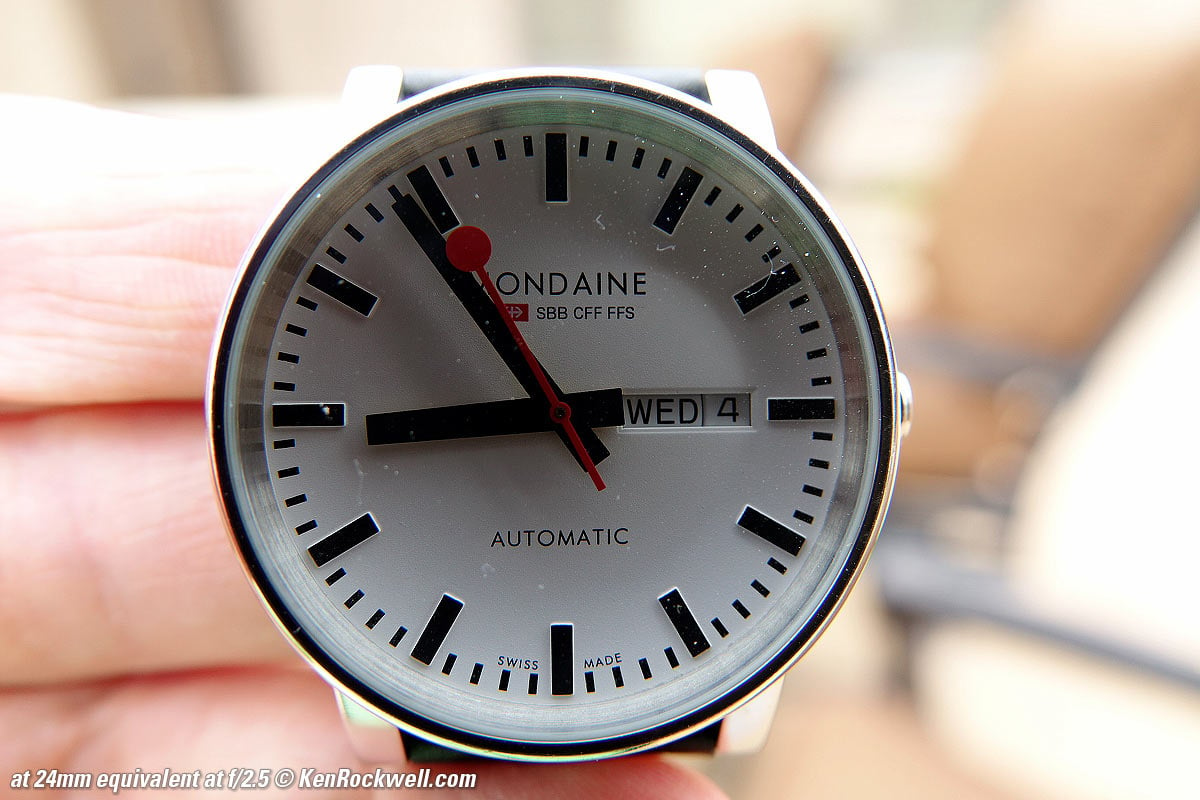
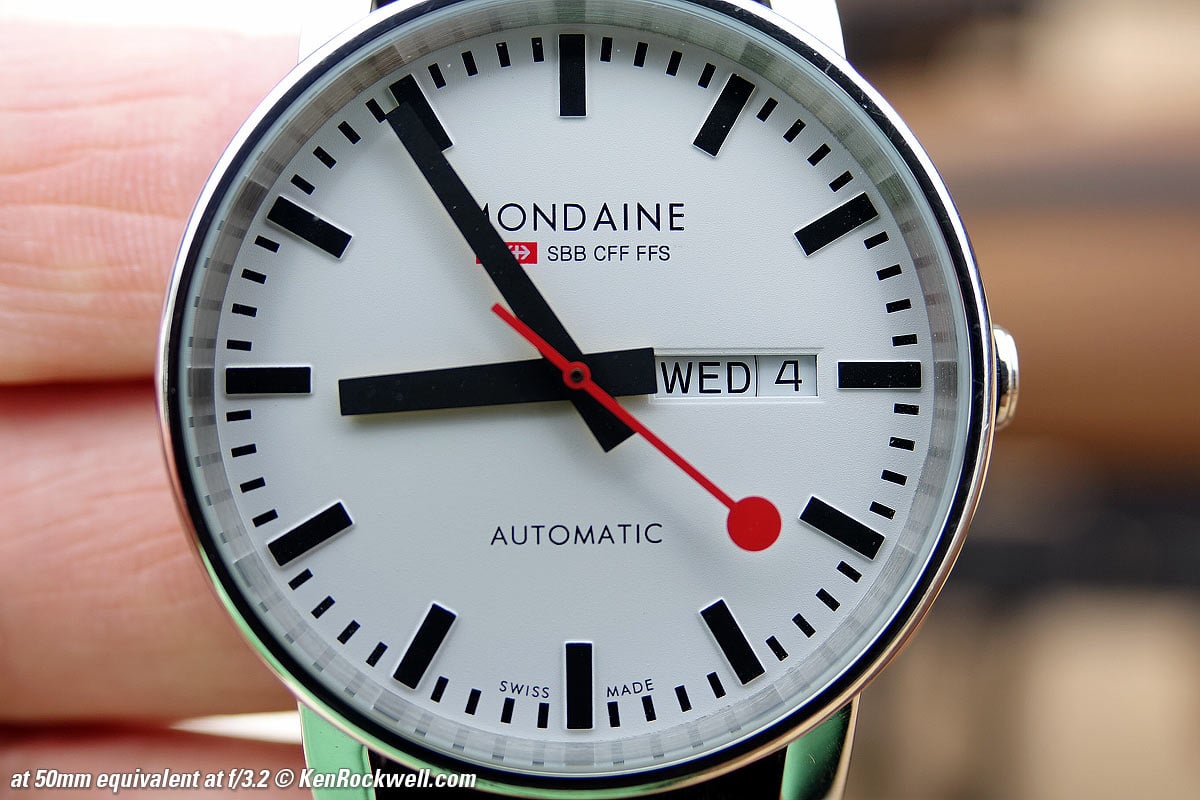
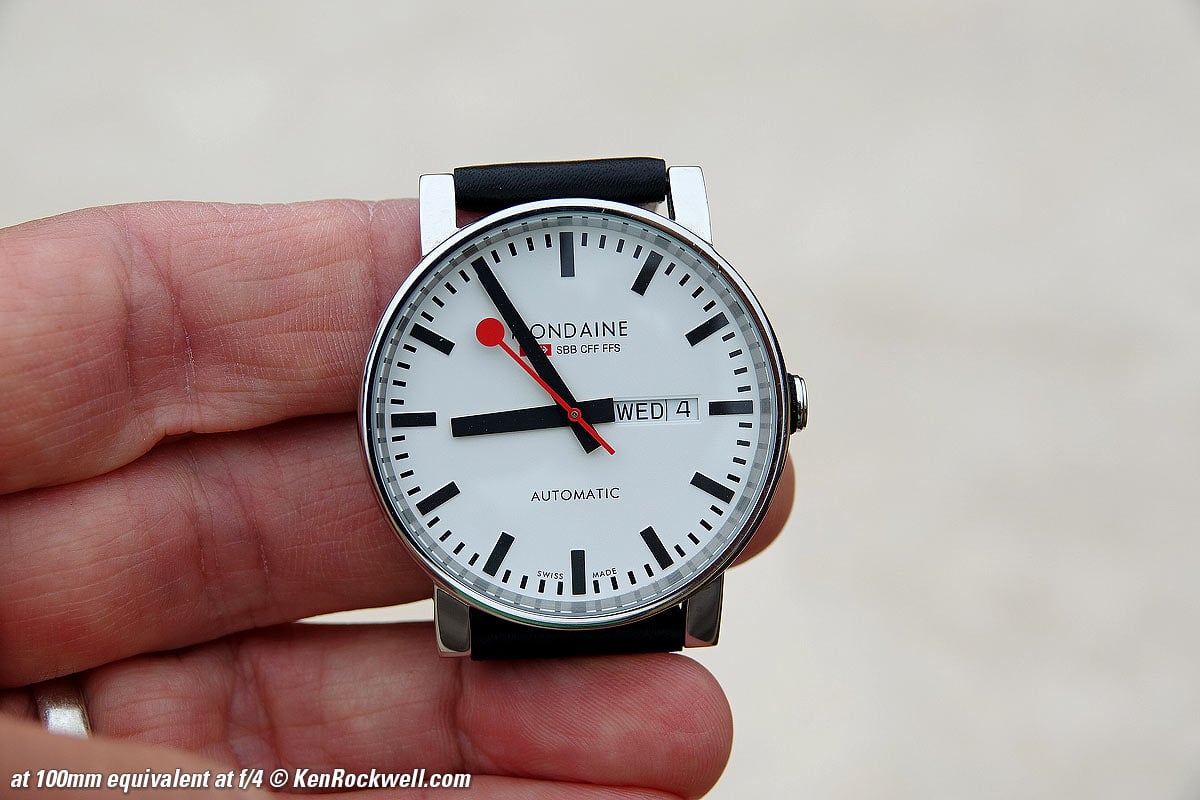
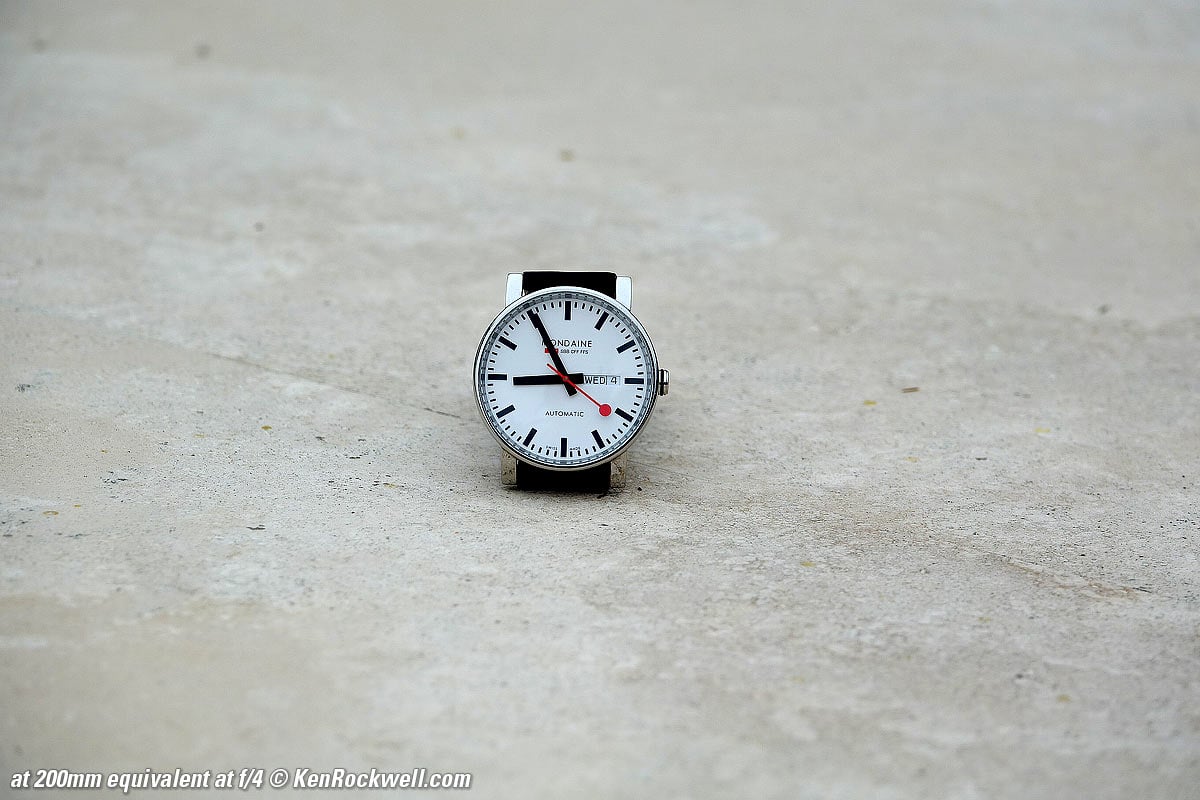
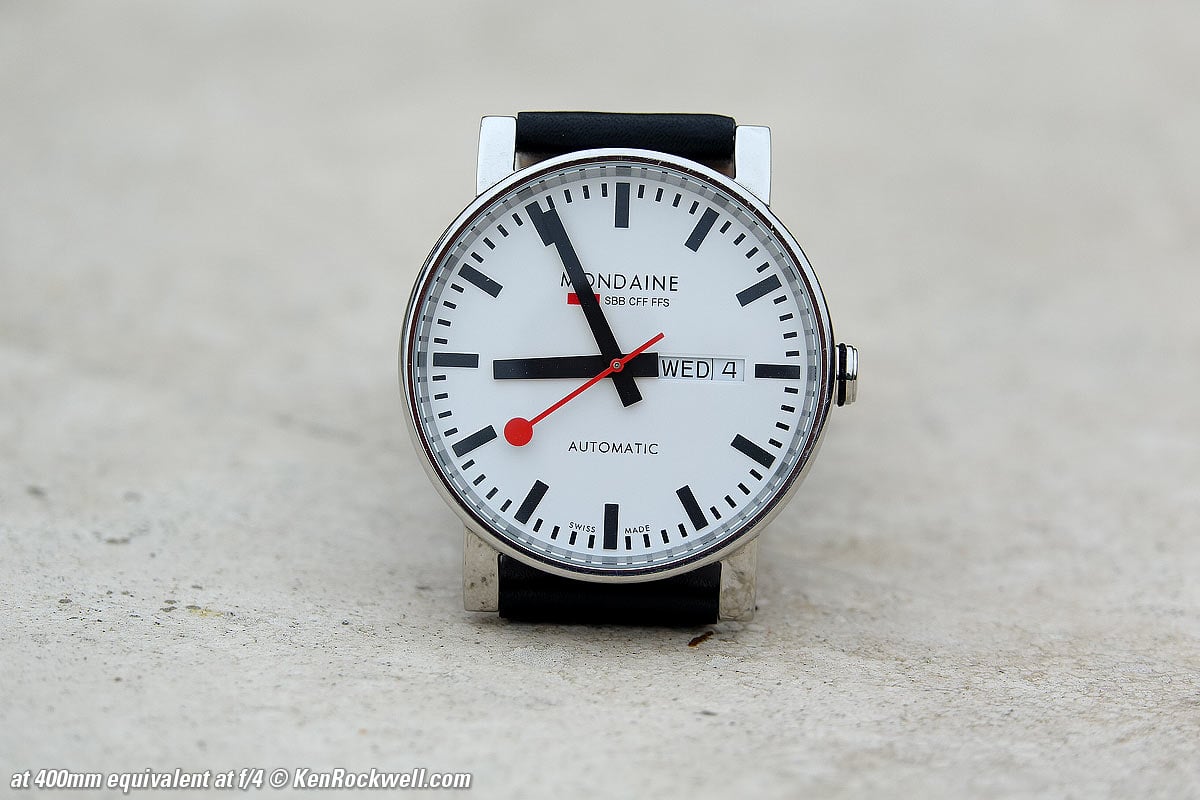
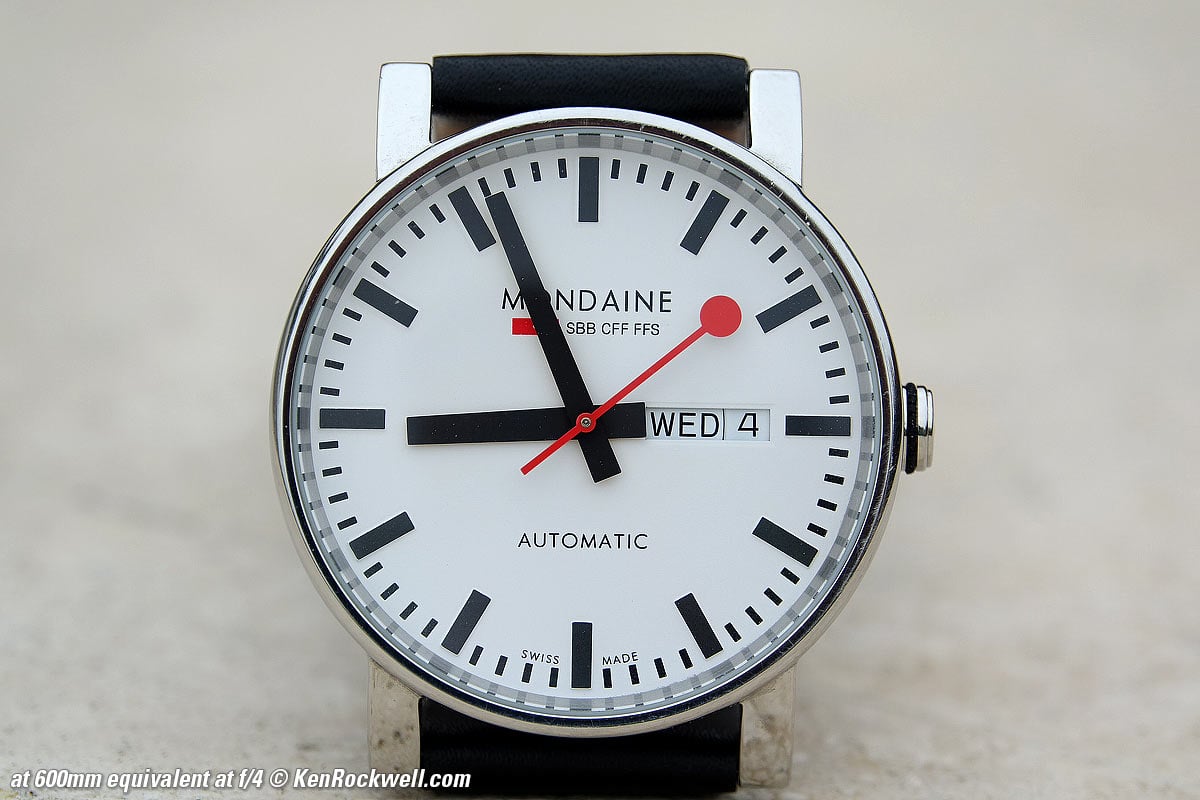
At 600mm, you don't have to be close to be close. Here's a 9-year-old's eyeball from several feet away. You can see me in the reflection:
Ryan's Eyeball. Sony RX10 Mk III, lens at 600mm equivalent (220mm actual), wide-open at f/4 at 1/125 at Auto ISO 1,600, Perfectly Clear. bigger.
Mechanics
The RX10 Mk III is mostly plastic, unlike the mostly metal RX100 Mk IV.
The only metal exterior parts of the RX10 III are its focus and zoom rings, exposure compensation knob, shutter button, strap lugs, tripod socket and screws.
Everything else is plastic. The top cover, flash housing, mode dial, zoom lever, power switch, top buttons, top LCD cover, lens filter threads, lens front barrel, aperture ring, lens rear barrel, focus mode lever, focus lock button, left and right sides, grip, both connector covers, memory card door, bottom cover and the battery door are all plastic.
The RX10 Mk III's lens has to motor out and then back in every time you turn it off or it goes to sleep. These complex and delicate plastic mechanisms eventually break or get jammed, but people usually replace these cameras at about the same time the warranty expires.
This isn't a LEICA M3 or Hasselblad 500 C/M or a that will still be working well 50 years from now. Like all digital cameras, this is something you buy to take loads of great pictures today and for the next few years, and then replace with something even better three or four years from now.
Noise and Vibration
The RX10 Mk III has a quiet leaf shutter; much quieter than a LEICA and certainly quieter than a DSLR.
Even better, the RX10 3 also has a completely silent electronic shutter. In this mode, the RX10 shoots completely silently; no one will know you've taken any pictures.
Sharpness
Fine Home at Dusk, 07 May 2016. Sony RX10 Mk III, lens at 240mm equivalent (87.1mm actual), no flash, wide open at f/4 at 10 seconds rested on a fence at ISO 100, Perfectly Clear. bigger or full resolution to explore on your computer (mobile devices rarely display the full resolution data properly).
It's super-sharp, even shot wide open as I did here. (Of course many of the trees were blowing around.) I didn't even have to turn off image stabilization for the 10-second exposure; it simply figured it out on its own as I rested the RX10 Mk III on a fence.
Katie draws at breakfast, 08 May 2016. (Sony RX10 Mk III, lens at 50mm equivalent (18.2mm actual), wide-open at f/3.5 at 1/250 at Auto ISO 100, Perfectly Clear.) Bigger or camera-original © file to explore on your computer (mobile devices rarely display the full resolution data properly).
I'm very impressed; the RX10 and its ZEISS lens is super sharp — better than most of Sony's SLR lenses!
The Program auto exposure usually shoots wide-open, and the darn thing is always super sharp throughout the entire frame, even at 600mm.
At 600mm the autofocus system is sometimes a little off; you may have to try a few shots to get perfect focus at 600mm if you're picky.
If you're not getting sharp pictures, you're doing something wrong, like letting your subject move or shooting through heat shimmer at longer zoom settings.
Of course it gets softer at high ISOs; noise reduction dulls the image as it reduces noise.
Olive Tree Sunset, 07 May 2016. Sony RX10 Mk III, lens at 425mm equivalent (155.4mm actual), no flash, wide open at f/4 at 1/250 at Auto ISO 160, Perfectly Clear. bigger or camera-original © file to explore on your computer (mobile devices rarely display the full resolution data properly).
Tree Trunk, May 2016. Sony RX10 Mk III, lens at 600mm equivalent (220mm actual), no flash, f/4 at 1/250 at Auto ISO 320, Perfectly Clear. bigger or camera-original © JPG file to explore on your computer (mobile devices rarely display the full resolution data properly).
Pine Needles, Yosemite Valley, 8:55 A.M, 15 May 2016. 2016 Sony RX10 Mk III at 400mm equiv. (151.1mm actual), f/4 at 1/400 at Auto ISO 100. bigger.
Deer eating, Yosemite, 6:28 P.M, 12 May 2016. 2016 Sony RX10 Mk III at 600mm equiv. (220mm actual), f/4 at 1/125 at Auto ISO 640. bigger or full-resolution file to explore on your computer (mobile devices rarely display the full resolution properly).
Climber on the face of El Capitan above Yosemite Valley, 12:06 P.M, 13 May 2016. 2016 Sony RX10 Mk III at 600mm equiv. (220mm actual), wide-open at f/4 at 1/800 at Auto ISO 100. bigger.
Crop from above image — shot from about a mile away!
Jetliner 35,000 feet above Yosemite Valley, 11:48 A.M, 13 May 2016. 2016 Sony RX10 Mk III at 600mm equiv. (220mm actual), f/5 at 1/1,000 at Auto ISO 100. bigger.
Crop from above image. You almost can read the tail number! Not bad for an object 7 miles away shot with a small hand-held camera.
Image Stabilizer
The stabilization system is great.
It gets sharp shots hand-held at 600mm, it also stabilizes the image in the finder to make it easy to hand-hold and frame images at ultra long zoom settings.
There's no need for a tripod here.
Bravo!
Running River, Yosemite, 7:26 A.M, 13 May 2016. 2016 Sony RX10 Mk III at 185mm equiv. (67.5mm actual), f/8 at 1/25 hand-held at Auto ISO 100, split toned print. bigger.
The image stabilizer makes it trivial to use slow shutter speeds with long focal lengths to shoot flowing water hand-held.
God Beams at the Base of Yosemite Falls, 8:07 A.M, 13 May 2016. 2016 Sony RX10 Mk III at 52mm equiv. (18.9mm actual), f/8 at 1/30 hand-held at Auto ISO 100, split toned print. bigger.
Hawaiian Torch at Sunset over Lahaina, 19 June 2016. 2016 Sony RX10 Mk III at 24mm equiv. (8.8mm actual), f/11 at 3 seconds hand-held at Auto ISO 500. bigger.
In this case I held my RX10 III against the railing, and shifted the exposure program to f/11 to get some depth-of-field. This resulted in a 3 second exposure, and it's sharp! Otherwise I'd have needed ISO 45,000 to use 1/30 at f/11.
Sunstars
The rounded diaphragm rarely makes sunstars, except at f/16:
At 55mm (150mm equivalent) at f/9. bigger.
At 55mm (150mm equivalent) at f/13. bigger.
At 55mm (150mm equivalent) at f/16. bigger.
Zooming
The incredible lens zooms very well. It's easy to set precise framing with the zoom ring, and just as easily you can use the little zoom lever in front of the shutter button to get in range quickly. Unlike camcorders, the zoom rings and lever only work at one speed each, with the lever faster than the ring.
At the lower 10MP and 5MP image sizes, it zooms through 1.5x or 2x "digital" zoom, while in fact it's smart enough simply to be doing some clever cropping of the full-resolution 20MP image and reformatting it to 10MP or 5MP; in other words, 1.5x or 2x zoom really does get to the equivalent of 900 or 1,200mm without losing sharpness at the 10MP and 5MP image settings, which are where I usually shoot.
The finder reports the equivalent focal length as you zoom from 24mm to 600mm, while the file's EXIF (and file information in Playback mode) reports the actual focal lengths (8.8 to 220mm).
In A mode, the lens always uses the aperture set on the aperture ring from f/4 to f/16. The lens has a variable maximum aperture, but the aperture ring has fixed markings. If you set wider than f/4 and the lens can't go that wide at longer zoom settings, no worries, the lens simply uses its widest aperture.
I find the zoom ring is too far back; sometimes I grab the front (focus) ring, which doesn't zoom the lens.
Movies
I didn't spend much time with movies. Sony's been defining the state-of-the-art in video cameras for way over 50 years, so I doubt there's much I can add.
Not only does it shoot all sorts of high definition and 4K content; it also runs at frame rates up to 1,000 FPS for slow motion.
More at Usage.
Top LCD
The top LCD is medium sized and shows some basic information.
It has a dedicated button for a blood-orange LED backlight.
I never use or need this LCD, which is a throwback to 35mm SLRs. It's there mostly to make this camera look fancier; no one needs a top LCD anymore since everything is shown better on the rear LCD or the finder.
It goes completely blank when the camera is turned off. It would be more useful if it showed battery state and shots left when off, as some cameras do.
Rear LCD Monitor
The LCD is sharp, bright and colorful.
It's bright enough to see in direct sunlight; about as bright as an iPhone 6s Plus; which is pretty bright.
It has no auto brightness control, but always seems to look well in any light.
I rarely use the rear LCD; I prefer the electronic finder, but to each their own.
The rear LCD pivots up or down, but not left or right, and it can't flip far enough for self-portraits.
Playback
You have to turn on the RX10 and let the lens motor out to play. You can't just hold the PLAY button.
Playback is fast and fine; no difference here from other Sony models.
The finder and rear LCD have 4:3 aspect ratios, so the full 3:2 frame fits with dark bars across the top and bottom.
If you shoot 4:3 crops, the image has black bars on the sides while shooting, but in playback, the 4:3 images grow compared to standard 3:2 images to fill the entire screen or EVF.
Square images have bigger black bars on the sides while shooting, but fill the screens vertically when played back.
All image shapes fill the screen when zoomed.
Data
Card Formatting
It takes 9.5 seconds to format a Sony 64GB SDHC card.
Cards are not titled properly. They come up as "Untitled" instead of being titled properly like "SONYRX10" as they should.
Image Sizes and Crops
At lower resolution settings, the RX10 Mk III is nice in that it tends to retain the same amount of megapixels as the crops are changed. In other words, if shooting at 10 megapixels as I usually do, you get 10 megapixels at either of the native 3:2 or cropped 4:3 settings.
JPGs
JPG files are expertly coded; file sizes vary with image complexity for constant quality.
They are tagged at 350 DPI.
Daily Folder Creation
I LOVE how I can set it to create a new folder each day. See Usage for how.
WiFi
WiFi works fine for picture transfer to an iPhone, but it takes a while to set up because the setup procedure is poorly designed.
It tells you to do all sorts of crazy things in obtuse language, but if you're patient and actually get it going, it works as well as other apps for picture transfer.
Clock Accuracy
Every sample will be different. Mine lost 13.5 seconds in 51 days, or 265 mS per day.
This is slow 8 seconds per month, which is typical.
Power & Battery
Battery life is swell; I never run it down in a day. I don't need a spare battery so long as I can charge it each night.
So long as I'm full in the morning, I'm good all day.
For instance, I shot all day and made 131 shots, and my battery still read 85% full. I get the best life turning the RX10 off when I'm done any group of shots rather than letting it time-out after a minute.
Even better, when shooting sports as continuous sequences without playing each one back, I made 1,782 shots one morning and the battery still read 54%!
It takes about 4 hours to charge from 15% to 100%, during which it draws about 480 mA.
When full, it continues to draw about 40 mA idle current.
Compared
Top Sample Image Files Intro Specifications
Accessories USA Version Performance
Compared Usage Recommendations More
NEW: All Sony Cameras Compared.
I'd get mine used at this link to it at eBay (How to Win at eBay), or I'd get mine at Amazon.
Compared to DSLRs
DSLRs won't have a lens like this. There is no DSLR lens that covers the equivalent of 24~600mm, and those that come close, like 28~300mm lenses, are only f/5.6. They're all about as sharp.
Better DSLRs will have much better sets of dedicated controls allowing us to set them more quickly without having to piddle in all the menus of the RX10. Basic DSLRs will need the same sorts of menus as the RX10 to make basic settings.
Canon DSLRs are usually faster to set and configure, while too many Nikons still lack camera memory recalls and only have idiotic "settings banks" instead, so I find the RX10 Mk III faster to configure for each shot than a Nikon D500!
I love shooting the RX10M3. It takes a while to set at first, but once set, it's fast and fun.
While I prefer the colors I get from my DSLRs, the RX10 is just as sharp as my DSLRs, and freer from distortion. I'd have no problem using the RX10 in my studio for macro shots and just about everything I need to shoot.
Compared to the Sony RX100 Mk IV
The RX100 Mk IV is the same thing, but with a faster lens (f/1.8~2.8), a more limited zoom range (24~70mm) and no exposure compensation dial. They both handle the same, with the same menu and control system and very similar controls.
The RX100M4 is smaller, lighter, less expensive and better made with more metal, but only zooms to the equivalent of 70mm, not 600mm.
The difference is all in the lens, which defines the size and weight of each camera, as well as the construction mostly of plastic or metal.
Compared to the Sony A6300
The A6300 is very similar, and very different.
The A6300, with its kit 16-55mm lens, is very similar to this RX10 III, except smaller and with a more limited zoom range. They both handle the same, with the same menu and control system.
The A6300 has interchangeable lenses and a much larger sensor, but I don't see any significant difference in picture quality; the colors, image rendition and handling are pretty much the same in actual use.
The A6300 has no exposure compensation dial, but it's easy to program its rear dial for this.
The best thing about the A6300 is that it has dedicated memory 1 and memory 2 instant recall settings on its mode dial. This greatly speeds up swapping between snapping people or snapping places and things, which is very important to me.
If you need to go to beyond the equivalent of 70mm without changing lenses, the RX10 III is the winner, but if a more reasonable zoom range is good enough, I prefer the A6300 and kit 16-55mm lens over either of the other two. I'd prefer the RX10 III to an A6300 and two zooms; the A6300 is a fun camera (not serious like DSLR), and therefore I prefer one zoom over having to swap between a normal and a tele zoom. If I want to carry lenses, I'd prefer a real DSLR like a small Canon or Nikon instead.
Usage
Top Sample Image Files Intro Specifications
Accessories USA Version Performance
Compared Usage Recommendations More
I'd get mine used at this link to it at eBay (How to Win at eBay), or I'd get mine at Amazon.
Memories
Here's how and why I set my memories.
I set these by first setting the camera as I like, then MENU > Camera 9 > Memory > (select location to which you'd like to save the camera's current setting) > and press the center rear button to save the settings there.
Each memory also recalls your zoom setting, so I set mine about midway between tele and wide so I'm at a normal setting at first.
Memory Setting |
Where Set* |
1 |
2 |
3 |
Subject |
Places & Things |
People |
Sports & Action |
|
Resolution |
Menu > Camera 1 | 10 MP** |
5MP** |
5MP** |
Creative Style |
MENU > Camera 5, or Rear Fn button, then bottom middle of screen | Vivid with +3 Saturation |
Standard, with +1 Saturation | Standard, with +1 Saturation |
Auto ISO minimum speed |
MENU > Camera 4 | "Slow," which varies automatically with zoom setting; typically 1/8 at wide and 1/30 at tele | 1/125 to freeze people | 1/250 or 1/500 to freeze action |
Advance mode |
Rear Fn button, then bottom left of screen | Single Shooting |
Continuous Shooting |
Continuous Shooting |
* You can reprogram many of these to come up elsewhere for your convenience.
** 5 MP is more than enough for anything and increases my workflow speed and throughput. I only use 10MP for place and thing photos, but even 5MP is plenty. No one needs 20MP; it slows your computers. I have no problem selling 5MP files to McDonald's and Merck Pharmaceuticals for thousands of dollars, so don't worry.
When you change anything after you've recalled a memory setting, it stays changed until you recall another setting. Turning the RX10 III off and on won't reset the recalled memory setting; you have to recall a new one.
Hints
If you change a setting, the RX10 remembers it even if you turn the camera off and back on. If you want to recall the originally saved preset, you have to select it again.
Sony's menu system is poor, so you'll wind up erasing and resetting these by accident for a while until you realize that MEMORY really means ERASE MEMORY.
If you're trying to recall a setting, only press things that say MEMORY RECALL. Be sure it says RECALL, or you'll erase your carefully set settings in one click.
Memory Recall
You'll need an SDXC card to recall your memory settings. What? Even if you aren't recording video, Sony demands an SDXC card for recording 4K video, and since the RX10 III defaults to a 4K video setting, attempting to recall a saved preset without having an SDXC card won't work; it won't recall your setting.
Either use an SDXC card, or be sure to program the video to a format that will work with slower cards.
You can't program a button to recall setting presets. If you assign this by pressing MENU > Gear 5 > Custom Key(Shoot.) > Custom Button 2 > Memory, that function SAVES the current state to that memory location; it doesn't recall it. Oops; Sony needs to add a way for fast recall, not fast saving.
I set my Fn button to display a Memory Recall option in MENU > Gear 5 > Function Menu Set.
I find the fastest way to recall a Memory Recall setting is to turn the top dial away and back to the MR position, select the setting I want, and then hit the center button to get to it.
Fast Menu Guide
There is no My Menu or any way to organize the menus, so expect to have to pore through everything every time to find anything.
Here's my cheat sheet of where I find what I actually need:
Camera 1: Basic still image resolution, shape (aspect ratio) and quality settings. Also adjusts Dual Rec (stills recoded while rolling video) settings.
Camera 2: Video and Panorama settings.
Camera 4: ISO and Auto ISO
Camera 6: Long Exposure NR and Smile/Face Detect.
Camera 9: Memories. "Memory recall" is one way to recall saved settings, but "Memory" actually means to erase stored settings and replace them with however the camera is currently set.
Gear 5: Here's where we can assign what buttons and dials do; see the next section.
Play 1: Set Display Rotation to "Auto" and playback rotates as you turn the camera, just like an iPhone.
Suitcase 1: Go here to turn the beeps off.
Suitcase 4: Time and date.
Suitcase 5: Format, copyright info and file prefixes. I set my files to begin "RX3", so I know with what camera I shot them.
Suitcase 6: "Set "Folder Name" to "Date Form" so that the RX10 starts a new folder each day.
Face Recognition Auto Focus
This is off by default.
Set this to ON (MENU > Camera 6 : Smile/Face Detect > Face Detection ON), otherwise face detection doesn't work.
Sports
For sports, set facial recognition ON as above.
Set the AF mode switch on the front of the camera to C, for continuous focus.
Set the advance mode (Fn > wind the box at the bottom left for advance mode) to continuous (the bearded rectangle).
Now just hold down the shutter button and the RX10 Mk III does the rest, and motors along with a silent shutter.
Hint 1: You can't zoom with a half-pressed shutter. You only can zoom with your finger off the shutter button. It may help not to try to use the zoom ring, since it will be ignored while you're rolling. f you use the lever at the shutter button you'll have to take your finger off the shutter to zoom — the only way it works.
Hint 2: Turn off Image Review so the viewfinder isn't trying to show what you just shot while you're still shooting it. Trust me, it works much better with Image Review off.
Hint 3: Since you'll be zoomed way in, it's tough to see what and where things are moving. I get much better results shooting with both eyes open. With practice you can shoot even with each eye seeing a different magnification, and keep the camera both zoomed-in and on-target.
C1, C2 and C3 Buttons
Using MENU > Gear 5 > Custom Key (Shoot), I set these buttons to:
C1: Aspect Ratio (cropping)
C2: Image Size (Resolution)
C3: Zoom Assist (more about this feature below)
Exposure Mode
I almost always use P (Program), which favors wide apertures in the RX10.
No worries if I want smaller apertures; I just flick the rear dial until I get the combination of aperture and shutter speed I prefer.
Silent or Leaf Shutter
The RX 10 Mk III selects these based on your advance mode settings. I never noticed a separate setting; my RX10 shoots silently in the continuous advance modes, and uses the almost-silent leaf shutter in the single-shot advance mode.
Macro
The RX10's Macro performance is spectacular at wide and long tele settings, but not in the midrange from about 100~300mm.
No worries; if you can't get it to focus close, just zoom out, or stand farther away and zoom in.
It can focus so close at 24mm that your subject will be sitting against the lens, and therefore in the dark. Put the subject a little farther away so you can get light on it, and zoom in to fill the frame.
Dual Record
There are two Dual Record options. They have the same name, but do entirely different things.
One records stills while rolling video; the other records a second lower bitrate video file in parallel with a 4K file.
Dual Rec (stills with video)
You can get 17 MP stills while rolling video, but only with HD video. The camera's processors are so busy shooting 4K that the stills are simply the native 8MP image size of 4K.
You set this option in MENU > Camera 1 > Img. Size(Dual Rec) and MENU > Camera 1 > Quality(Dual Rec).
Dual Video Record
This records a second lower-bit rate video file when recording 4K video. The RX10 records a low-rate (3 MBPS) 1280/30p MP4 file for online or other basic use at the same time as the full resolution file. You get this format for the low-rate file and that's it; you can't adjust it.
You set this in MENU > Camera 2 > Dual Video REC > ON.
This 3 MBPS Dual Video Record is the lowest bit rate you can get, but this trick only works in XAVC S 4K format. Otherwise the slowest bit rate is 6 MBPS in other modes.
Video
Card Types
You need to use an SDXC card to record 4K video. Sony does this because you need to use EXFAT card formatting to record files bigger than 4GB, and that requires an SDXC card. Sony figures that you'd rather not have the camera stop, or split the take into 2 files, when the file size reaches 4GB, so that's why Sony requires the SDXC card.
HD video is perfectly happy with FAT32. XAVC S, used with 4K video and high frame rates, also demands EXFAT.
Video Settings
There is no video settings menu.
Video rate, file and format settings are hidden in MENU > Camera 2.
The video P, A, S, and M exposure modes are even more well hidden. To set them, set the top dial to the Movie mode (35mm film frame icon), press Fn on the back of the camera, select the bottom right on-screen 35mm frame icon, and then select these with the rear control dial. Whew!
High Frames Rates and Slow Motion (HFR)
"HFR" on the mode dial and menus means high video frame rates.
These are set in MENU > Camera 1 > HFR Settings.
The Slo-Mo options capture clips at high frame rates to the sensor's ultra high-speed DRAM, and then encodes and records this data as a video file which will play at a slower, normal, frame rate.
The "Record," "Frame Rate," "Priority" and "Record Timing" settings need some explanation:
The "Record" setting (MENU > CAMERA 1 > HFR Settings > Record Setting) selects the rate at which the file will play back.
The "Frame Rate" setting (MENU > CAMERA 1 > HFR Settings > Frame Rate) selects the capture rate of 240, 480 or 960 FPS. The higher the frame rate, the slower the motion, but potentially at a lower resolution.
The Priority Setting (MENU > CAMERA 1 > HFR Settings > Priority Setting) simply selects whether the camera shoots for 4 seconds (Quality Priority) or for 2 seconds (Shoot Time Priority).
Here's the coolest part: since the RX10 III is grabbing all this high speed sensor data on the sensor's own DRAM, the RX10 allows you to start recording after your action has happened! It will continuously buffer video, and stop and record whatever just happened for a couple of seconds before you press the shutter! This makes it easy to catch a slo-mo of something random happening.
You set this in MENU > CAMERA 1 > HFR Settings > REC Setting. Start trigger is normal (records for a couple of seconds after you press the shutter). End Trigger records the couple of seconds before you press the shutter!
Of course these couple of seconds can stretch out to minutes of playback time depending on how you set it.
180º Shutter Angles
Like all video cameras, exposure times get shorter in good light, leading to choppier video that can start to look strobed.
If you want exposure times to approximate 180º shutter angles to render motion more smoothly to look more like film, use a 72mm neutral density filter.
Autofocus Lock
AF lock button and mode switch, Sony RX10 Mk III. bigger.
There is an unmarked button on the side of the lens where it meets the body. Hold it to lock the autofocus.
AF Mode Display in Finder
You have to set the DISP mode to show enough details to see this.
In the simpler display modes I use the RX10 isn't smart enough to blip these up for a moment as I move the switch; I have to stop and look at the front of the RX10.
Silent Mode
I never did figure out where to set this.
When set to Continuous shutter mode, it shoots completely silently. No one even knows I took any pictures.
I set this for my people pictures, and unexpectedly when I hand my camera to a stranger, they wind up firing off 24 shots, all not realizing that the camera was shooting. This is great because it means I get quite a few shots from which to select instead of just one. This shot was made this way:
Dad and kids in an E400 convertible. (Sony RX10 Mk III, lens at 24mm equivalent (8.8mm actual), no flash, f/2.5 at 1/124 at Auto ISO 320, Perfectly Clear.) bigger.
Bulb Mode and Time Exposures
Long time exposures out to at least several minutes are easy to do. Set Bulb mode and use an ordinary screw-in cable release to hold the shutter open as long as you like.
Bulb mode is well hidden. To set the Bulb mode:
1.) Set M on the mode dial.
2.) Set Single frame advance mode (press the rear Fn button and look on the screen, usually at the lower left, for the advance mode icon). If you leave the camera at any of the continuous, self timer or other advance modes, the Bulb mode simply won't appear in the next step!
3.) Use the rear dial to select Bulb mode one click slower than the 30 second manual shutter setting.
4.) Use an ordinary screw-in cable release to hold the shutter open as long as you like.
5.) I use a dedicated stopwatch I keep in my bag to time exposures; your iPhone has a stopwatch and a count-down timer to help you do this as well.
6.) Release the shutter when done.
See the Long Exposure note next:
Long Exposure NR
The RX10 III has Long Exposure NR set ON by default, which means that the RX10 will hang-up and display "PROCESSING" for as long as your original exposure before you can do anything else. It's making a second equally long exposure with the shutter closed to subtract this from the actual image to cancel-out any temperature or sensor-induced fogging, but it also means that you will be waiting around a long time after any long exposure. Here's how to turn it off:
MENU > Camera 6 > Long Exposure NR.
Try it both ON and OFF and see if you notice any difference. It will reduce weird color tints at the sides of images or hot pixels; it doesn't reduce high ISO grain or noise. If you have none of these problems, you don't need to use Long Exposure NR and can save a lot of waiting around in the dark.
Zooming
I prefer to use the zoom lever around the shutter for fast zooming, and the zoom ring around the lens for precise framing.
Zoom is electronic, and you can't zoom with your finger half on the shutter.
It turns back on at your previous zoom setting, even if it was 600mm, so if you don't expect to be needing 600mm for the next shot, zoom out to a wider setting before you turn it off to save yourself from having to wait for it to motor out the next time.
Zoom Assist
You can program the C1 or C2 button to zoom out as you hold it, and zoom back to where you were when released.
This way if you lose sight of a subject while zoomed-in, it's easy to find it again.
Assign this by pressing MENU > Gear 5 > Custom Key(Shoot.) > (select a Custom Button to which to assign this) > Zoom Assist
Digital Zoom
Sony has many confusing Digital Zoom options.
Clear Image zoom is the best.
Élan
People look foolish looking at the back of a camera while in public. People instinctively know that anyone who has to look at the back of his camera while he's out shooting is clueless; either he doesn't have his camera set properly or has little confidence that his images are any good.
If you must look at menus or played-back images while in public, use the electronic finder. You still look as if you're shooting something exciting.
Power and Battery
I get much longer battery life turning it off after each shot. Turning it back on and letting the lens motor out uses less power than leaving the RX10 on and letting it time-out after a minute.
Of course if you're making a few shots leave it on, but if you've made your shot and are off looking for the next one, turn it off after each.
Watch Your Fingers
Keep your fingers out of a collapsing lens, otherwise it can and will catch your finger as it tries to close.
If your finger does get caught, it will open back up automatically.
Recommendations
Top Sample Image Files Intro Specifications
Accessories USA Version Performance
Compared Usage Recommendations More
I'd get mine used at this link to it at eBay (How to Win at eBay), or I'd get mine at Amazon.
Get one; I'm astounded at how useful this is. It's especially for people who need the complete lens range in one zoom; if a 24-70mm is enough, the RX100 MK IV is the same thing in a smaller package.
While I can see slight differences in color rendition between the RX10 III and my DSLRs, few other people will, and the RX10 Mk III's technical qualities are better than 99% of the people who will use it.
Sony has come a long, long way in recent years, and this RX10 Mk III may now be the only camera you need for just about everything.
Protection
I never use the hood; it doesn't actually do anything. I leave my hoods in their boxes for resale time.
I don't use a lens cap; I use a clear glass UV filter and put the RX 10 in my bag. I leave the cap in the box for resale time.
The best filter is the 72mm Hoya HD3 UV. It's expensive, but filters last for decades. This filter is shatterproof, waterproof and fingerprint proof.
The Hoya 72mm UV Multicoated filter is just as good, but not everything-proof like the HD3.
Many people also like the B+W 72mm 010 UV (single coated) or B+W 010 UV Multicoated.
All of these, even the least expensive Hoya 72mm UV Multicoated, are wonderful. The reason to pay more is to get a filter more resistant to breakage or fingerprints. I love the 72mm Hoya HD3 UV, and you'll be using it for decades to come.
Multicoated filters are less likely to create ghost images when shot into bright lights. More at Filters.
Where to Get Yours
I'd get mine used at this link to it at eBay (How to Win at eBay), or I'd get mine at Amazon.
This all-content, junk-free website's biggest source of support is when you use those or any of these links to approved sources when you get anything, regardless of the country in which you live. Sony does not seal its boxes in any way, so never buy at retail or any other source not on my personally approved list since you'll have no way of knowing if you're missing accessories, getting a defective, damaged, returned, store demo or used camera. I use the stores I do because they ship from secure remote warehouses where no one gets to touch your new camera before you do. Buy only from the approved sources I use myself for the best prices, service, return policies and selection.
Thanks for helping me help you!
Ken, Mrs. Rockwell, Ryan and Katie.
More Information top
Top Sample Image Files Intro Specifications
Accessories USA Version Performance
Compared Usage Recommendations More
I'd get mine used at this link to it at eBay (How to Win at eBay), or I'd get mine at Amazon.
Sony's RX10 III users guide PDF.
© Ken Rockwell. All rights reserved. Tous droits réservés. Alle Rechte vorbehalten.
Help Me Help You
I support my growing family through this website, as crazy as it might seem.
The biggest help is when you use any of these links when you get anything. It costs you nothing, and is this site's, and thus my family's, biggest source of support. eBay is always a gamble (see How to Win at eBay), but all the other places always have the best prices and service, which is why I've used them since before this website existed. I recommend them all personally.
If you find this page as helpful as a book you might have had to buy or a workshop you may have had to take, feel free to help me continue helping everyone.
If you've gotten your gear through one of my links or helped otherwise, you're family. It's great people like you who allow me to keep adding to this site full-time. Thanks!
If you haven't helped yet, please do, and consider helping me with a gift of $5.00.
As this page is copyrighted and formally registered, it is unlawful to make copies, especially in the form of printouts for personal use. If you wish to make a printout for personal use, you are granted one-time permission only if you PayPal me $5.00 per printout or part thereof. Thank you!
Thanks for reading!
Mr. & Mrs. Ken Rockwell, Ryan and Katie.

